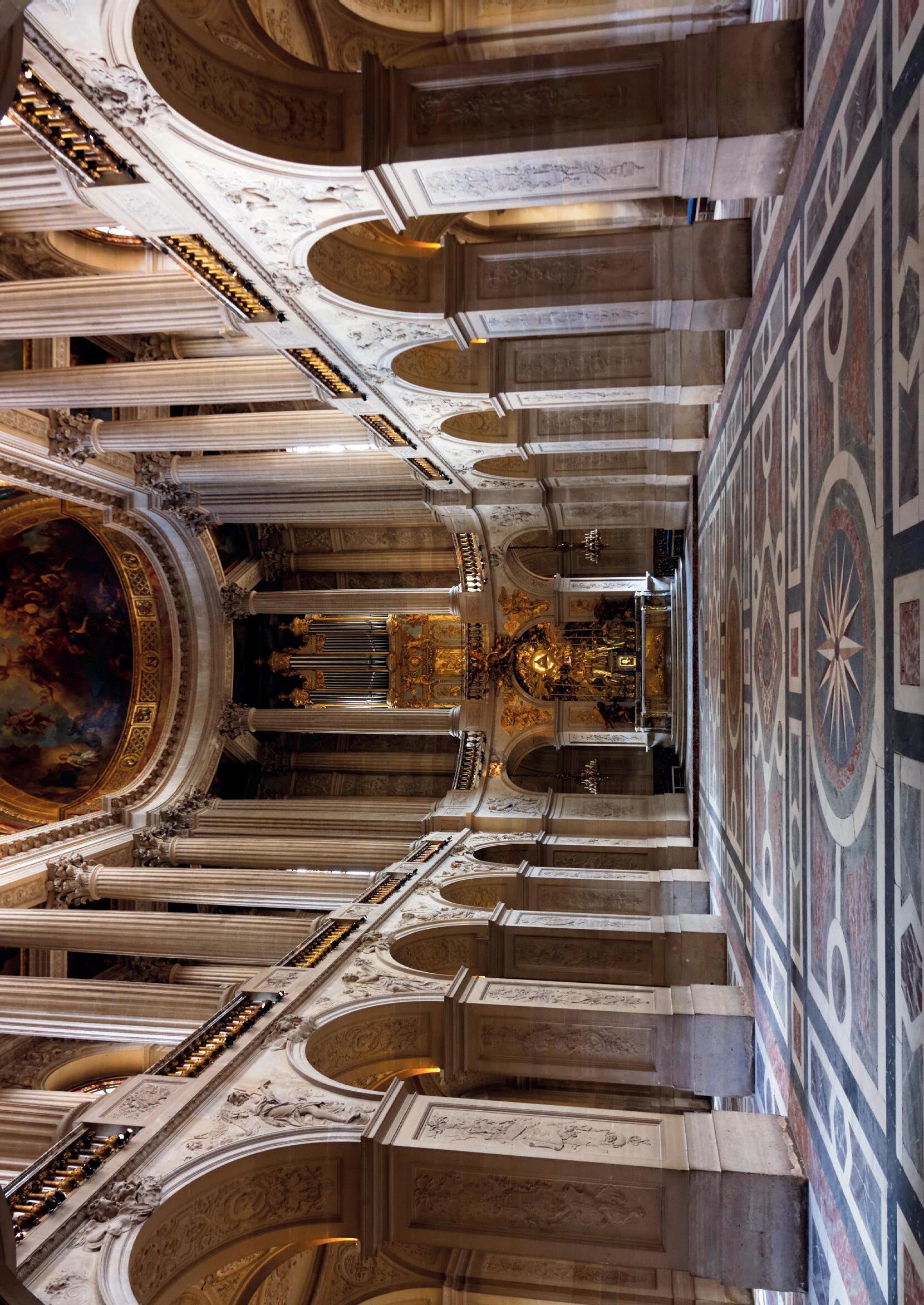CATHEDRAL MUSIC
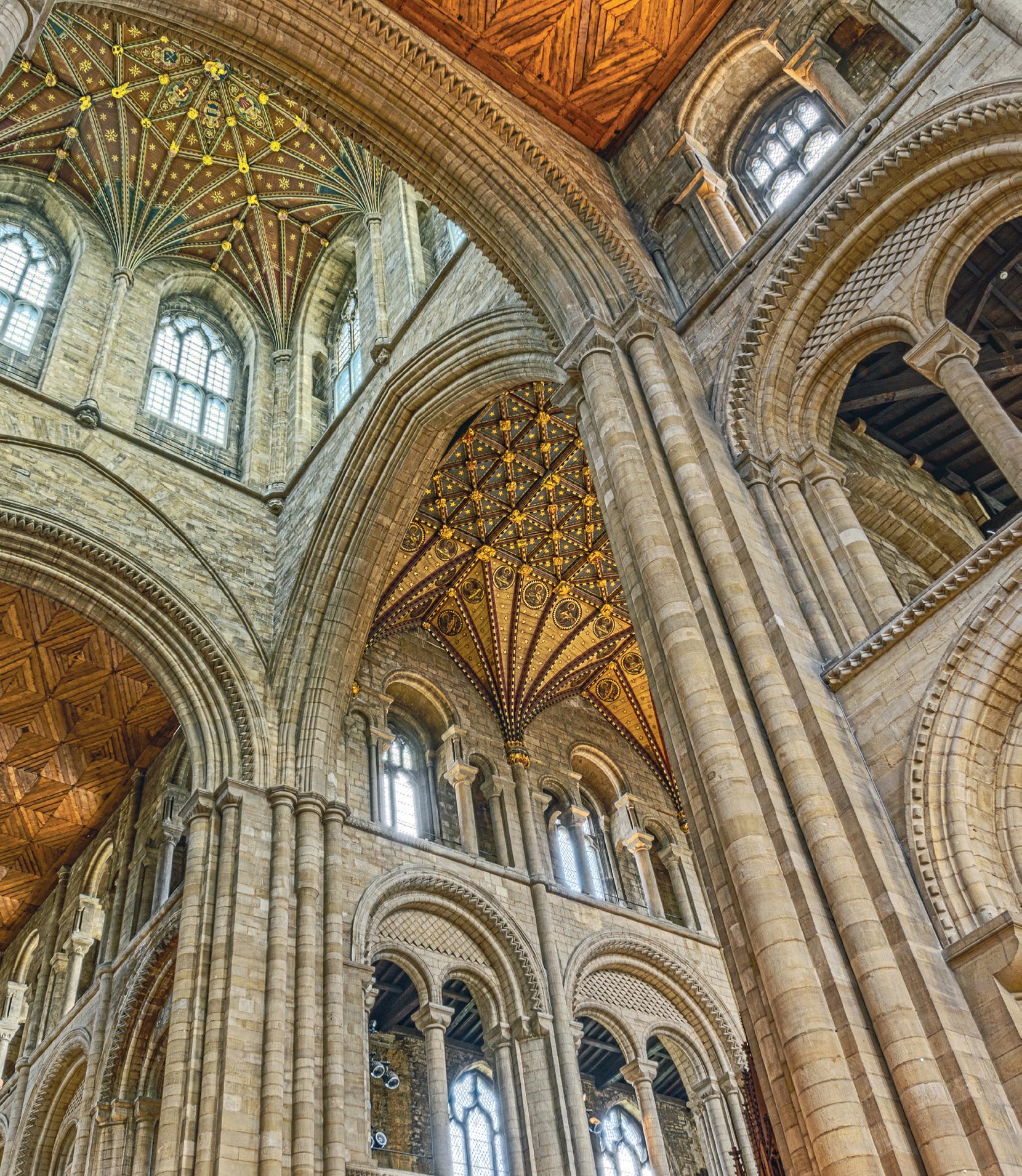




Whichever organ you buy from us, you can be assured of top sound and build quality, our technical expertise, great attention to detail and the best in customer service. We invest in our instruments so you can invest in your future. These are serious instruments for serious people, people like you. Explore our websites and then fall in love with the organ of your dreams in our showrooms.
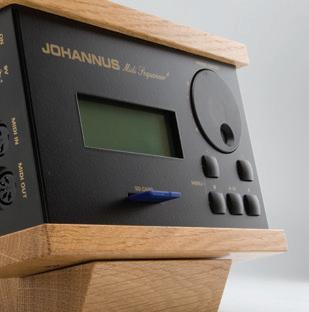



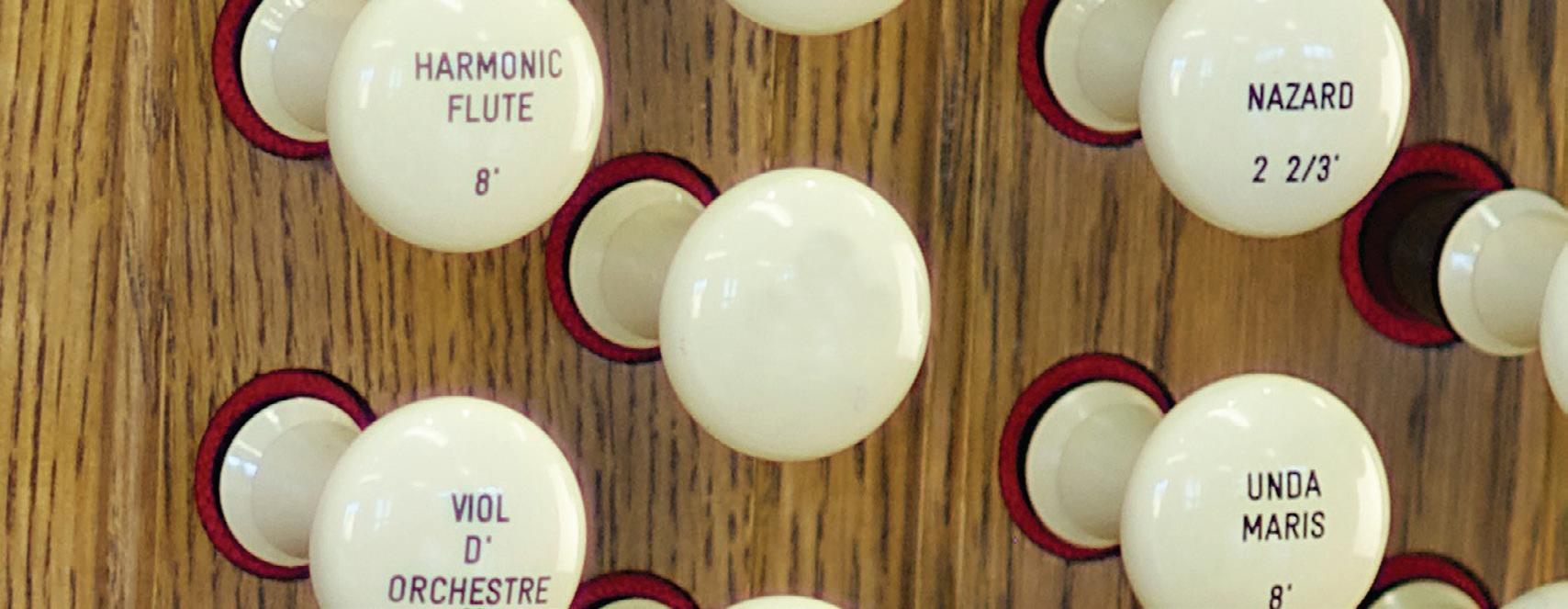 Makin | Copeman Hart | Johannus | Rodgers
Makin | Copeman Hart | Johannus | Rodgers
CATHEDRAL MUSIC is published twice a year, in May and November
ISSN 1363-6960 NOVEMBER 2017
Editor
Mrs Sooty Asquith, 8 Colinette Road, London SW15 6QQ sooty.asquith@btinternet.com
Editorial Advisers
David Flood & Matthew Owens
Production Manager Graham Hermon grahamhermon@lineone.net
FCM Email info@fcm.org.uk
Website www.fcm.org.uk
The views expressed in articles are those of the contributor and do not necessarily represent any official policy of Friends of Cathedral Music. Likewise, advertisements are printed in good faith. Their inclusion does not imply endorsement by FCM.
All communications regarding advertising should be addressed to: Tatton Media Solutions, 9 St Lawrence Way, Tallington, Stamford PE9 4RH 01780 740866 / 07738 632215 wesley.tatton@btinternet.com
All communications regarding membership should be addressed to: FCM Membership, 27 Old Gloucester Street, London WC1N 3AX Tel: 020 3637 2172
International: (+44) 1727-856087 info@fcm.org.uk
Every effort has been made to determine copyright on illustrations used We apologise for any mistakes we may have made. The Editor would be glad to correct any omissions.
Designed and produced by: DT Design, 1 St Wilfrids Road, Ripon HG4 2AF 07828 851458 d.trewhitt@sky.com
Cover photographs
Front Cover Stunning ceilings at Peterborough Cathedral
Photo: Richard Scott
Back Cover Chapelle Royale, Versailles
Photo: rowhider@live.fr
See
Irvine Soundtec Organs

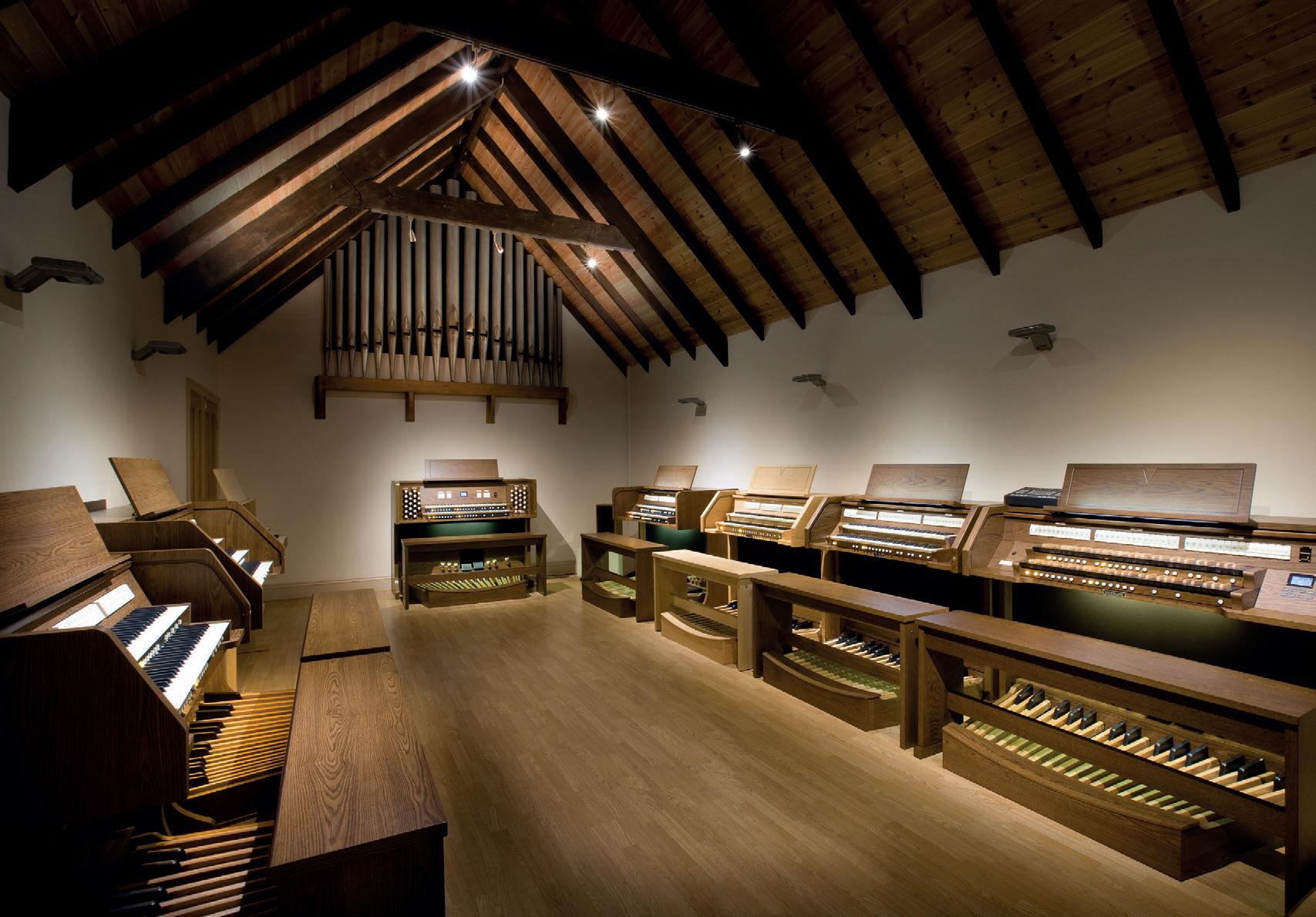
Edinburgh Key Player
Morecambe Promenade Music
Porthmadog Pianos Cymru
Leigh A Bogdan Organs
Swansea Music Station
Norwich Cookes Pianos

Bandon Jeffers Music
Exeter Music Unlimited
Ballymena Nicholl Brothers
Londonderry Henderson Music
Belfast Keynote Organs
First things first: if you have not already bought a copy of the every-chorister-CD, please do seek one out (you can order them online – just type into Google ‘Decca chorister CD’ and a link will come up). Those who attended the gala concert last year in St Paul’s Cathedral, where one chorister from almost every cathedral in the UK joined with the choir of St Paul’s, will know how exceptional the choir sounded then. The new CD, Jubilate, encapsulates that sound beautifully, and copies have been flying off the shelves of cathedral and other shops. It’s top of the classical chart at the time of writing and you can see the promotional video on YouTube if you type in ‘Jubilate’. Buy as many as possible as presents – the CD is the perfect example of what FCM exists to support, and the repertoire on it is very approachable, particularly to those who are not familiar with cathedral music – and spread the word by recommending it to all your friends.
Next: a departure. Sadly, our much-appreciated, unique and very effective chairman Peter Toyne is standing down at the June AGM in Bristol, and I know I speak for all of us when I say we will be very sorry to see him go. He has been a fantastic chairman, promoting FCM with great energy and enthusiasm, and – as our first article in this magazine says – he will be a hard act to follow. But... when one door closes another opens, and we are very lucky that Peter Allwood is standing by to take over, having been in close collaboration with Peter T for some months. Peter A has had a varied career in and around cathedral music for most of his life. He was a choral scholar at
King’s Cambridge before – amongst other things – becoming director of the National Youth Music Theatre for many years. He is also a highly regarded composer and conductor. Read more about him in the November 2017 magazine.
We also say a more profound farewell to Cathedral Music’s one-time deputy editor, Roger Tucker, who died at the end of February. Roger, a long-time member of FCM, was a real stalwart of the summer cathedral festivals, where he would run the FCM stall, handing out magazines to all interested parties (and some not so interested!) and working hard at recruiting new members. Those readers with a good memory will remember his magazine reports on the Proms and the Three Choirs Festivals, always to the point and wellconstructed, even if delivered at the twelfth hour – ‘deadline’ and ‘time-keeping’ were not words in Roger’s vocabulary! His knowledge was extensive on many subjects, and he had a very acute eye for detail, an attribute much valued by editors. A longer tribute to Roger can be found in the forthcoming issue of Cathedral Voice
On page 10 we celebrate 90 years of the Royal School of Church Music, to which FCM has very strong links. The education, courses and help it supplies are wide-ranging and extensive; without these, music at many parish churches and cathedrals would be greatly at risk – the RSCM offers training on conducting, repertoire and professional development for church musicians, runs summer schools for singers and organists, has structured courses for choristers (Voice for Life) and is happy to provide advice to affiliated members throughout the world. It is a brilliant, supportive and up-todate organisation which deserves great credit.
And finally, keep your eyes open for two things: the new FCM website and the FCM gift voucher. Both should be available shortly.
Sooty AsquithLog onto www.fcm.org.uk and fill in the form, or write to/email the address given on p3.
Member benefits include:
• welcome pack
• twice-yearly colour magazine and twice-yearly colour newsletter
• ‘Singing in Cathedrals’: a pocket-sized guide to useful information on cathedrals in England, Ireland, Scotland and Wales
Opportunities to:
• attend gatherings in magnificent cathedrals
• meet others with a shared interest in cathedral music
• enjoy talks, master-classes, choral and organ performances etc.
UK members are asked to contribute at least £20 per year (£25 sterling for European members and £35 sterling for overseas members). UK choristers and full-time UK students under 21 qualify for a reduced rate of £10. New members subscribing at least £30 (standing order) or £50 (single payment) will receive a free fulllength CD of cathedral music, specially compiled for FCM members.
FCM’s purpose is to safeguard our priceless heritage of cathedral music and support this living tradition. We strive to increase public awareness and appreciation of cathedral music, and encourage high standards in choral and organ music. Money is raised by subscriptions, donations and legacies for choirs in need.
Since 1956 we have given over £2 million to Anglican and Roman Catholic cathedral, church and collegiate chapel choirs in the UK and overseas; endowed many choristerships; ensured the continued existence of a choir school, and worked to maintain the cathedral tradition. Please join now and help us to keep up this excellent work.
When this edition of Cathedral Music is published, FCM will (still) be 60 years old and Professor Peter Toyne CBE, its fourth chairman, will have been in post for 15 years, which makes him (at least in terms of time served) an ‘average’ chairman. In reality, of course, his chairmanship has not in any way been average
It is often said of headmasters – and the saying can be applied to those in chief-executive-type positions – that their most important function is to recruit good senior staff, and for FCM (a charity largely run by volunteers) this has been crucial. Alan Thurlow, Peter’s predecessor, had appointed Peter Smith as National Gatherings Manager, an excellent appointment, as anyone who has attended a National Gathering over the past 16 years will be able to testify. Michael Cooke, who had served diligently as Honorary Secretary for many years, signified his intention to stand down from that post soon after Peter’s appointment, and an extremely competent replacement was found in the form of Roger Bishton, who is a local government clerk by profession. Roger was not able to take on the whole of Michael’s work, so Michael agreed to stay on for a few years as Grants Secretary. Peter then lined up Michael’s replacement in the form of Christopher Gower, who had recently retired as Master of the Music at Peterborough Cathedral. Christopher has managed this part of the charity’s affairs with great efficiency, commitment and a very dry sense of humour. In 2005 a new treasurer was needed and Peter (tipped off by Michael Cooke) wasted no time in tracking down the present writer (a chartered accountant, who specialises in charity accounts) and offered him the post, which appointment seems (for the most part) to have been welcomed. What else...? The role of DR Co-ordinator had been undertaken by a number of individuals, each only for a short time, until Peter lit upon the idea of a job-share, appointing Terry Duffy (at the time at Liverpool Metropolitan Cathedral) and Michael Wiles, DR for York. Finally, a few years ago a new editor was required for Cathedral Music, and Peter offered the position to Sooty


Asquith, a book publisher of many years standing, who ably stepped into the role in succession to Andrew Palmer, the founding editor.
Peter’s life before FCM was full of remarkable activity. His interest in cathedral music was, perhaps, first sparked by his position as head chorister at Ripon. His son Simon continued the tradition at Exeter Cathedral, and remains a professional musician. Peter, in rapid advancement up the academic food chain, became the first Vice Chancellor of John Moores University in Liverpool, and was made a CBE for his work in regenerating Liverpool. Those who attended the Liverpool gathering in 2016 will remember his attachment to and great enthusiasm for that remarkable city.
Shortly before his appointment to FCM, Peter had been a pivotal figure in the city of Liverpool’s successful bid to become European Capital of Culture for 2008, with a wonderfully staged PR stunt in which he was photographed climbing into a helicopter, apparently with an envelope containing the bid on his way to London to deliver it. It turned out that after taking off he had, in fact, landed only a few miles away, the bid having been safely delivered the previous day – but the publicity was invaluable. This appetite for publicity has been used to good effect for FCM with frequent letters to national newspapers and a willingness to ‘bang the drum’ for cathedral music whenever possible.
During Peter’s time as chairman there have been several FCM firsts: record payments of grants, particularly in 2016; the first ‘overseas’ gathering (Northern Ireland) in 2008; the first nonUK gathering (the Netherlands) in 2015; the commissioning of an anthem (from Philip Moore); the ability to join FCM through the website; the first Festal Dinner at a Gathering in a cathedral (Manchester) in 2009; a singing workshop for FCM members (Tewkesbury) in 2007, and the establishment, initially under the editorship of Trevor Godfrey, of the FCM twice-yearly newsletter, Cathedral Voice. A significant change in the governance of the charity has been the establishment of a small number of subcommittees. As both the responsibilities of running a charity and the size of FCM have increased, so has the amount of business needing to be transacted by the trustees (Council) of the charity. Accordingly, its four subcommittees now undertake much of the business, which makes Council meetings run rather more neatly than would

otherwise have been the case. Whilst there is the risk that a committee structure takes responsibility away from the main board (Council), Peter has always encouraged those present at meetings to express their opinions and the full Council discusses all significant decisions in depth.
Two of the most significant successes of the past 12 years have been the saving of the choirs at Tewkesbury and Llandaff. Whilst it would be an exaggeration to suggest that FCM was solely responsible for saving these two choirs, the extent of Peter’s own involvement in working (with other agencies) to ensure that regular ‘cathedral’ services have been maintained cannot be underestimated, as those of us who have been on the receiving end of evening phone calls made from trains know only too well. The 50th and 60th anniversaries of the founding of FCM have been celebrated in grand style, with much of the planning of the latter being undertaken by Peter alone.
In all of this, Peter has been supported by his wife, Angela, and this has meant that in addition to being generous with his time for FCM business, Peter has also been extremely hospitable.

When a National Gathering took place in Chester, Peter and Angela invited all Council members and officers to their home in the Wirral for supper, and since moving to London they have hosted countless FCM subcommittee meetings. There was also the occasion on which Peter was awarded the Freedom of the City of Liverpool when several FCM colleagues were invited to the ceremony, which was followed by a dinner hosted by Peter for all who had attended. The main course was, of course, scouse, a Liverpool speciality. All of this has been done whilst maintaining an impressive schedule of holidays, to all manner of unexpected destinations.
Taking over from Alan Thurlow meant that Peter had a hard act to follow, and so it will be for his successor Peter Allwood, for, during Peter’s time as chairman, FCM has again become much more widely known and has subsequently gained a good deal from its increased membership. History appears to have repeated itself to the great benefit of FCM, but it is to be hoped that the paths of FCM and our retiring chairman will cross frequently in the years to come.
Ifirst met Peter on a snowy afternoon in February 2004 in the cafeteria at Bristol Temple Meads railway station. I’d seen an advertisement for the position of Secretary to the Friends of Cathedral Music and, in what was a somewhat reckless moment, decided to put myself forward as a possible candidate. Arrangements were made for me to meet Peter on his way to an engagement at Gloucester Cathedral and so with a certain amount of trepidation I made my way to Bristol for our meeting.
I needn’t have worried because as soon as I met Peter I was warmed by his charm and friendliness, and I can quite truthfully say that I had never previously experienced such an enjoyable interview. That is not to say that it wasn’t carried out
in a business-like manner, because all the necessary interview questions were thoroughly explored; fortunately, Peter seemed to think that I would be suitable. This was verified when Council subsequently appointed me without any further interview.
During our initial discussions I realised that our views about FCM were rather similar, and I was confident that we could work well together. Peter is an exceptional person. He has just the right balance of looking to the future with good and sound fresh ideas but at the same time is sensitive to those with differing views; he also has the ability and patience to steer everyone gently in the direction which will ultimately result in the best solution. This is a rare attribute and so much appreciated.
Peter was born in Rotherham and educated at Ripon Grammar School where he sang in the cathedral choir and became head chorister. He studied geography at Bristol University, during which time he attended St Mary Redcliffe Church, where he became a server. Although our paths did not cross, I received my early organ lessons at about that time from the organist, Garth Benson. After lecturing at the university Peter moved to Exeter, where he was appointed senior lecturer in geography and more importantly met and subsequently married Angela, who was studying theology. In 1978 he and his family moved to Chichester where he became Head of Bishop Otter College and subsequently was appointed Rector of North East London Polytechnic (now University of East London). In 1992 he was appointed the founding Vice-Chancellor of John Moores University, Liverpool.
During his time in Liverpool, Peter demonstrated both his interest in a large number of different subjects, and also his enormous energy in giving of his time so generously to these causes. One would imagine that steering a new university during its initial years would be more than enough work for anyone, but not so with Peter. Having always been very interested in cathedral music and liturgy, he became a
member of the Church of England Synod and also a member of the Archbishops’ Council, taking a special interest in the publishing arm of Church House, Westminster. He became a Council member of Liverpool Cathedral and played a major part in planning the installation of Justin Welby as Dean of Liverpool in December 2007.
That Peter was High Sheriff of Merseyside in 2001-2 can be seen from a marvellous photograph of him (in his home) in full uniform, mounted on an impressive-looking horse! He has held too many appointments to list, but I would mention that he is Life President of Liverpool Organists’ Association and was awarded the freedom of the City of Liverpool in 2010.
Now, what of his time as Chairman of FCM? Succeeding Dr Alan Thurlow in 2002, his period as chairman has seen much activity and growth. Highlights include our Golden Jubilee celebrations in 2006 with a gala reception in the House of Commons organised for us by our member Robert Key, when he was still the Member of Parliament for Salisbury. We were delighted to welcome our senior Vice-President, Dr Francis Jackson, who recounted stories about his time at York Minster and also his more recent adventures travelling around the UK by coach, giving organ recitals.
Ten years later we celebrated our Diamond Jubilee, about which much has been written elsewhere. Suffice it to say that one of the highlights of the year’s celebrations must surely have been the gala concert at St Paul’s Cathedral in April when a chorister from almost every cathedral choir in this country joined with the choir of St Paul’s Cathedral under the baton of their Director of Music, Andrew Carwood, to give a breathtaking concert of cathedral music. These choristers have all met once again in St Paul’s Cathedral to record some of the music performed at the concert, and a CD of this has just been launched (see p5 for order details).
During Peter’s time as chairman we have seen the membership of FCM increase to almost 4,000 and our grant-giving rise to almost £4m since its inception in 1956. Last year we gave a record £600,000. Mention must also be made of Peter’s talent as an editor. During the last few years he has more than ably taken over the editorship of Cathedral Voice and it has now expanded to 20-24 pages per issue, all in full colour.
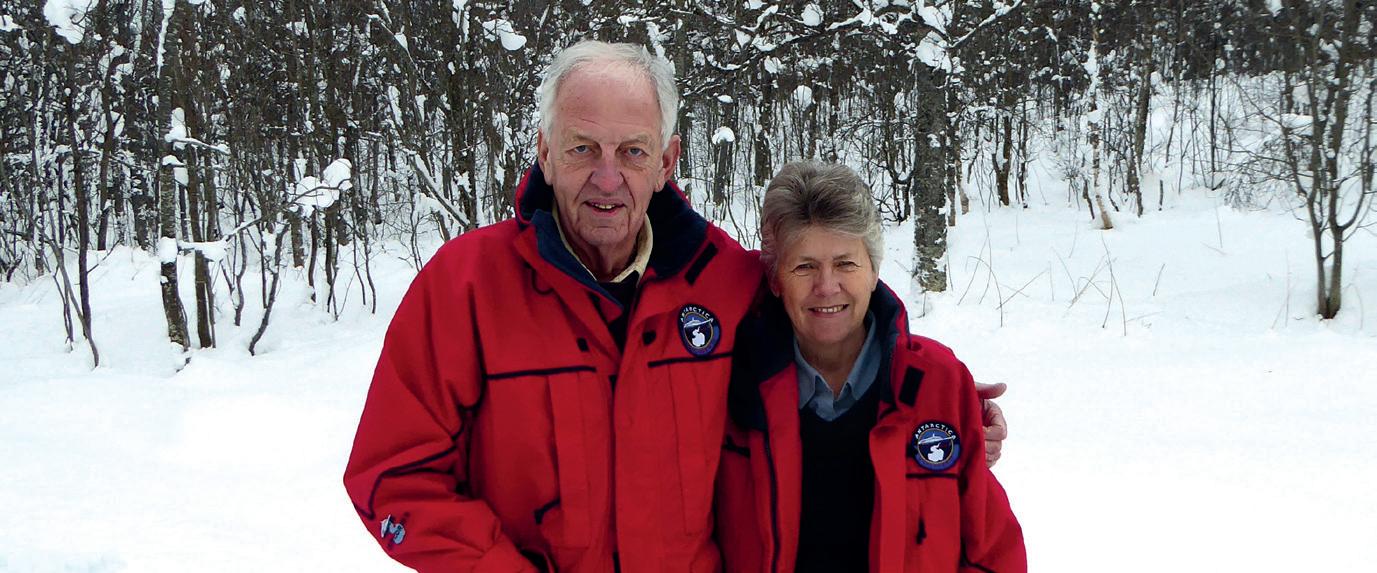
Peter is an excellent after-dinner speaker and he has the rare ability to be able to deliver a serious speech with just the right amount of humour, thus keeping the attention of his audience. He is such delightful company and, together with his lovely wife, Angela, they are the perfect host and hostess. We shall all miss Peter very much indeed and wish him every success and pleasure in his future endeavours, which, knowing him, will continue to be many.
Roger BishtonWe provide all types of new instruments
New Organs
Restoration
Rebuilding
Tuning
Maintenance
We can give unbiased advice for all your requirements
Hillside Organ Works
Carrhill Road, Mossley, Lancashire OL5 0SE Tel: 01457 833 009
www.georgesixsmithandsonltd.co.uk

Ninety years is a good position from which to look back and recall the highs and lows of any life or institution. For the RSCM it is remarkable that we still exist at all, given the financial crises that have regularly threatened the organisation, but we are currently somewhat better placed financially and certainly still imbued with that strong vision of our founder, Sir Sydney Nicholson: a desire to improve the standards of church music and musicians.
Lower Chapel, and at Carlisle and Manchester Cathedrals before appointment to Westminster Abbey in 1918 at the age of 43. Nicholson was an energetic character and, with his slightly aristocratic background and a diplomacy inherited from his politician father, he moved in highly placed social circles where he was well known in the upper echelons of the clergy, especially through his connections at the Athenaeum Club in Pall Mall. He found that the music at Westminster was in a pretty poor state – the responses and psalms were never rehearsed and the twelve regular lay vicars were abusing the deputy system. Within a few years he successfully turned all this round and, using two teams of boys, was able to provide sung services on 365 days a year.
The first hint of Nicholson’s practical concern for the state of music in parish churches came in 1924 when he formed what he called a ‘model’ choir. Using members of his Westminster Abbey Special Choir, this choir went on tour to demonstrate at a parish level how things should or could be done. This initiative was in response to the Archbishops’ report published two years earlier entitled Music in Worship
Over the next couple of years Nicholson formulated his own double plan: a training college with a resident choir so that church musicians could hone their choir-training skills, and also a national network providing advice at a parish level.
After much discussion with eminent musicians and church leaders, including the Archbishop of Canterbury, Nicholson tendered his resignation from the Abbey in 1927 and arranged a meeting with the Dean of Westminster in order to explain his plans. Following this, both the School of English Church Music and the College of St Nicolas were born, opening just over a year later at Bullers Wood in Chislehurst. It was very fortunate that Nicholson had a private income for, after leaving the Abbey, he never again had a regular salary, and indeed the Chislehurst property for the College was bought by him and donated to the School.
Over the next ten years the College and an international network of musicians grew so much that, by 1939, around 1500 parish choirs were affiliated to the SECM and many were using the various publications issued during that decade.

Major church music festivals were held in 1930 at the Royal Albert Hall and in 1933 and 1936 at the Crystal Palace, involving thousands of singers (Westminster Abbey was too small!), but the onset of WWII caused an abrupt end to the work of the College as most of the students were called up for military duty and the school premises were taken over for other uses. Sir Sydney (he had been knighted for his work at the Coronation in 1937) moved to be acting organist at St Michael’s, Tenbury, and he ran the College of St Nicolas from there until the School moved to Leamington Spa in 1943.
The SECM remained active during the war but there was a shift in emphasis towards courses for boys and the publishing of music for upper voices. Choirs all over the country were devastated by the haemorrhage of men into the armed services and many parishes were suddenly reduced to a boysonly status. Even before the move to Leamington in 1943, the dean and chapter of Canterbury Cathedral had offered accommodation to the College and so it re-opened after the war in January 1946 in the precincts of Canterbury Cathedral. The previous year the organisation had changed its name from the SECM to the Royal School of Church Music. At face value this might seem like promotion and recognition, but in fact it had been applied for by SECM Council in 1944. Nicholson’s

death in 1946 was a great blow to the RSCM; it was his energy and funds that had been both the backbone and the driving force of the organisation. There was no money to employ another director and so three honorary ‘Associate Directors’ were appointed – Gerald Knight, organist at Canterbury, John Dykes Bower of St Paul’s Cathedral, and William McKie from Westminster Abbey. They guided the RSCM in various ways until it settled in Croydon at Addington Palace.
Although not wishing to portray it as some sort of ‘Golden Age’, those Addington years, from 1953 until 1996, were really the glory years of the RSCM, with a gradual increase in the number and scope of the courses offered both at Addington and around the country, and a burgeoning influence on parish churches through the diocesan network and publications. Liaison at a diocesan level has always been a key feature of the RSCM’s work and, for most of our existence, relationships with cathedrals have been both close and vital. The RSCM’s work extended worldwide, notably to Australia, New Zealand, South Africa, Canada and the USA. Naturally there were many courses arranged for boys, often up to 140 at a time, and also courses for choirmasters (both town and country – their needs were perceived as quite different). The prestigious courses for boys were the summer cathedral
courses where 40 boys and 40 young men would sing services at a major cathedral for two weeks with a BBC broadcast Evensong during the second week. Judging by our recordings, the standard was staggeringly high. Then there were courses for organists taking the advanced Archbishop’s Diploma in Church Music (ADCM), and other diplomas for lay readers, ordinands and newly ordained clergy – indeed, training the clergy was always as much a priority as training the musicians. Ordinands from many of the Anglican training colleges were sent to Croydon three times a year until the 1970s, when the budgets of those colleges became so tight that musical training was seen as something of a luxury rather than a necessity. In later years, director Lionel Dakers made a positive effort to visit training colleges (at the RSCM’s expense) to scratch the surface of educating prospective clergy, but he gradually found the colleges to be less and less enthusiastic. Many clergy are now being ordained with virtually no knowledge of hymnody or sung liturgy. With the recent appointment of a full-time RSCM Head of Ministerial Training the RSCM is seeking to address that problem.
According to the 1958 annual report, during the previous ten years nearly 2500 students had attended courses at Addington and Canterbury, including 1000 ordinands, junior clergy and lay readers and, during the first four years at Addington, 700 organists, choirmasters and singers had attended. A major educational milestone in 1965 was the introduction of the Chorister Training Scheme (CTS) by RSCM Headquarters Commissioner Martin How. This structured course featured graded attainment levels, with medallions and ribbons, record cards and training materials for both choristers and choirmasters. Taken up with enthusiasm all around the world, the CTS was re-launched as the ‘Sing Aloud’ scheme in 1989 and then replaced by the current ‘Voice for Life’ training programme (which also now includes adult singers) in 1999.
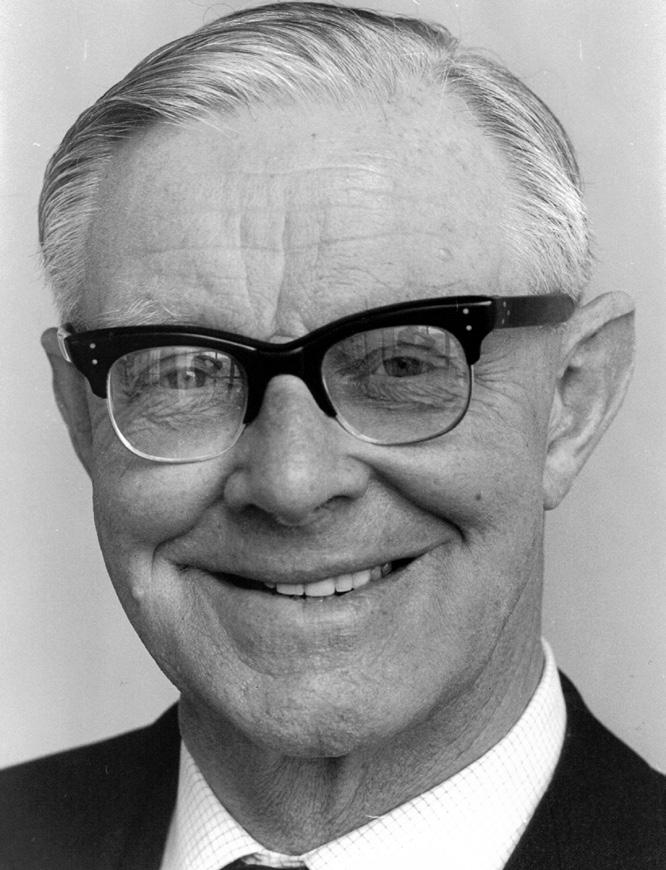
During the first half of the Addington era there were full-time residential students, many working for their ARCO, FRCO or also attending the London music colleges. They usually stayed for one or two years. The list of famous names is enormous and so I mention just a few – Gillian Weir, James Lancelot, Peter Phillips and Paul Spicer. The residential college closed
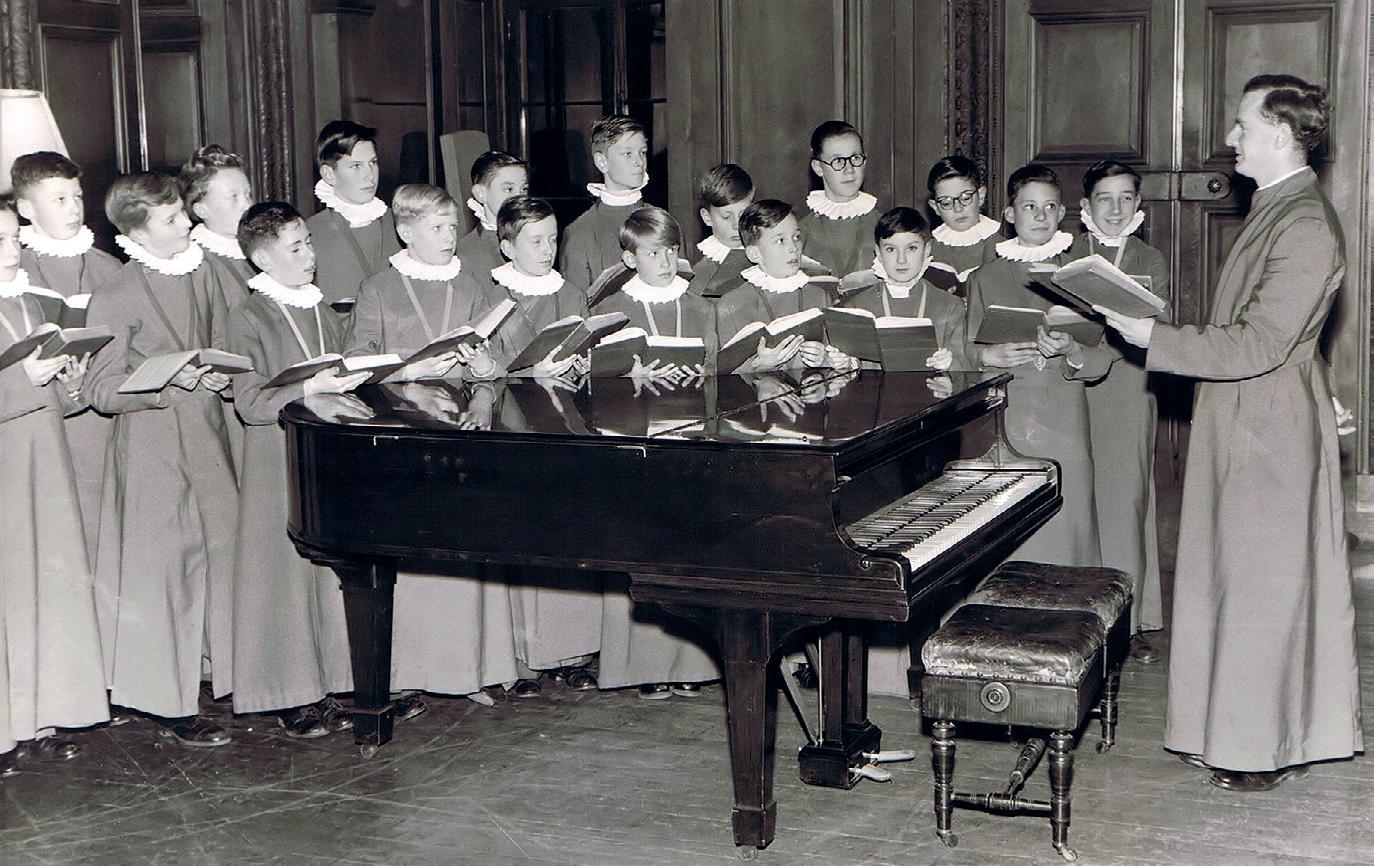
in 1974 because it was no longer financially viable. We did not confer degrees or diplomas and, with universities offering these together with choral and organ scholarships, the best candidates were generally pursuing that route into a musical career.
In 1953 the RSCM took out a 50-year lease at Addington at £1000 a year. It became clear during the inflationary 1990s, however, that any new lease would not be at such a peppercorn rent and it was necessary to look elsewhere. Cleveland Lodge, the house in Dorking belonging to concert organist Lady (Susi) Jeans was bequeathed to us. The idea of owning our home in the idyllic setting of Box Hill with a railway station outside the front door was, on the face of it, very attractive, but unfortunately the property was in a bad state. It needed rebuilding, during which part of it fell down, but with a substantial drain on RSCM reserves and a lottery grant of over £1 million, this was achieved.
time of particular financial crisis. Many cuts were made and publishing almost ground to a halt in the early Noughties. Allowing for inflation, the cost of the upkeep of Cleveland Lodge and its grounds had escalated to be more of a drain on resources than looking after Addington Palace had been, and so a move, with a tightening of the belt, was necessary. In 2006 we decamped to Sarum College in Salisbury.
Since then, publishing has flourished and now includes a wide range of material in different styles and ‘photocopiable’ resources, which provide an inexpensive source of high quality music. One of the major successes of the RSCM has been our quarterly Sunday by Sunday magazine issued along with Church Music Quarterly; indeed, some churches join us specifically to obtain this members-only benefit. Introduced in 1996 on the initiative of Harry Bramma, and coming of age this year with its 84th issue, we offer guidance based on the major lectionaries for all those who choose music for parish worship. Using a wide range of ecumenically based sources, we suggest hymns, songs, chants, anthems, children’s music, organ music and psalms, together with a brief theological thumbnail based on the readings set for the day. The musical choices offered are designed to be relevant to churches both with or without choirs and organists, and they encompass many musical styles including the music of Iona and Taizé. In our recommendations we also recognise and try to take into account the different skill levels available in parishes. The magazine has a training element too, with regular workshops on specific choral pieces, hymns, songs and organ music.
90 years and counting – for the RSCM there is still work to do and much to look forward to, but these reflections on its work over the decades surely show how much has been achieved, starting with the vision of one man.
We moved into Cleveland Lodge in 1996 under the directorship of Harry Bramma. Harry was instrumental in ensuring that the RSCM embraced more fully both the idea of girls in choirs, and the diversity of musical styles in worship. On his retirement his successor, Professor John Harper, combined the dual role of director and chief business executive. With the liturgical changes at the introduction of Common Worship in 2000, it was valuable to have an experienced liturgist such as John (who was also on the Church of England Liturgical Commission) to oversee the provision of music for the new liturgy; just as earlier, from 1980 onwards, during the years of experimenting with Series Three and the ASB, the RSCM had anticipated the changes and commissioned composers to write for the new liturgies. So it was to be for Common Worship, but the new music for this century necessarily had to encompass a rather greater range of musical styles than before and the cost of these publications was considerable. The RSCM has never been flush with funds but this was a

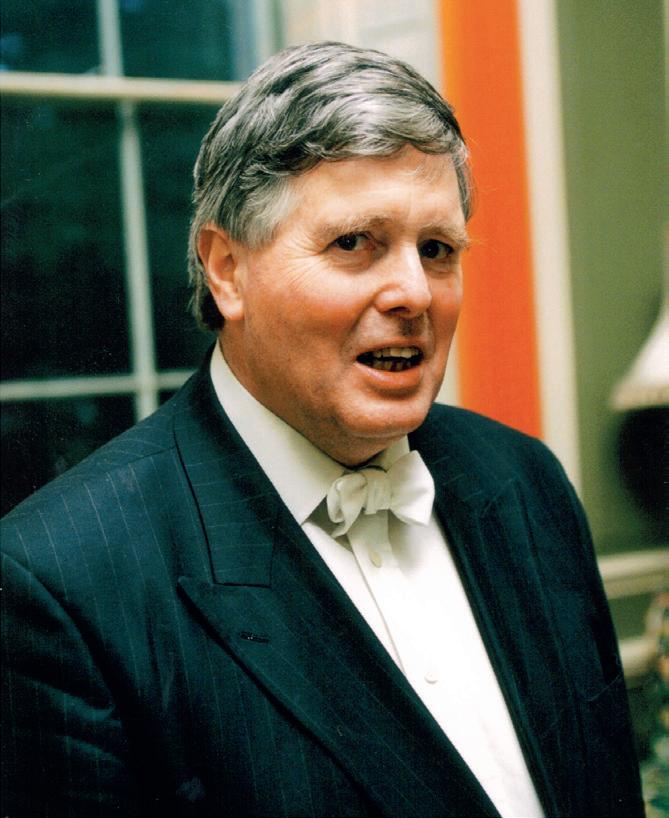
In terms of age, the Metropolitan Cathedral of Christ the King in Liverpool is a mere infant but, nonetheless undaunted, it has great plans to celebrate its Golden Jubilee in 2017 on the Feast of Pentecost, Sunday 4 June, with a festival lasting two weeks. Many other events will take place during the year.
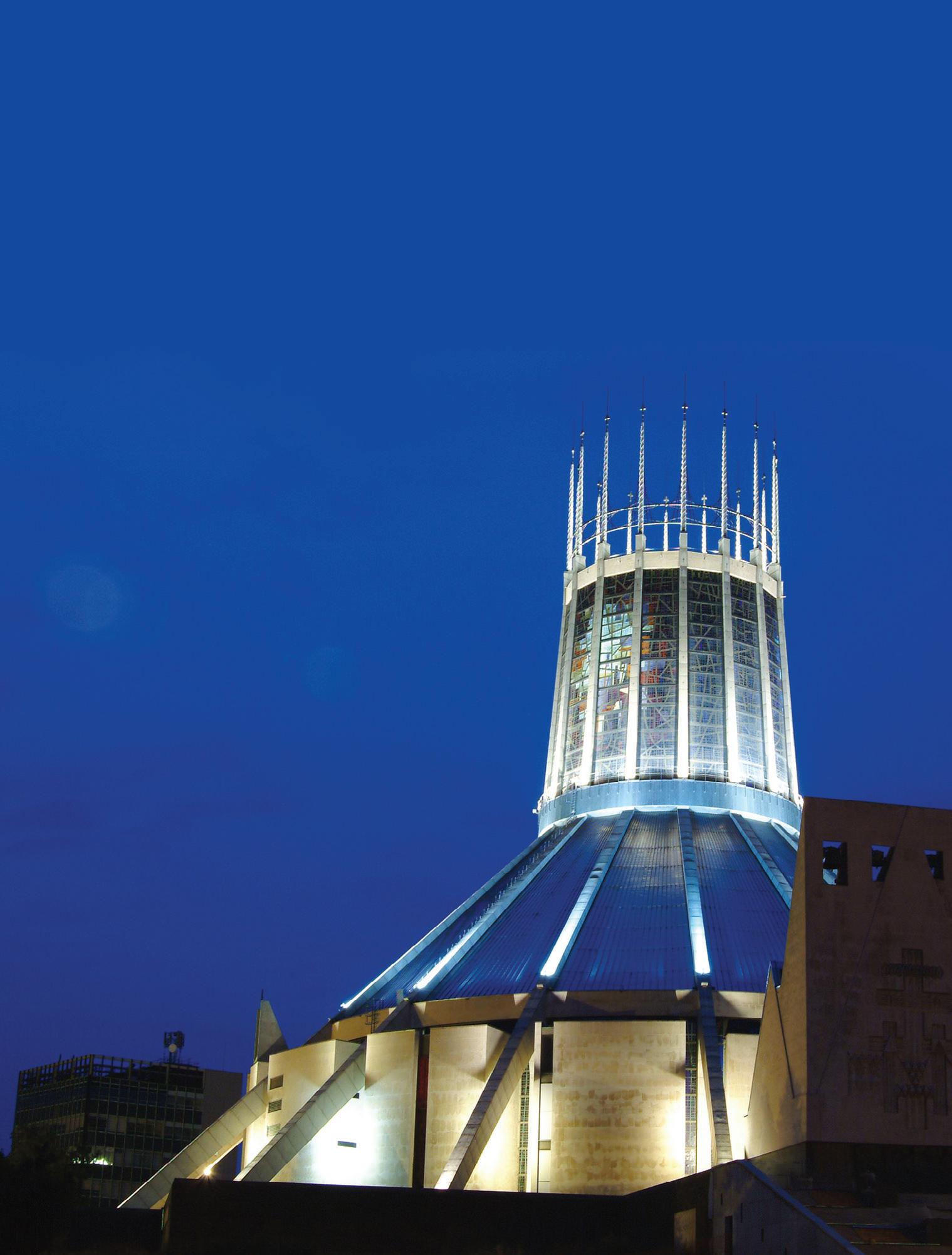
The present building, designed by Sir Frederick Gibberd, is in fact the fourth attempt to build a cathedral for the Liverpool diocese, the largest Catholic diocese in the UK. After the restoration of the hierarchy in 1850, when Pope Pius IX recreated the diocesan chain of command which had been extinguished with the death of the last Catholic bishop in the reign of Elizabeth I, plans were laid to build a cathedral in Everton, with Edward Welby Pugin being the architect selected. He designed a cruciform building with a huge steeple to be dedicated to St Edward. Work began on the Lady Chapel and was completed within three years. The attention of the diocese then became concentrated on more pressing needs – parish churches, schools and orphanages – as the Catholic population rapidly increased, in large part due to the dramatic effects of the Irish potato famine, and the completion of the cathedral was abandoned. The Lady Chapel served as a parish church until the 1950s, when it was demolished.
A second attempt was made in the 1930s when the diocese bought the site of the present cathedral. It seems very fitting that a cathedral should replace what previously had been the largest workhouse in Europe; this had housed 4000 inmates and closed finally in 1928. Archbishop Richard Downey commissioned Edwin Lutyens, the foremost architect of the time, to build the largest cathedral in the world with a design which incorporated an enormous dome. The completed building would have eclipsed Liverpool Cathedral (the largest Anglican cathedral in the UK), for which the foundation stone had been laid in 1904. An idea of the scale can be envisaged from the dimensions: the Lutyens building was intended to reach 158 metres high whilst the Anglican cathedral is a mere 101 metres tall! The foundation stone was laid on Whit
Sunday 1933. A model of Lutyens’ cathedral, constructed to help raise funds, is now displayed in the Liverpool Museum on the Mersey waterfront. It stands about four metres high and is over five metres long (and is well worth a visit).

World War II interrupted the construction work, and by the 1950s the final cost had escalated to £27m. Archbishop William Godfrey, instructing Adrian Gilbert Scott (brother of Giles Gilbert Scott, the architect of the Anglican cathedral) to reduce both the proportions and the costs, found that the new design pleased few people. Archbishop John Carmel Heenan, appointed to Liverpool in 1957, realised that drastic action was needed and had the Lutyens crypt roofed over and opened, supplanting the nearby Pro-Cathedral. He then scrapped Scott’s plans and set up an international design competition for an entirely new building with a budget of £1m for the main structure. About 300 entries were received. Of these, one by Frederick Gibberd was chosen, and building began in 1962. The new cathedral was opened and consecrated at Pentecost just five years later, by which time Heenan had been translated to Westminster as a cardinal. He returned for consecration as the Papal Legate.
So this year, the cathedral, now a much loved iconic feature of the Liverpool skyline situated on the same high ridge as its sister cathedral at the far end of Hope Street, will celebrate its 50th birthday. Both cathedrals are both dedicated to Christ; neither is geographically aligned in the normal liturgical manner – east to west – but both are on the north–south axis. Somewhat Tardis-like, the exterior of the Metropolitan Cathedral disguises the vastness of its interior; it seats over 2,000, in pews arranged in concentric circles around the sanctuary and high altar, so that no one is very far away
from the liturgical action. A series of side chapels round the perimeter and between the buttresses, each framed by blue glass, were originally intended for the celebration of mass by individual priests, but these have been adapted for alternative uses after concelebrations rendered them redundant. The great lantern window, the largest in the world, was designed by John Piper with the execution being carried out by Patrick Reyntiens. Two thousand tons of coloured glass and concrete hover above the sanctuary without obvious means of support. The colours of the spectrum in rotation represent the glory of God, with three bursts of white light recalling the Trinity. Artists whose works adorn the great internal space include Elizabeth Frink, William Mitchell, Robert Brumby, Sean Rice, George Mayer-Marton, Stephen Foster and Arthur Dooley.

The choir stalls and organ console are situated behind the Archbishop’s chair at nave level with the fine 4-manual Walker organ of 108 stops and its distinctive and striking display of brass trumpets set on a projecting shelf above the entrance to the Blessed Sacrament Chapel. The Lady Chapel with its ceramic Madonna is sited to the left.
Outside the main porch an impressive and huge flight of steps, flanked by two coloured glass panels standing like sentries, leads up to the main entrance where four bells hang above bronze sliding doors. Named Matthew, Mark, Luke and John, they provide an unforgettable visual spectacle and an impressive aural experience when tolling. The vestries, song room, music library and offices are at ground level; an internal processional ramp offers a dramatic entry route into the cathedral.
The Lutyens crypt is enormous, sometimes overwhelming visitors with its four vast spaces. The Pontifical Hall houses
a splendid treasury exhibition and has displays documenting the history of the cathedral, including a video presentation during which the Lutyens building is superimposed on the Liverpool skyline with alarming results. There is a chapel which serves as the local parish church; a concert room seating over 300, and the Crypt Hall which can seat up to 350 for formal dinners, with its own state-of-the-art kitchen. Apart from the chapel, these spaces are used by the two nearby universities as examination halls at various times of the year, and the Crypt Hall annually houses the CAMRA beer festival, the best attended in the country! The crypt roof serves as a great piazza with an external altar.
The choir of boys and men was founded in 1960, services then being held in the Lutyens crypt, while the girls’ choir came later, in 2008. The choirs’ repertoire includes Gregorian chant and a wide range of Latin and English church music composed throughout the ages up to the present day. The music of the cathedral has an international reputation and choral services are sung each day except on Saturdays during choir terms. All the choristers are pupils at the cathedral’s choir schools, St Edward’s College & St Edward’s School, which are situated not far from the cathedral in West Derby and where daily rehearsals take place each morning for an hour before school. The lay clerks are supplemented by choral scholars and the organ scholarship was established in 1975, the first such in the Catholic church. The first organ scholar was David Saint, who in 2016 retired as the Principal of the Birmingham Conservatoire (see CM 2/16). A number of former choristers have gone on to singing careers and many other posts in the music world. The current director of music, Dr Christopher McElroy, has been in position since 2012. He is ably supported by the Assistant Director, James Luxton (see CM 1/16).
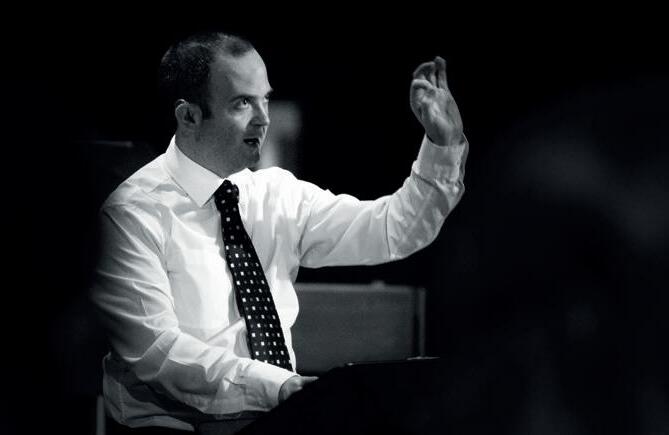

Although Liverpool was the European City of Culture in 2008, I prefer to cite it as the Capital of Ecumenism. After a history of religious strife in the city, the work done by Bishop David Sheppard and Archbishop Derek Worlock in the 70s and 80s did much to replace antagonism with cooperation: their maxim was ‘Better Together’, also the title of a book they co-wrote. Today the cathedrals work alongside each other on various levels, from a joint food bank to ecumenical services and musical events such as Messiah, and the choristers enjoy an annual sports day together. A high point of this sharing is the Pentecost Service which begins in one cathedral and ends in the other; the congregation, choirs and clergy all process along Hope Street.
The Jubilee Festival, besides the Solemn Choral Mass, Evening Prayer on Pentecost Sunday and other events during the year, will include a grand dinner following the singing of the First Vespers of the feast the day before, and a flower festival. A performance of an electronic setting of the mass by the French composer Pierre Henry, originally intended to be choreographed as part of the secular events at the opening of the cathedral in 1967 and which was not completed in time, will this year be promoted in May in conjunction with the Bluecoat Creative Centre, which is celebrating its 300th birthday. A concert by the Royal Liverpool Philharmonic Society Orchestra and Chorus together with the Metropolitan Cathedral choirs will perform a new Gloria composed and to be conducted by Sir James MacMillan, with tenor soloist Ian Bostridge. The programme also includes music for brass, and Poulenc’s Gloria. In July, Benjamin Britten’s Noyes Fludde will be performed by local school children, and there will be four organ recitals by top-class organists: Johann Vexo (Notre Dame, Paris), Martin Baker (Westminster Cathedral), Ian Tracey (Liverpool Cathedral) and James Luxton (Assistant

Director of Music, Metropolitan Cathedral). Each recitalist has been asked to include a work performed in one of the four recitals at the opening of the cathedral when the recitalists then were Flor Peeters, Fernando Germani, Jeanne Demessieux and Noel Rawsthorne. The choirs of Westminster Cathedral and the Metropolitan Cathedral will combine to sing Mozart’s Requiem together with the Liverpool Mozart Orchestra in November. Another choral concert will feature the Liverpool Welsh Choral Union which also sang in the festival at the opening of the cathedral. The Sixteen, who visit the cathedral each year, will be welcomed to perform their Choral Pilgrimage 2017 programme in September. An exhibition showing some of the unsuccessful designs for the cathedral is also planned. A project entitled ‘Fifty Years of Memories’ for which local folk are invited to record their own memories from 1967 onwards will then be available to be heard in listening booths in the city.
We hope to welcome as many visitors as possible to explore this remarkable cathedral and its stunning crypt as well as enjoying the celebratory events.
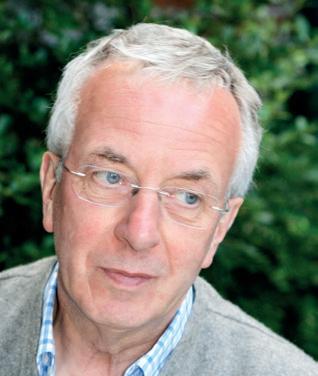

Magdalen College, Oxford in the summer of 1964. Someone had pulled out at the very last minute so I was summoned as a late possibility. The voice trial still seems like yesterday, and my hopeless preparation drew Dr Rose’s merciless mockery, but nevertheless I did take in his warmth and extraordinary charisma. I’d just about do, I felt. Soon I found myself as a probationer at age 11, older than most but at least I had learnt the ropes during some happy terms at Exeter under Christopher Herrick.
Through the 60-a-day blue haze, the Song School was a survival exercise in enduring Dr Rose’s endless derision and sarcasm, yet our deep affection, respect and loyalty knew no bounds. His choral direction was effortless and a joy. By contrast we rebelled at his organ scholars, particularly those who stopped and nitpicked at every bar. We were sorely disappointed when Dr Rose delegated a choir practice, sadly all too often.

But he had so much else to do. Even at that tender age, I was deeply impressed that Dr Rose could go hunting for an ancient manuscript and then appear with all the parts handwritten and ready to go. What an immense privilege it was to witness the likes of Tomkins Sixth emerge for the first time in centuries!
I recall that some choristers were true-born musicians, but certainly not me. I was Cantoris material and best avoided if there were a solo to be done. I seemed to evolve another quality, that of reliability. At a sudden entry or change in tempo, I would always be there, maybe not prettily but at least something would happen. I think Bernard appreciated that.
My career as a treble ended abruptly in 1967 when we returned for the Michaelmas term. There was always a glorious fortnight before the university term started, and then it was
To see Dr Rose at work, calmly absorbing a complete orchestral score while his fingers and feet apparently moved all on their own, was unbelievable.
out of the Indian summer and straight into the cool solemnity of the Song School. Within minutes it became obvious that my voice was breaking. Just as I luxuriated in the boundless joy of, at last, a life without commitments, Dr Rose alighted upon a plan. There was no way that he was going to pay me for an entire term of doing nothing, so instead I would become his PA. Right up to Christmas Eve, I prepared and carried his music, turned the pages and ran errands. My reliability had returned to haunt me.
How I loved that organ loft! To see Dr Rose at work, calmly absorbing a complete orchestral score while his fingers and feet apparently moved all on their own, was unbelievable. I have spent the entire intervening half-century hoping to wake up tomorrow as a ready-made cathedral organist. It would not of course require any effort on my part – after all, Bernard never seemed to expend any. His music just ‘happened’.
Sunday Evensong was the big event of the week and there was always a superb organ voluntary to look forward to –particularly by me, crouched right next to Dr Rose, pulling stops and awaiting the page-turning nods. One dark night, Bernard was right at the height of something immense when he stopped dead in his tracks. From the antechapel beneath, the congregational chit-chat roared on. Bernard selected the largest book I have ever seen, leaned over the edge and dropped it cleanly between the heads beneath. It landed flat with a noise like a cannon-shot. There was instant silence. After a few seconds the voluntary continued and nobody dared breathe even a whisper. That was Bernard.
I’ll never be sure if Dr Rose actually liked me, but we certainly worked well together over hundreds of hours of close contact. I may be the only chorister to have ever been awarded this extraordinary privilege, and I think it significant that chance delivered it to an appreciative amateur rather than a blasé prima donna. In the long run, Bernard probably had a more positive impact on my life than literally anyone else. Thank you so much, Dr Rose.
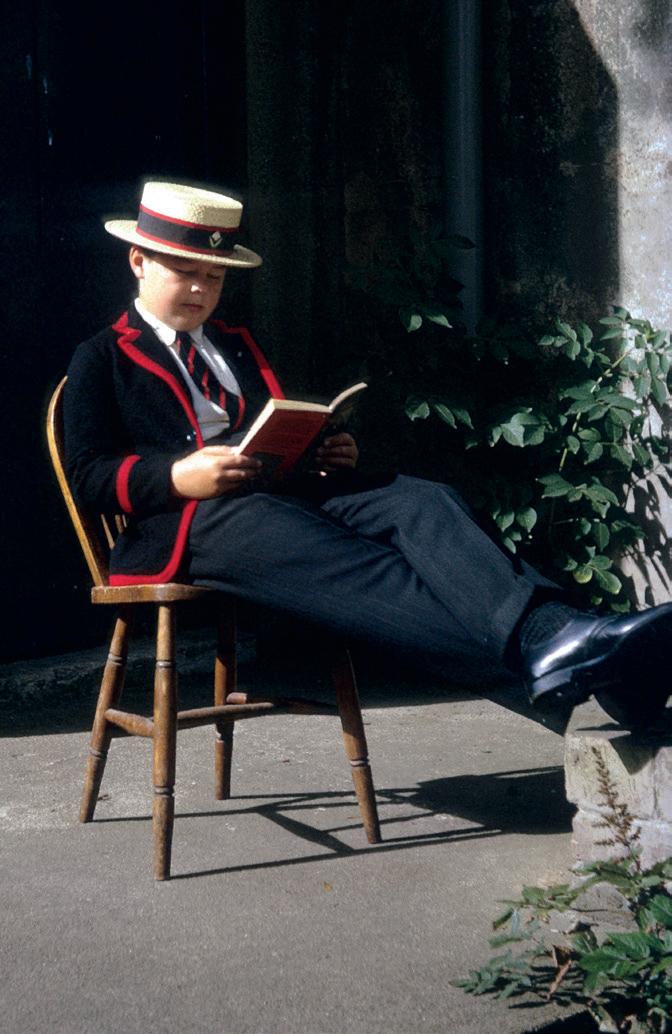
Robert went on to a career as an airline pilot, where the chorister’s habits of accuracy, timing and long concentration proved invaluable. His musical heart has been in Venice ever since 1966, when Magdalen sang a Gabrieli Magnificat in Westminster Abbey. In Monmouthshire, Robert sings several times a week at local level. He is a Friend of Newport Cathedral Choir, where choral music is blossoming under the dedicated directorship of Dr Emma Gibbins.
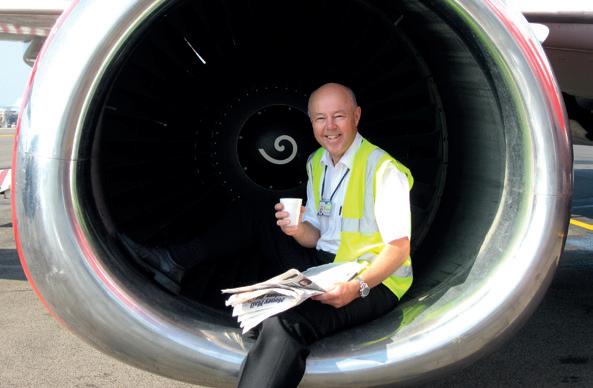

Do you know a musical boy who dreams of becoming a Cathedral Chorister? If so, please bring him along for an informal voice trial.

Please contact the Registrar, Clare James, at registrar@cccs.org.uk or on 01865 242561.


www.cccs.org.uk
Highlights include...
FESTIVAL
13-29 July 2017
Bach and Vivaldi with the Academy of Ancient Music, the Aurora Orchestra playing from memory, the Festival Chorus singing Mozart’s Requiem in King’s College Chapel, Tenebrae performing Talbot’s Path of Miracles, a silent film with organ improvisation by Richard Hills, organ works by Bach, Couperin, Daksagmüller & Byrd
Booking now open online and via
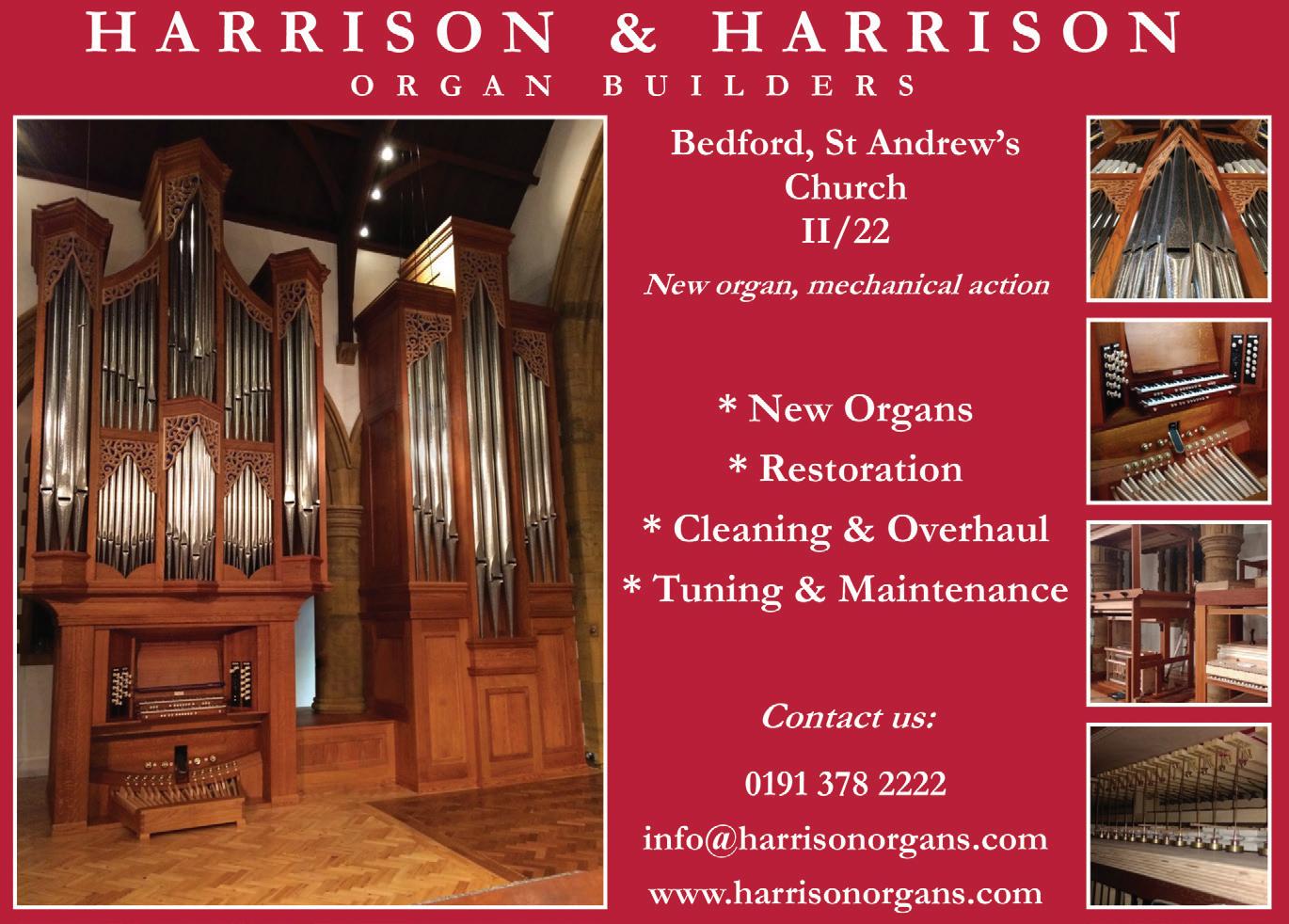
The main function of the FAC, which is ultimately responsible to the Cathedral Fabric Commission for England (CFCE), is to advise, review and, when called upon to do so, approve decisions made by the dean and chapter which might be regarded as affecting national heritage items (and our distinguished organ certainly comes into that category). None of us had any doubt that the request to alter the pitch of the organ, so that it could perform all the tasks required of it in today’s world, should and would be accepted without difficulty.
We were in the unusually happy position of having the financial resources to pay for the change from a small part of the hugely successful appeal that had been launched in 1996. Not only that, but as part of the devastation wrought by the fire on 22 November 2001, the organ was severely damaged by fire, smoke, chemical residue from the burning plastic chairs, and water, and it was necessary to dismantle, clean and rebuild the instrument completely. With the organ unusable and large sections of it needing to be taken back to the organbuilders’ workshops in Durham, this was the moment to seize the opportunity to convert the organ to standard pitch for which the reasons were compelling.
In 1990, Dean Randolph Wise invited me to become a founder member of the Peterborough Cathedral Fabric Advisory Committee (FAC). 24 hours before the first meeting he told me he was expecting me to be the chairman; I protested that my only relevant specialist knowledge of the task envisaged was that I knew a certain amount about organs.

Little did I suspect at the time that this knowledge was to be sorely tested in our attempts to alter the pitch of our magnificent organ, attempts which were to exceed in length and acrimonious negotiations anything else that has been on the FAC agenda during the last 20 years. Consider the time and effort committed to major work that has been done to the fabric of the cathedral during this period: the restoration of the nave ceiling, the renovations necessary after the fire, and developments in the precincts as a whole.
Why does the pitch of the organ matter so much? In the 1890s there was no generally accepted measure of standard pitch. Organ-builders had been free to choose a level with which they were comfortable. In Hill’s instrument of 1894 this was around a quarter-tone sharp of what became standard pitch very soon afterwards. The international agreements that were more or less established around the turn of the century resulted in a general consensus that the pitch of the A above what we recognise as middle C on a keyboard instrument should vibrate at 440 cycles per second (cps), the standard tuning fork pitch with which most are familiar from the tuning-up of orchestras. A variation of two or three cps makes no effective difference – even 445 cps does not worry most people – but the Peterborough organ, depending on the temperature in the building at any given time, has A in the region of 452cps or more. This creates a situation in which modern wind instruments cannot tune to it, so performances with orchestras or other groups are impossible.
Orchestras and bands ceased to use sharp pitch instruments soon after the organ was built – they have become museum pieces, or in most cases have been scrapped. Even today’s most highly skilled professionals cannot match Peterborough’s very sharp pitch, and for amateurs and schoolchildren it is impossible. The difficulty cannot be solved by organists’ wellrecognised ability to transpose – that simply puts them flat to a degree that cannot be accommodated! Fundamentally then, there is an overwhelming reason to make the instrument playable in all normal circumstances and not have its use confined to recitals and accompanying services – though here too there are urgent reasons to accommodate to standard pitch. To be in a position where we cannot use the cathedral organ, one of the most costly items in the building, for all services, concerts and other events, or to make its full impact felt on special occasions, such as outreach with schools bringing their musicians to make music in the cathedral, would be very unsatisfactory.
Large cathedral organs are complicated, expensive to build and to maintain so cost is always a major influence on what can be achieved at any stage – parts wear out and substantial refurbishment is required from time to time; this might happen in the normal course of events after periods of 30 to 50 years. Fundamentally, the Peterborough organ dates from 1894, though it was based in part on an earlier instrument and incorporated pipes from 1868 and some from c1735. Some wind pressures had been increased in 1912, major rebuilds were undertaken in 1930 and again in 1981, and thus the instrument we know today evolved over time. .
As with most instruments of this kind, the opportunity to make some changes is nearly always taken at the time of a rebuild. There may be a wish to alter wind pressures, add, delete or re-voice ranks of pipes, install new action, move the console to a more practical position and so on. Some of these changes are undertaken for practical reasons, some to
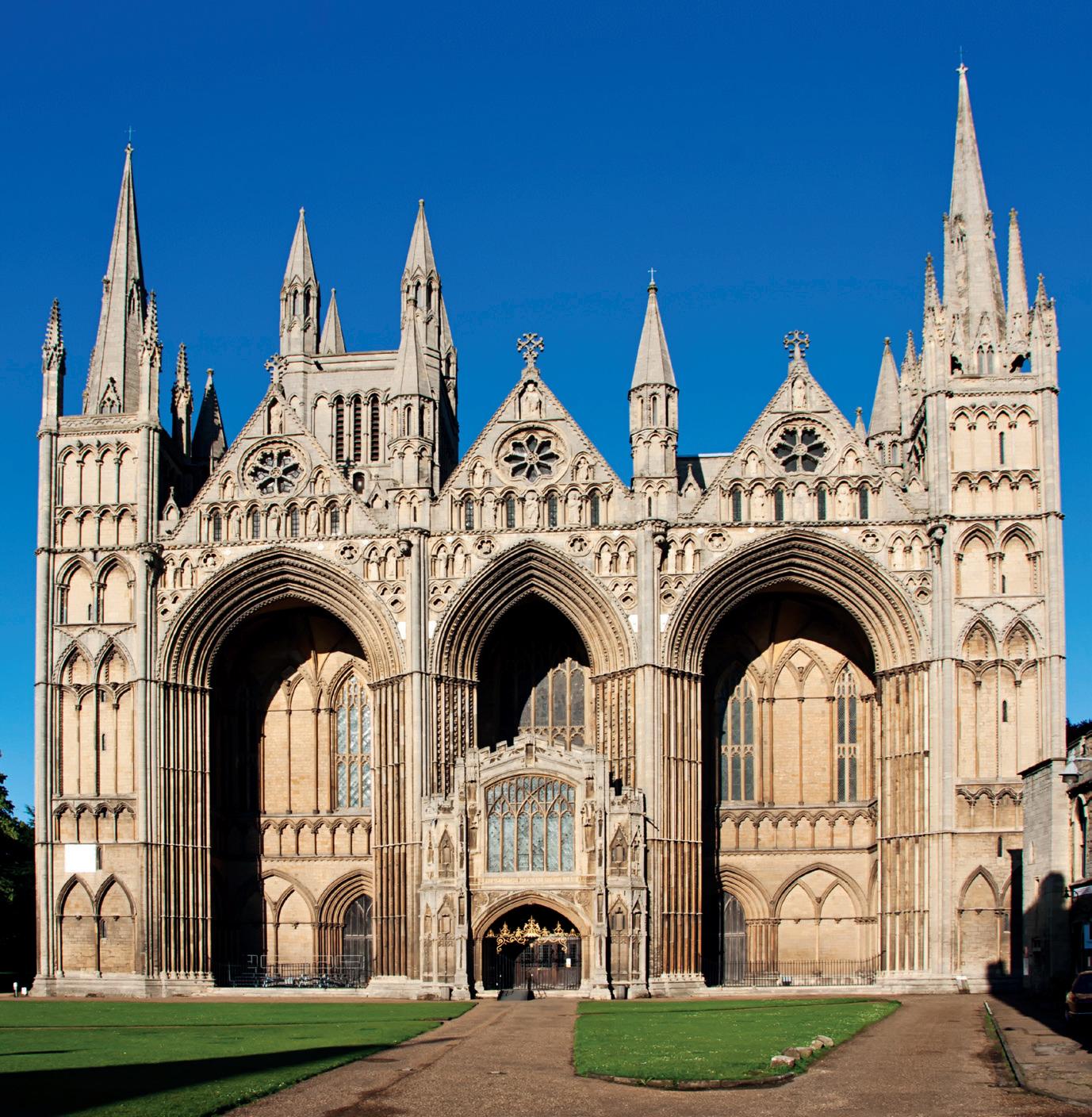
adjust to a new fashion and just occasionally some as a result of a passing whim! On each occasion at Peterborough the cathedral organist had wanted to lower the pitch of the organ to something close to what had by then been established as standard pitch, but the cost of such a change, which involves lengthening and altering large numbers of pipes, made it an impossibility.
In years past, the only stumbling block to rectifying this situation – not so this time, of course – had been that there was never enough money to do so. A while after the 1981 rebuild, however, a new problem arose. The establishment of the CFCE has been a boon in terms of making it possible to maintain the fabric of the nation’s cathedrals, as access to Government and other funding was not available previously, and without it many cathedrals would be struggling even more than they are now. Funding is monitored and to a certain extent controlled through the CFCE, and anyone visiting Peterborough Cathedral will know just how decisive and influential the system has proved in maintaining and improving the quality of our heritage, a task that would be well nigh impossible without such practical help and guidance. We are all profoundly grateful for this help. Quite rightly, we all have to argue our case for support, and justify all applications (and needless to say the published rules and requirements are onerous!). An important part lies in the hearing of possible objections, and that is where we ran into difficulties.
There is a powerful conservationist lobby that believes it is rarely acceptable to change any aspect of an original concept, and considers any change as an assault on the integrity of the item in question – preservation is everything. Usually this approach is thoroughly justified, but when applied to an organ which has to perform a fully functioning practical role, and has in any case been subject to much alteration and addition that has changed its nature over the years, it makes no sense to preserve those aspects that prevent it from fulfilling the task
for which it exists. In essence, the arguments at Peterborough revolved around disagreements as to whether the organ was to be viewed as an historic piece of furniture or as an essential functioning instrument capable of satisfying all reasonable needs.
In 2002, the first attempt to secure approval for changing the pitch resulted in an abrupt rejection. It stated that, ‘Adequate justification for an extensive material alteration to the historic fabric of the organ has not been provided’ and ‘The proposals are likely to result in an alteration to the tonal character of the instrument’. It was our view that the extensive changes to the instrument did not justify their determination to put such emphasis on the historic fabric, which had already undergone so many changes. We were also convinced that the tonal character of the instrument, as it stood, would not suffer, and that there was ample evidence to support this contention by referring to the experience of Westminster and Southwark Cathedrals and the Royal Albert Hall, where such changes had been very successful.
Following the rejection, a letter to the dean from the CFCE made a number of recommendations about how the cathedral should consider tackling the problem. Included were suggestions such as acquiring a second pipe organ, using an electronic instrument, and seeking advice from those who thought they knew how to cope in such circumstances (it was rather dismissive of the evidence and experience of those who actually worked in Peterborough Cathedral and were fully familiar with the difficulties). This did not go down well and led to a second application.
David Painter, Canon Residentiary of Peterborough at the time, undertook the unenviable task of masterminding the second application, which was presented in 2003. It was a very thorough and carefully researched process. First of all, it gave reasoned objections to the proposals put forward by

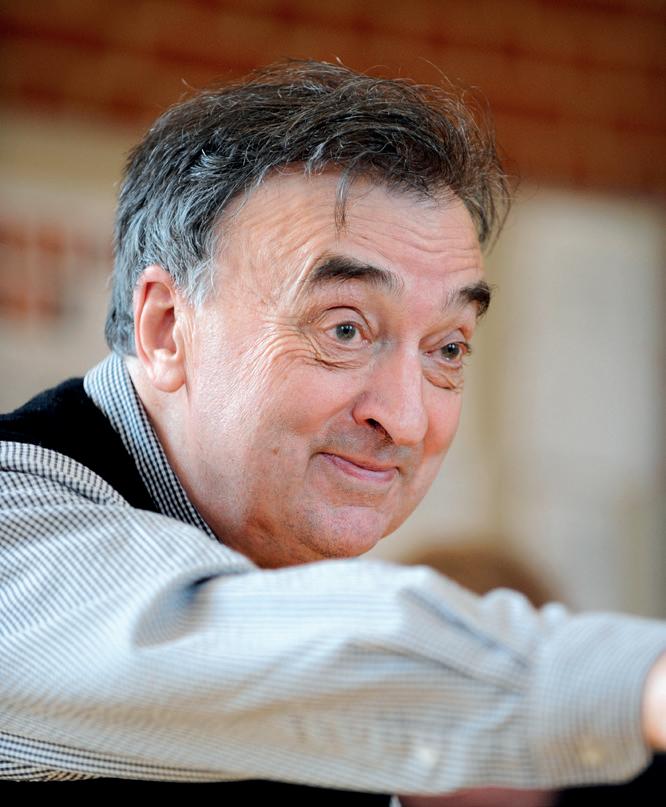
the Commission, not the least of which was that they would relegate the Hill organ to a situation in which it would be used very rarely. A meeting was arranged with members of the CFCE and held at Peterborough so that all matters could be thoroughly discussed. Our case was put forward in detail and there were almost no contrary views expressed by members of the Commission. Ian Bell, our organ consultant, whose work had included advisory positions for St Paul’s Cathedral, the Royal Festival Hall, the Royal College of Organists, Eton

College and many others, presented a report that dealt comprehensively with matters of historical authenticity, technical detail and the tonal quality to be expected. Dr Christopher Robinson, who had been a consultant at the time of the 1981 rebuild, spoke eloquently and from the heart about the importance of promoting and maintaining the highest achievable standards of performance and chorister training. Such standards could not be achieved when boys and girls learnt to play their instruments and perform unaccompanied anthems at one pitch and were then asked to achieve similar results when singing at a different pitch with the organ.
These views were strongly supported by Dr Peter Hurford: “It must be extremely confusing for a youngster’s development of relative (let alone ‘perfect’) pitch,” he said. In addition we submitted a letter of support from ten of the most respected, skilled and publicly recognised cathedral organists and directors of music in the country – King’s College Cambridge, Christ Church Cathedral Oxford, Westminster Abbey and Cathedral and St Paul’s Cathedral amongst them. They said, amongst other things: “We are sensitive to the need to respect the fundamental integrity of distinguished instruments. At the same time, we are aware of the more important obligation to distinguish between musical instruments in use as part of a living tradition, serving a specific purpose, and those valued as museum pieces”.
It was all in vain! As a special exception to normal practice, the dean was invited to attend a CFCE meeting in London at which a decision was to be made (organ experts were not allowed to attend). He found himself faced with considerable opposition, which concentrated on technical questions about degrees of sharpness that he could not be expected to answer with authority: for instance, another dean wanted to know why Salisbury Cathedral’s musicians did not have any difficulty in coping with their sharp pitch, so what was
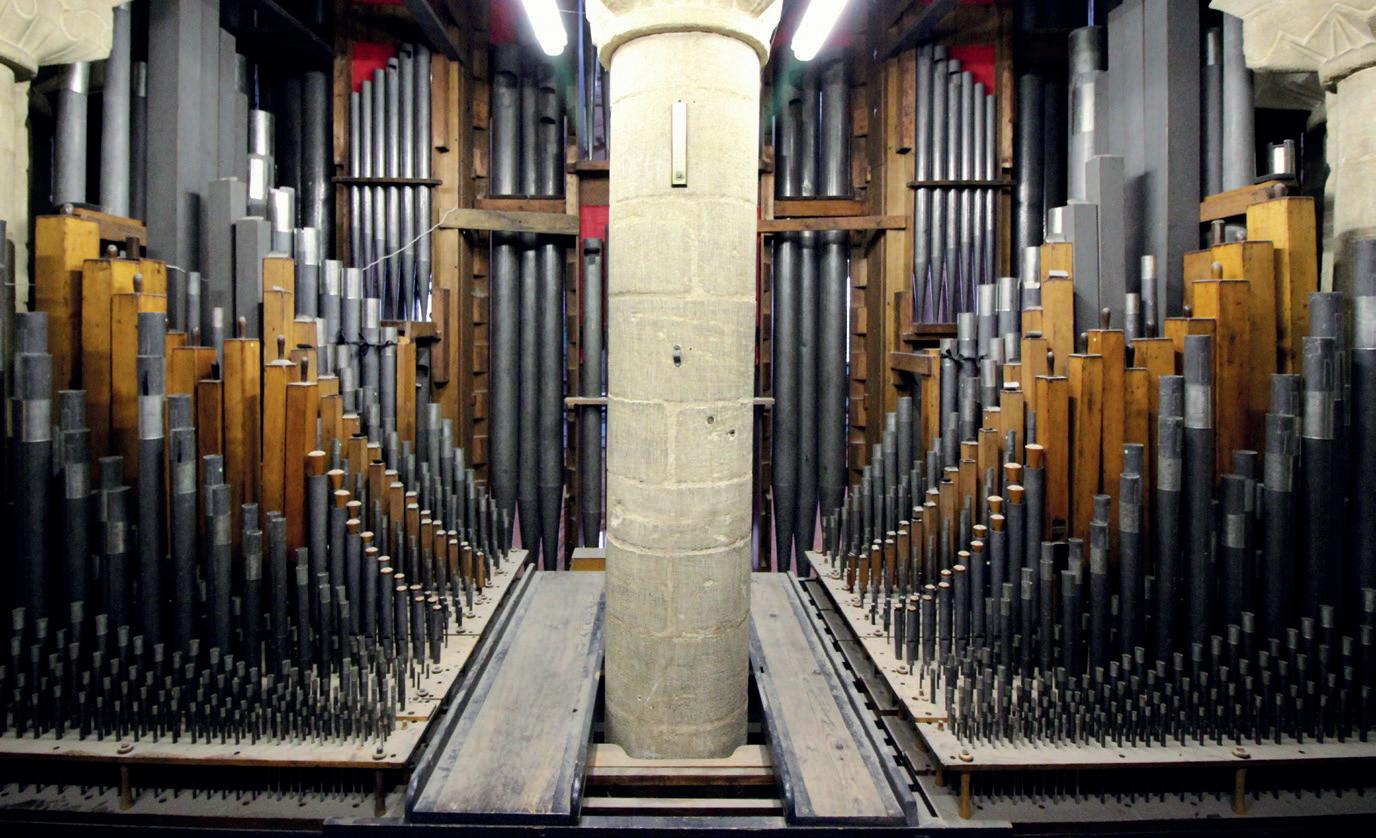
the fuss about? The answer was in the submission – Salisbury pitch was 445cps as opposed to Peterborough’s 452 and the difference was ruinous – but alas, no one seemed to have read or understood the evidence. The application was rejected for the second time.
At Peterborough it was resolved that the matter could not be allowed to rest, but that there should be a delay before an unprecedented third application was submitted. Meanwhile the organ was restored so that it could be used again when the ravages of the fire had been dealt with.
Our final application went to the CFCE at the start of 2009. In January I wrote on behalf of the FAC: ‘The documentation makes it absolutely clear that this magnificent organ must be available to support the cathedral’s mission, outreach, educational and community roles, and services. It will look the same, sound the same, and at long last be able to fulfil its true function… We will be totally failing in our essential purpose if we do not make this change possible, and ask you to approve the application.’

Our then director of music, Andrew Reid, had brought his scholarly mind and total efficiency to bear on all the available information and produced a new and impressively comprehensive submission. In the course of his research he had discovered that when the legendary Stanley Vann was the organist, he had wanted to resolve the problem by disposing of the instrument altogether, so much was he dismayed by the difficulties the pitch presented. Various small loose ends were tied – Sir David Willcocks, who had at one time been organist of Salisbury Cathedral and is renowned for his sensitivity to pitch and tuning, gave us his written support. Ian Bell and Christopher Robinson agreed once more to do all in their power to help. The dean, Charles Taylor, exercised his formidable diplomatic skills. Significantly, Frank Field MP, who had become chairman of the CFCE, immediately demonstrated his commitment to a thorough assessment.
This time, nothing was left to chance. Andrew Reid and the dean organised a special meeting in the cathedral to which Frank Field and Ian Bell were willing to come, together with a technical representative from the CFCE – there was an abundance of goodwill being offered. On the appointed day there was appalling weather which prevented Mr Field and me from reaching Peterborough, so we missed the revealing and amusing demonstration that took place. Andrew and his assistant, Francesca Massey, demonstrated the scale of the problem the choir faces in being obliged to perform at two different and unrelated pitches. First, Andrew played the main organ and then Francesca repeated what he had played on the chamber organ (at 440cps). To make the point even more forcefully, they then repeated the exercise in what should have been unison... There followed a guided tour inside the organ case during which Ian Bell revealed that most of the pipework had been altered over the years.
But it still remained for us to convince the main body of the CFCE. Thanks to the dean’s persuasive powers, we were permitted to take a deputation to the CFCE meeting on 26 February 2009, following which the decision would be made. The CFCE emphasised its obligation to protect and preserve, subjects on which several members spoke with conviction. The
dean put the case for a fully functioning instrument, Ian Bell gave an entertaining and professional description of what the inside of the organ really looked like and how it had altered over the years, Christopher Robinson spoke purposefully about the obligation of cathedrals to produce the highest standards of performance, and Andrew Reid testified to the practical obstacles that the current pitch put in the way of his team. To our relief and delight, the case was won.
And now that Harrison & Harrison have finished their labours, we can look ahead to concerts where instruments of all kinds can join in with the organ’s mighty sound, and singers do not have to adjust their pitch. Check out the Peterborough Cathedral website for more details on the repitching journey – or, much better, visit the cathedral and see for yourself what a difference has been made by the combined efforts of musicians, clergy and organ-builders.
Graham Smallbone read Music at Oxford, was successively Director of Music at Dean Close School, Marlborough College, Precentor and Director of Music at Eton College, and Headmaster of Oakham School. He has been President of the Music Masters’ Association and Warden of the Incorporated Society of Musicians School Music Section, has extensive musical and educational involvement as a governor of the National Youth Orchestra and the Yehudi Menuhin School, and was Chairman of Governors of the Purcell School 1998-2010. He has been Chairman of the Peterborough Cathedral Fabric Advisory Committee since 1990.
not designed necessarily for people of faith but is for anyone who has a hunger for something sacred, and is seeking classical music at its most soul-searching and haunting. It draws on well-researched theology, history, biography, literature, art and the liturgical calendar to place the selection of music in the context of education and information. In his approach to this music Stephen explores the faith that inspired it and the diversity of musical approaches which express it, and the wider context in which he presents the music talks to a broader audience than simply those wishing for a beautiful spiritual journey or a sacred end to a Sunday.
Although the programme deals predominantly with the Christian tradition underpinning much of western classical music, Stephen aims to present theology, culture, politics, history and the passions and musicianship of composers and performers in a way that acknowledges that listeners may not share or be familiar with those religious traditions or their context.

F.or The God Who Sings (FTGWS) on Australia’s ABC Classic FM is a dedicated weekly programme of sacred western classical music presented by Stephen Watkins. The two-hour programme has an established niche nationally and internationally, providing music and thought that audiences aren’t getting elsewhere. Stephen’s role as producer/presenter requires passion for and knowledge of two specialisms – religion and music – plus production skills, and the technical skills for studio operation and the online programme webpage. Stephen and the programme are held in high regard in the arts and the broader community nationally and internationally.
The programme is unique in the domestic and international market, and feedback has indicated that it attracts international online listeners, reaching into Canada and North America, Europe, the Middle East and Asia. The age range also appears diverse, with a younger audience listening more to the latenight broadcasts. A recent postcard from one young listener says, ‘The music is not something I always enjoy sensually, but there is a rigour to it; perhaps intellectual, perhaps something else. I’ve loved the lessons or precepts you have imported that have stayed with me. Thank you so much for your teaching.’
In its 12th year under Stephen’s stewardship, the audience in the late Sunday night 10pm-midnight slot is relatively small but the programme consistently achieves Classic FM’s 1st or 2nd highest weekly share.
Over the years Stephen has transformed the programme from what some may have considered a ‘choir fest’ into something intentionally closer to an exploration of high art and ideas
The aim of FTGWS is to take the listener on a spiritual voyage inspired by the history and festivals of the world’s religions. It’s
Stephen has a deep knowledge of the recorded repertoire, history and new directions in composition and recordings and is widely regarded in Australia and beyond as a leading expert in the field. The programme demonstrates the depth, context and complexity which a presenter with Stephen’s breadth of knowledge can bring to the music, to the ABC and to its audiences.

Sir James MacMillan, whose work often features on FTGWS, has written of the hunger in composers and audiences that Stephen appeals to: ‘In spite of the retreat of faith in Western society, composers over the last century or so have never given up on their search for the sacred…. One constantly hears talk of transcendence, mystery and vision. Visionary mysticism is much in vogue in discussion about the arts these days. “Spirituality” is held to be a positive factor by many, especially among the non-religious, or those who pride themselves on their non-conventional unorthodoxy in religious matters. Music can be described as the most spiritual of the arts by those who proclaim their atheism and agnosticism.’
Jane Jeffes, Content Director of Religion and Ethics programmes for Australia’s national broadcaster, ABC, finds FTGWS ‘a beautiful end to the week, a counterpoint to the prevailing darkness, chaos and tensions of the world in which we find ourselves in 2017. To paraphrase T S Eliot, the programme provides a still place in the turning world; its opening sounds are a reminder of what George Herbert called “Church-bells beyond the stars heard, the soul’s blood…. something understood”.’
‘For the God who Sings’ can be heard live on Sunday evenings at 10pm (Australian time) or streamed on www.abc.net.au then go to /classic/program/forthegodwhosings/ (each weekly programme is available for one month by clicking on ‘Listen Again’).
ABC’s Religion and Ethics Department supports FCM through Corporate Membership of FCM.
Education details:
Townsend C of E School, St Albans (1997-2002)
Christ’s Hospital (2002-2004)
Selwyn College, Cambridge University: MA in Music (2005-2008) FRCO (2009)
Career details to date (and dates):
Assistant Organist, Winchester College & Music Assistant, The Pilgrims’ School (2004-2005)
Organ Scholar, Selwyn College, Cambridge (2005-2008)
Organ Scholar, Peterborough Cathedral (2008-2010)

Tutor to Choristers, Magdalen College School & Associate Organist, Magdalen College, Oxford (2010-2011)
Assistant Organist, Lincoln Cathedral (2011-2014)
Assistant Director of Music, Rochester Cathedral (2014-present)
Were
Yes, at St Albans Cathedral, where I was a founder member, and Head Chorister in my final year. Being a chorister is why I am a musician now: it was an incredible, immersive formative experience, and I loved every minute. There is probably no musical experience that can give a child such expertise and musical learning as being a chorister.
Being a chorister! Listening to the colours that the organists used, especially in the psalms, was really inspiring, and I have to admit the sheer power that you can unleash was also a contributing factor. My mother is an organist, and, though I went on an Oundle course aged 12, and thoroughly enjoyed it, I didn’t want to follow in my Mum’s footsteps, so didn’t start then. However, by the time I was 16, the call was too great, and I could resist no longer – so I suppose I started fairly late in the end.
Is anyone else in your family musical?
See previous answer! My whole family. Both my sisters also work in the music industry, in London, my Dad sings in every choir in his area, and my Mum is a piano teacher. She actually taught me all the way up to Grade VIII (and both my sisters). Growing up, my sisters and I formed a piano trio with our first study instruments (piano, violin, cello), and my Mum and I have now performed many concerts as a professional duo, in piano duet (Brahms Requiem) and recitals of organ duets – we wonder whether we are the first mother and daughter duo in this country?!
What stands out from your time as Asst Organist at Winchester College?
It was my first experience working in a school, and with choristers (and ‘quiristers’ as they’re called at the College), and I realised I loved working with children.
Are there any big differences between your positions at Lincoln, and Rochester?
Huge. At Lincoln I was part of a team of four organists, where I played for many services, did lots of work with the choristers and directed the cathedral’s chamber choir, Lincoln Cathedral Consort. At Rochester I direct the girl choristers, and have responsibility for them, as well as playing for services for the boys.
How long have you been a member of the Holst Singers?
Just over two years now, I auditioned as soon as I moved down to Rochester, where I am so close to London. I absolutely love singing with such a brilliant choir, and working with Stephen Layton is fascinating, and incredibly fulfilling. In March we came to Rochester to perform Rachmaninov’s Vespers, and our next concert is at St John’s Smith Square, where we continue our Handel oratorio series with Jephtha on 20 May.
How do you fit all your commitments (sporting, cathedral, singing) into your daily life?!
Hmm, with difficulty. It is a real problem in life wanting to do both music and sport, and this is something I first encountered as a chorister and have been battling with ever since! Cycling or walking to work helps me stay active (which is important for productive work in my case), and I do manage to play hockey for a local club, Gillingham Anchorians, though am able to attend training far more often than actually play matches.
What organ pieces have you been inspired to take up recently and why?
I have been working on some Bach trios, as I felt I wanted something that I could really engage with on a cerebral level. I recently broke my right little finger (playing hockey – oops!), and it turns out it is rather key to the majority of organ music and accompaniments. This was another reason for the trios, as they do not have any big chords to negotiate.
Have you been listening to recordings of them and if so, is it just one interpretation or many and which players?
Contrary to what many people do, I actually don’t listen to recordings until after I have learnt a piece of music. I feel I want to interpret it using my own resources first, and then use a variety of recordings as a secondary level of learning.
How much conducting do you do?
I do more conducting now than I do playing, given that I direct the girl choristers. At Rochester we alternate weekends between the treble lines, so I have a full weekend to conduct once a fortnight, plus weekday services.
What was the last CD you bought?
‘Three Wings’ – it is a fusion of plainsong sung by the Winchester College quiristers, with contemporary music backing tracks by David Lol Perry. It is not at all what you would expect with plainsong, and has an eerie beauty to it.
(See review on p54)
What was the last recording you were working on?
We are currently just about to record a new disc of favourite anthems at Rochester Cathedral, with dates booked in April, featuring the boys, girls and men.
What is your
a) favourite organ to play?
Lincoln Cathedral, I do miss it at times!
b) favourite building?
Peterborough Cathedral, such a friendly building, with the stunning mediaeval ceiling paintings, and unique in being able to see from one end to the other.
c) favourite anthem?
It is hard to choose one, but Britten: Rejoice in the Lamb would be high up there, as would many Renaissance anthems
d) favourite set of canticles?
Mathias: Jesus College Service (not because it is great music, but because it was my favourite as a chorister, and I have never stopped enjoying it)
e) favourite psalm and accompanying chants?
Andrew Reid’s quadruple chant for the nasty bits in Psalm 78
f) favourite organ piece?
I most enjoy playing Tournemire Victimae Paschali and Eben Moto Ostinato, and Messiaen La Nativité
g) favourite composer?
For the organ: Messiaen. Favourite composers overall: Rachmaninov and Britten. And Bach, of course.
Which pieces are you including in your next organ recital?
Probably Alain Deuxième fantaisie and I have only ever given one recital that didn’t include any Bach. Beyond that I am still experimenting with my healing finger to see what works.
Have you played for an event or recital that stands out as a great moment?
Performing Giles Swayne’s virtuosic Stations of the Cross at Lincoln Cathedral. Swayne taught me composition at Cambridge, and he actually came to the performance (it doesn’t get done very often). The movements are fiendishly difficult, and it was a huge project, but it was a great moment. I did once play Saint-Saëns Organ Symphony at the Royal Albert Hall, that was pretty cool!
How do you cope with nerves?
Ensuring that I have done sufficient practice before performing, that really helps calm you down. Concentration, especially as you begin, as it is normally 30 seconds into a performance that it suddenly hits you that there are people listening.
What are your hobbies?
Playing (and watching) sport: I play hockey for Gillingham Anchorians, play squash, and I have a road bike. I have even done one triathlon.
Other than that I also enjoy walking (mountains and hills, preferably in Scotland), reading (fantasy and historical fiction best), and socialising with friends (often involving good food and drink).
Do you play any other instruments?
The piano (as a pianist, not as an organist!) and I sing, which is something that I am trying to do more of at the moment.
What are the drawbacks to life as an organist?
Playing the organ can be a very isolating experience, and most humans are social creatures, so I think it is important for organists to ensure they do not spend too much time holed up in organ lofts.

As a young English cathedral chorister visiting the great northern French cathedrals on holiday, I was amazed to find that there were no choirs to fill these incredible buildings. This inspired me, and by about the age of twelve I knew what I wanted to do for a career. The ambition was still there when I reached my final year at university. But how to go about it? The answer appeared as if by magic in the form of a note addressed to all organ scholars from Edward Higginbottom. It was an advertisement for ‘organ scholar / assistant’ at the Maîtrise de Caen. Five minutes after reading it I wrote a letter of application.
Sometime later, in September 2000, I was met off the Portsmouth–Caen night ferry by a man with long grey hair and a beard, smoking a pipe and driving a battered Renault Twingo. He was wearing big brown leather boots. He didn’t look like a cathedral organist, though older readers will no doubt remember similarities with Robert Weddle, formerly Organist of Coventry Cathedral. And so I found myself spending two wonderful years living in Caen, working as Robert’s assistant, training the choristers of the Maîtrise de Caen at the town’s Conservatoire and accompanying their weekly concerts in the church of Notre Dame de la Gloriette.
I was surprised to find that the Maîtrise didn’t sing for services, but Robert explained the historical context to me. There had been a strong and vibrant tradition of cathedral and chapel choirs in France which came to an abrupt halt at the start of the French Revolution. The tradition did not recover after the end of the war, despite attempts in various places at various times. The most successful movement to recreate choir schools wasn’t until the 1980s when a renaissance of choir schools was promoted, supported by the government, and Robert’s founding of the Maîtrise de Caen was part of it. New choir schools were created within conservatoires, such as Caen and Colmar (both boys’ choirs), Rennes, Paris or other structures such as the Centre de Musique Baroque at Versailles. The strict division of church and state in France meant that these new maîtrises would not be liturgical choirs. At the heart of their mission was, however, the revival of a huge forgotten repertoire of French sacred choral music, written for the cathedral choirs of the ancien régime. A fine CD of music by the Norman composer Sébastien de Brossard is an example of Robert’s work in this area.
It should be noted that there are liturgical choirs with children in many cathedrals in France today, but for the vast majority,
their work cannot be compared with an English cathedral choir. They do not sing daily services. The one exception is Notre Dame de Paris.
The time came when I needed to move on from Caen. I felt ready to direct my own choir, but where? There were no jobs to apply for. So I wrote to conservatoires all over France. There was still not a single choir school in south-west France, and so I was happy to receive a reply from Marc Bleuse, then Director of the Toulouse Conservatoire who had previously been Director of Music for the Ministry of Culture. He was a fan of the English choral tradition and had been involved in the founding of one of the pioneering new maîtrises in the 1980s: the Maîtrise du Centre de Musique Baroque at Versailles. He invited me to Toulouse and I presented my project to him and the Deputy Mayor.
My first years in Toulouse were tough. I discovered on my first day, in September 2003, that Marc Bleuse had just retired. Without his understanding it was very hard work getting my vision across. It took three demanding years of negotiations during which I nearly gave up many times. Finally, though, in September 2006 I found myself with 12 sparkling young choristers in front of me, and I never looked back.
Today there are 25 choristers, who attend an annex of a local secondary school within the buildings of the Conservatoire. As at Caen, they benefit, along with instrumental and dance pupils, from specially adapted timetables allowing them to spend around ten hours a week on their musical studies in the Conservatoire. There is also a group of girl ex-choristers up to eighteen and the tenors and basses of the choir (mainly ex-choristers and singing pupils, with some professional support). The choir now gives around 12 concerts a year. We don’t have any one fixed venue, but instead move between three principal venues in Toulouse: the wonderful Basilique Saint Sernin (the largest Romanesque church in Europe and a UNESCO world heritage site), the Temple du Salin, and the Conservatoire’s own 400-seater auditorium – the beautiful converted church of Saint Pierre des Cuisines. Outside Toulouse, concerts are given regularly throughout the region, and further afield. Last year we sang at the Chapelle Royale in Versailles. We have also given concerts in England, Germany, Spain and Italy.
The choir’s repertoire is constantly growing and diversifying. I have, however, focused on several key areas. Firstly, and obviously, French music and the revival of French cathedral
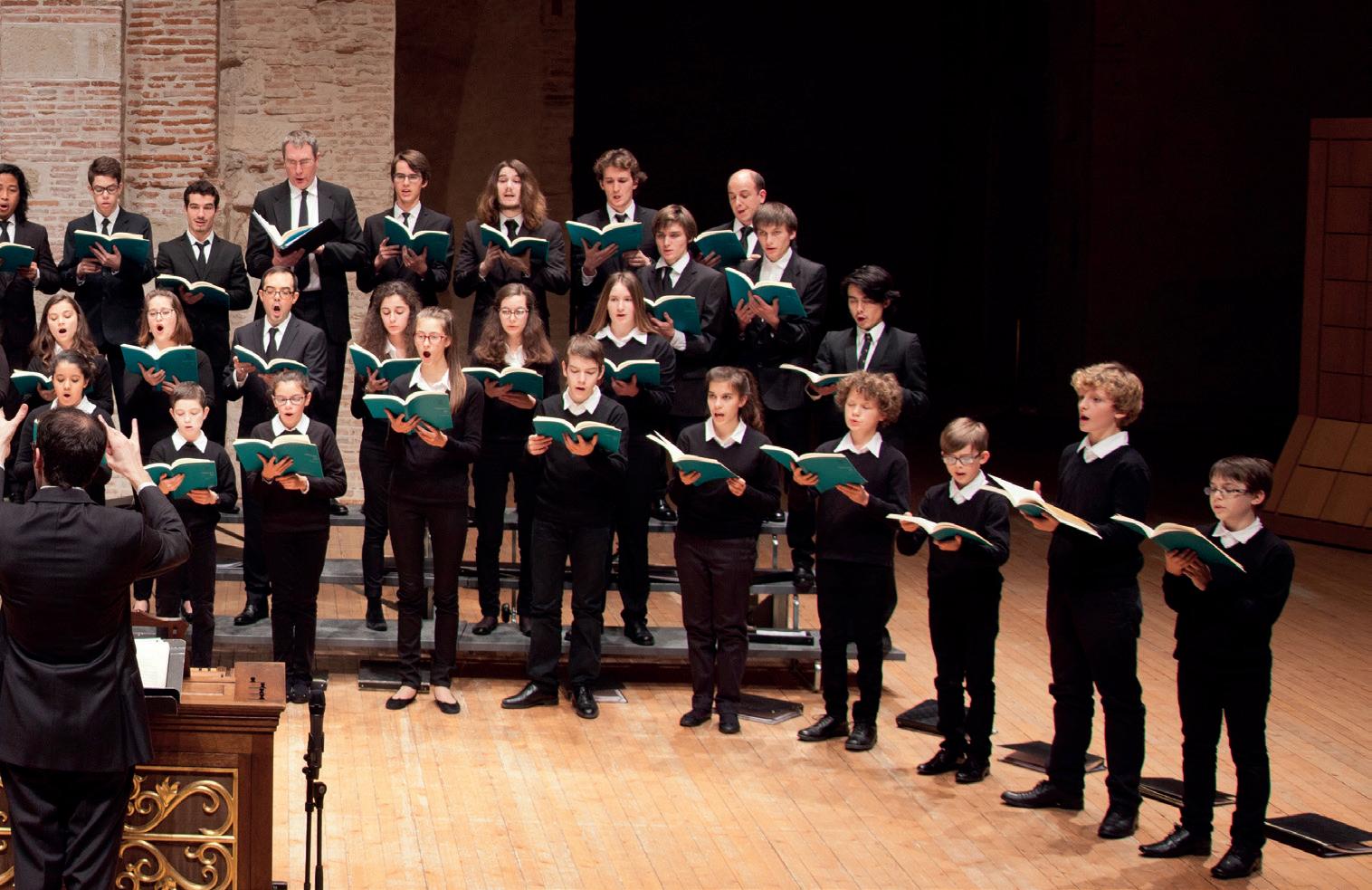
music that has been largely forgotten. For example, we have given programmes of music by composers from the cathedrals of south-west France such as Guillaume Bouzignac (d 1683), and Etienne Moulinié (d 1676) and two maîtres de chapelle of the Toulouse cathedral: André Campra (d 1744) and Guillaume Boni (d 1594). We have also collaborated with Dominique Vellard and his renowned Ensemble Gilles Binchois, for a project reviving French fauxbourdon. Together we recorded a CD, ‘Polyphonies oubliées’, which received a Diapason découverte
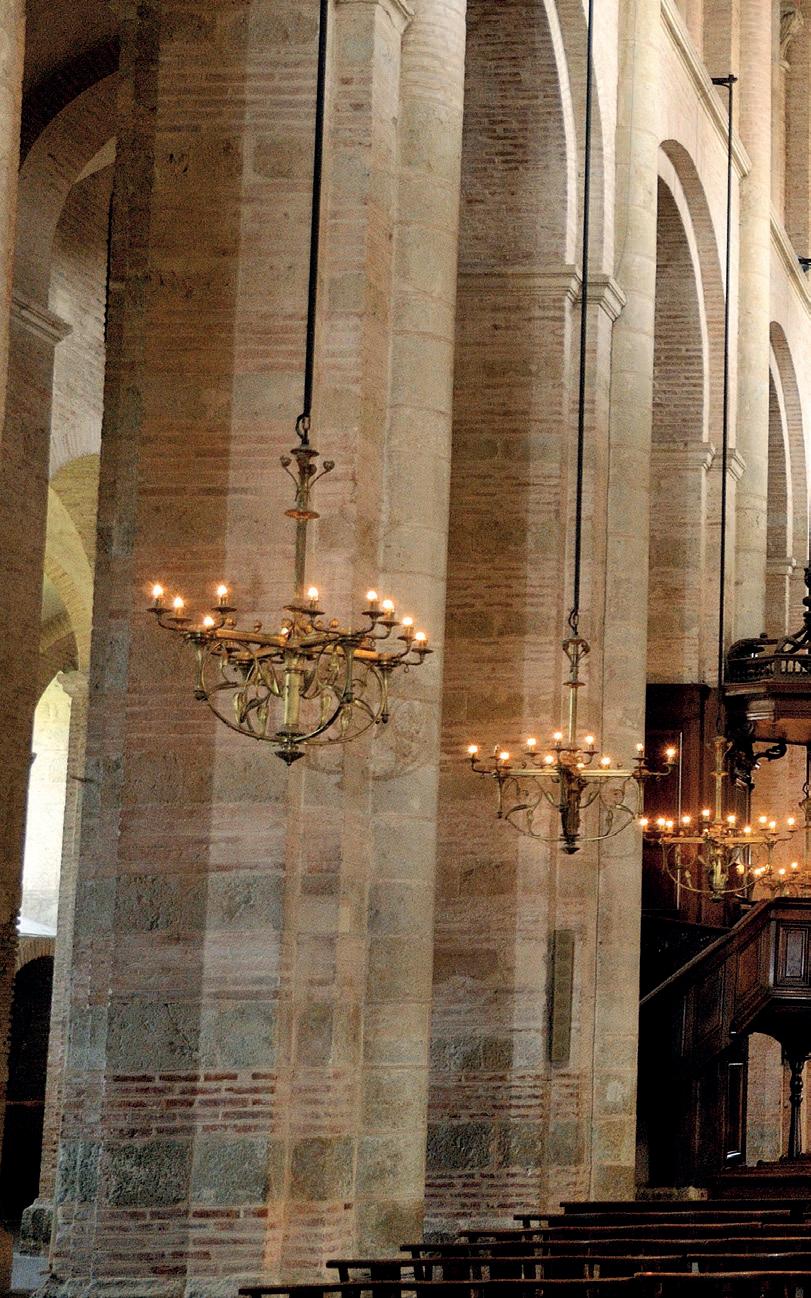
It has also been my aim to bring British choral music to greater attention here. I have been delighted to find how much the choristers enjoy singing Howells or Walton (the Coronation Te Deum seems to be one of their favourite pieces!). We regularly sing contemporary music and have commissioned a number of works, even venturing into electro-acoustic music. Every now and again we put on big works with an orchestra, such as Britten’s St Nicolas
We have developed a recording profile with Regent Records. The first cohort of choristers recorded our début CD in 2010: ‘Missa Brevis’: the upper voice short masses by Caplet (a beautiful, little-known work), Fauré, Delibes, Britten, and the first recording of Kenneth Leighton’s Missa Cornelia. Our two subsequent CDs have been dedicated uniquely to French music: ‘Motets français’ and ‘Noël français’. In the next few months we will record our fourth CD with Regent Records, focusing this time on music from Eastern Europe (Stravinsky, Kodály, Bartók and Penderecki).
The Maîtrise often collaborates with other ensembles. This year, for example, we have given a concert of English renaissance music with the renowned Sacqueboutiers de Toulouse, and Bach’s St John Passion with the Orchestre des Passions of Montauban as well as Stravinsky’s Mass with instrumental teachers from the Conservatoire. We also benefit from regularly having English organists over here, as they bring with them their English skill of accompanying! We sometimes have the pleasure of working with William Whitehead, and there are often organ students at the Conservatoire. Makoto James (organ scholar of Christ Church Oxford) and Jem Stephenson (All Saints Margaret Street) have both studied here recently. Being able to sing works such as the Langlais and Vierne masses with the two organs in Saint Sernin is a great privilege.
Last year, with the Merton College choir, we celebrated our tenth anniversary with two concerts of the Mozart Requiem. As we started our 11th year, just as I was feeling that the choir

was really established, out of the blue we found ourselves in the midst of a crisis. In November 2016 the local education department announced that it was going to close down the school within the Conservatoire where the choristers and other specialist instrumental and dance pupils are educated. Their argument was that it was wrong for these pupils to be educated uniquely amongst themselves and that they should be sent to normal secondary schools. It would have been a catastrophe for the Maîtrise, the equivalent of closing a cathedral choir school or specialist music school in the UK.
We put up a fight. One of our ex-choristers organised a petition which received over 6000 signatures. The press became interested. Notably, the conductor Hervé Niquet gave an impassioned defence of the school on France Musique radio. After two and a half months the Mayor of Toulouse publicly supported us and wrote to the education department to ask them to abandon their plan. In February 2017 we heard that the school was saved, at least for the near future, and therefore the future of the Maîtrise is safe, for now. Nothing can be taken for granted, though.
The other fragile area is the recruitment of lower voices. The lack of a choral tradition means that there are very few candidates from outside our own home-made pool of talent (the ex-choristers). There are therefore always gap-year opportunities for young British singers fancying a year in la ville rose!
There is no doubt that the Maîtrise is hugely influenced by the English cathedral tradition and that in creating the choir I have both consciously and subconsciously brought many of the fine qualities of that great model. I would say that this is mainly in the way I train the choristers. The English model of the eldest pupils transmitting their savoir faire to the younger choristers is at the heart of this, as are nearly daily rehearsals, learning a wide repertoire quickly, bringing out individuality whilst working as a team, and imbibing strong musical discipline.
Obviously there are many differences. Singing for the liturgy was out of the question, as was separating boys and girls (let alone having just one or the other!). It is a constant battle to keep the number of boys at around half, but the mixed group is hugely successful as a team and, I think, as a sound. Listen to one of our recordings and judge for yourself! (See reviews of the Maîtrise CDs in CM 2/14 and CM 2/16).
For me it is a huge pleasure to see how much enthusiasm there is, both from pupils, their parents and from our evergrowing audiences (our concerts are always full). Some of the first cohort of choristers are training to become professionals. A few of the present choristers have already announced that they intend to succeed me, so there is indeed hope for the future!
www.maitrisedetoulouse.fr

Mark Opstad started his musical life as a chorister at Bristol Cathedral and music scholar at Bristol Cathedral School. He was Organ Scholar at Balliol College Oxford, where he read Music and then spent a year as Assistant Organist at Clare College Cambridge whilst taking his PGCE. He studied the organ with David Sanger and won an ‘Entente Cordiale’ scholarship from the French and British governments allowing him to continue his organ studies in France whilst simultaneously commencing his career as a choral director. Over the last decade he has built up the Maîtrise de Toulouse into one of the leading French choir school models. In 2017 he gained dual nationality.
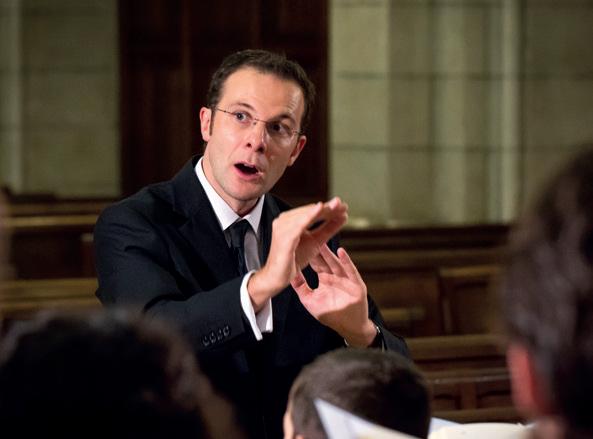
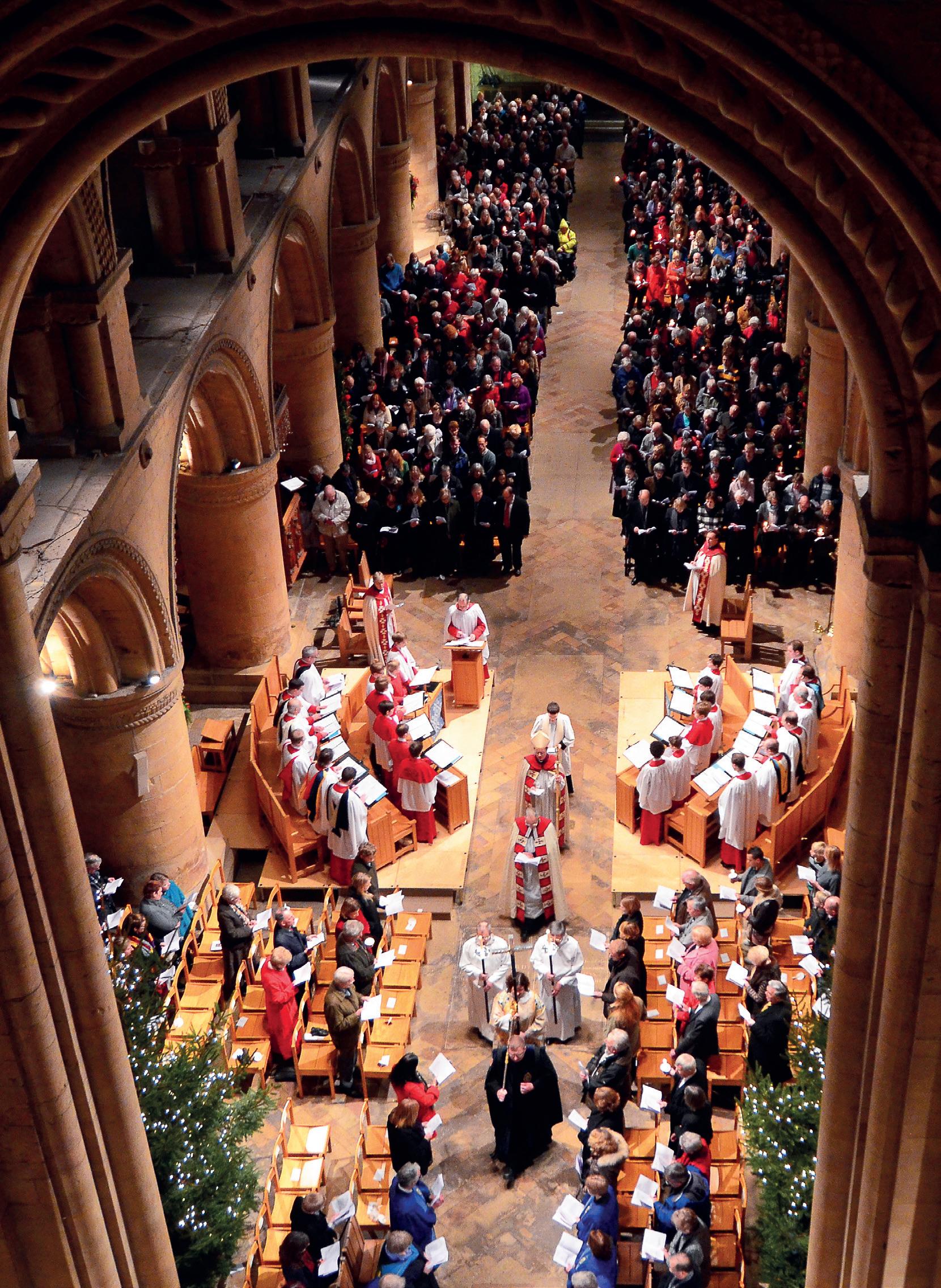
Leaving a cathedral community after some 28 years in post as cathedral organist (Rector Chori is Southwell’s delightful title) inevitably affords the opportunity for retrospective musings. Some of these are bound to be of the ‘What did I manage to achieve?’ variety, some of the ‘What a relief we got through all those years without any major disasters’ variety, some of the ‘Phew! It’s someone else’s responsibility now’, some of the ‘I’ll really miss the…’[in my case, the Advent Procession, Music for Passiontide, and curries with the lay clerks], some of the ‘I’ll really not miss the …’ [in my case, ‘Health & Safety’ committee meetings, and worrying whether sufficient potential choristers would apply each year], some of the ‘If only I’d managed fully to get to grips with…’ [all cathedral organists will have their own list of intractable topics here], and of course ‘At last, now I’ll have more time to play with my train-set/compose/play the organ’ or even, ‘At last! Now I’ll never have to play the organ again!’
Despite 1988 seeming a long time ago (the year in which GCSEs replaced O-levels, when Margaret Thatcher became the longest-serving British Prime Minister of the 20th century, and tragically when Pan Am Flight 103 was blown out of the sky over Lockerbie) I recall with absolute clarity a conversation I had, concerning the advertised Southwell post, with former Southwell cathedral organist Dr Robert Ashfield. Ashfield had been Rector Chori from 1946 to 1956, then moved south to teach at the RCM and live in Rochester as cathedral organist, where I came to know him during the late 1970s and 80s in his retirement. Robert and Mary were always saying nice things about Southwell, and they had a beautiful painting of Vicars’ Court; what an idyllic place to live and work, I thought. When the post came vacant I spoke to Robert about it. He said that Southwell was the most beautiful place and that the cathedral and town community were welcoming and supportive. But he also had a few words of caution: (1) ‘You’ll always find it a challenge to find sufficient boys and men, given the location of Southwell’, and (2) ‘The Minster has been short of money ever since the Church Commissioners stripped it of its assets in the 1840s.’ And of course he was correct; those two problems proved the greatest challenges of all during my years there and have not yet been fully overcome. Nonetheless, I found that with hard work, and an imaginative approach, neither aspect prevented music flourishing in the years I was in post.

Robert’s encouragement for me to apply to Southwell was matched by that of another seminal person in my life, Sir David Lumsden, who was not only my tutor at New College Oxford, where I was his organ scholar from 1971-74, but had also been Ashfield’s successor at Southwell before the advent of my immediate predecessor, Kenneth Beard, in 1958. David Lumsden went on from Southwell to direct the music at New College (despite the Minster endeavouring to hang on to him by having a Positive section added to the cathedral organ!), He, like Dr Ashfield, always waxed lyrical about Southwell –even about the rat in the kitchen corridor of 4 Vicars’ Court, and especially about Provost Heywood, whom he occasionally led a merry dance. He, too, loved the people at Southwell and still tells the tale of a lay clerk who one day turned over the page in an anthem they were singing, sang two bars of utter gibberish, then resumed his usual accuracy. Asked by Lumsden after the service what had happened at the top of page four the answer was, “Ah well, Dr Lumsden, when I turned the page there was a squashed spider on it, but I didn’t realise it was a spider, so I sang it.”
My era at the Minster was preluded (and interluded) by three replacements of my left hip joint. The hip became arthritic in the 1980s for no apparent reason. I went to see a surgeon late in 1988 who said – rather to my shock – that it needed replacing (I was only 36); the Southwell position was being advertised just at that time. I thought there was little point in applying, as the hip was so bad I couldn’t even get up to the organ loft at Rochester, let alone play, and to conduct I had to sit on a high stool. But apply I did, and at this point the next significant person comes into the story – Provost Murray Irvine. Like all ‘parish church’ cathedrals at the time, Southwell had a provost rather than a dean. Provost Irvine had been a residentiary canon at Hereford and was a real cathedral person with an affection also for parish work: ideal for Southwell with its local and diocesan communities. Amazingly, when it came to interview he was not remotely fazed by the fact that I could neither stand for very long nor play the organ – all was done in a very civilised fashion in The Residence (the grand house at the east end of Vicars’ Court where the provosts/deans live) over several delicious meals and a couple of interviews. I’ll never forget being offered the job: my wife and I had to leave Southwell early (they’d rearranged the interview times specially for me) so as to drive back to Rochester in time for a BBC Songs of Praise final camera rehearsal at the cathedral. I was conducting and had to be placed in the nave pulpit, sitting on a high stool disguised with
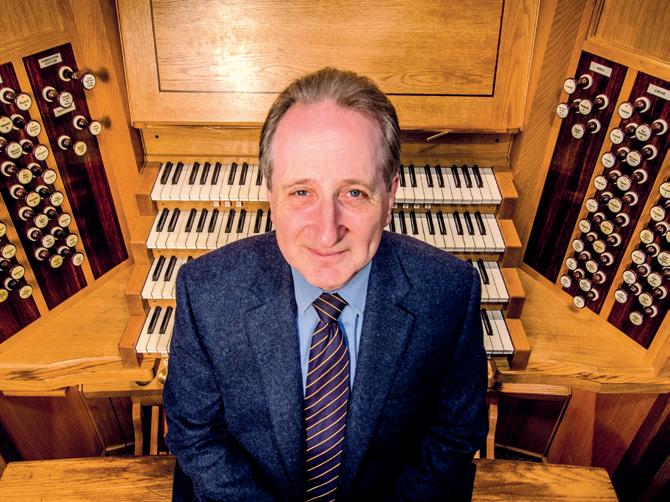
yards of black material because I couldn’t stand. The minute we arrived home from Southwell, the phone was ringing. It was Provost Irvine with the wonderful question, “Would you like to come and be our Rector Chori?” A fabulous, life-defining moment for Anne and me, then newly-married. That he could put such faith in appointing a cathedral organist whose ability to do the job depended entirely on a hip replacement he was yet to have speaks volumes for Murray Irvine.
If this reflection has so far concentrated on people, that shouldn’t be a surprise, for it is people who make the world go round, and people who make a cathedral organist’s life easy or hard. So I’ll always be grateful to the somewhat ageing lay clerks in 1989, several of whom on my arrival said they realised they needed to retire and would do so, one by one, once I found replacements. That came to pass, and with occasional struggles we have had a full team ever since (of both daily and auxiliary lay clerks); a wide-ranging age group who have always got on well and socialised together, were supportive and helpful to me and my organist colleagues, were 100% dedicated to singing in the Minster, and remain completely without the back-row negativism which can infect some cathedral choirs. Indeed, whenever I was away on cathedral organists’ conferences it was always a joy to get back, for the grass is not always greener elsewhere, I soon came to realise.
I was (almost) always blessed with committed and supportive choir parents, particularly since we closed the Minster School’s boarding houses some 20 years ago. Their commitment –particularly that of the more distant families – was fantastic; we simply couldn’t have functioned without it. When we had to abandon boarding, I contacted colleagues who ran successful cathedral choirs (with a similar daily commitment to ours) with day-boys only – such as Norwich Cathedral and New College Oxford (which used to have boarders). Their advice was simple: “If the parents see excellence in the school and in the choir, and positive advantages for their boys, then they will travel miles to enable them to become part of the music foundation”. And so it proved. As a committed educationalist it has always been fascinating for me to see how choristers develop and what they go on to do; I’m always touched by those who come back in their 20s (and now 30s) and tell me just how much the Minster Choir meant to them – especially in retrospect. And of course it delights me that some Southwell choristers are now cathedral organists or assistants themselves, amongst them James Davy (at Chelmsford), Geoffrey Woollatt (no. 2 at Manchester), and Charles Harrison (of Chichester) who was actually my first organ scholar, having been a chorister under my predecessor, Ken Beard.


I started the Southwell organ scholarship so that boys or girls from state schools without the benefit of a school chapel could spend their sixth-form years at the Minster School, studying organ and harmony with me, and playing in the cathedral. This worked until boarding closed, after which it became the gap-year or post-graduate position that it now is. I have been particularly proud to see these young men and women all make great strides in our profession; they play, compose, direct choirs or conduct orchestras all over the world, and it is a real pleasure to be in regular contact with nearly all of them. Several are cathedral organists, most recently two in Wales: Emma Gibbins at Newport and Stephen Moore at Llandaff.
I had the pleasure of working with five assistants. The first, Peter Wood, had been appointed back in 1958 by David Lumsden, was still loyally playing in 1989, and indeed ran the cathedral’s music for the term before I arrived. I much appreciated his very warm welcome to Anne and me and his willingness to adapt to the ways of a newcomer with a distinctly different repertoire and style from that of Ken Beard. My first appointee, Philip Rushforth, fresh from Trinity College Cambridge, shone as our first young assistant since 1958; he moved on to be director of music at Chester Cathedral, to be replaced by the talented Simon Bell, from Westminster Abbey. After a distinguished few years with us Simon moved to Winchester Cathedral and is now at Tewkesbury Abbey. Philip White-Jones came next from Liverpool, Cambridge and Winchester, and then took a unique step for a cathedral organist, that of leaving the profession to become an airline pilot for BA. I suppose flying an Airbus is just like playing the organ – all those buttons, lights, knobs and pedals: and such power! Then appeared another Simon – Hogan – from
Indeed, whenever I was away on cathedral organists’ conferences it was always a joy to get back, for the grass is not always greener elsewhere, I soon came to realise.
St Paul’s Cathedral, who from the very first impressed us with his all-round musical ability and astonishingly brilliant organ playing. Simon and organ scholar Edward Turner (another former Southwell Chorister, then organ scholar of Worcester College Oxford) ably held the fort for two terms until my successor, the talented Paul Provost, arrived from Guildford Cathedral in April this year. I couldn’t possibly have wished for a more wonderful set of colleagues.
Many organists reading this will at some point be thinking, ‘So far, so good, but what about the clergy?’ Well, I have been blessed with a very appreciative, supportive and collegial group of priests with whom to work day by day. All – provosts, deans, canons, vicars choral and chaplains – regularly expressed pleasure in the music we offered to God, day in and day out, and all helped us deal with the ups and downs of delivering that music.
And now for the next chapter in my life... Coupled with my cathedral choir work has always been a passionate interest in organ design and construction. It was triggered during my years at Solihull School in the 1960s, singing and learning the organ, and has continued unabated ever since. Working as an organ consultant is indeed now pretty well my full-time occupation, along with giving recitals, lectures, conducting choral festivals, directing Nottingham Bach Choir and examining diploma candidates for the Royal College of Organists.
Organ advice was initially sought from me in my twenties, during my first post as Assistant Director of Music at Tonbridge School. But the church would always ask the opinion of someone else, too, just to make sure I wasn’t talking rubbish (once the vicar even prayed during an organ project PCC meeting to discern whether God wished them to use guitars rather than have an organ at all). Then in my thirties they stopped asking anyone else, and the number of clients slowly grew. When I reached my forties they started paying me for advice and the significance of some of the projects grew, as cathedrals began to ring me up; in my fifties they started paying me a professional rate, projects of great interest and significance appeared one after the other, and I gave up being Editor of the IAO’s Organists’ Review as there simply wasn’t the time for everything any more. Reaching the age of 60 in 2012, I came to realise that there would come a point at which I would have to decide between one major strand of my work and the other, and so I abandoned directing cathedral music and am instead consulting on organs and giving recitals and talks. The diary is now quite full enough!
Curiously, I’ve not left the cathedral world itself at all –quite the opposite, for at the time of writing I find I have 15 cathedrals (in England, Wales, Scotland, Ireland – and New Zealand) as current clients, for projects small and great. What a privilege it is to remain so creatively involved in cathedral music!

We pick up our narrative in 1886 from CM 1/16. César Franck is professor of organ at the Paris Conservatoire, Widor is organist of St Sulpice and, at the annual competition at the National Institute for Blind Children (NIBC), a boy of 15 played the piano and violin so magnificently that first prize was awarded to him in each. This was the young Louis Vierne.
over from Franck, making a declaration of principle that was to guide his teaching over the next 50 years:
‘In France we too greatly favour improvisation over execution. This is more than a mistake. It is nonsense… I fail to see why the organist should be the only artist exempt from the need to know the entire literature of the instrument he plays. I confine myself to citing that incomparable miracle, the organ music of Bach.’
Vierne developed a close relationship with Widor and, in return, Widor devotedly tutored Vierne for the next six years. In 1892, before Vierne had even won an organ prize, Widor appointed him deputy at St Sulpice, and in 1894 he was named as Widor’s assistant at the Conservatoire.
In his Première Symphonie, composed in 1898, Vierne takes a form inherited from Widor and pours into it his own brand of counterpoint, rhythm and harmony. Subsequent symphonies and secular suites reveal the influence of Franck, Schumann, Wagner and Debussy. As to timbre, he uses Cavaillé-Coll’s tone colours much as Widor and Franck had done – the foundations, mixtures, and reeds; the solo clarinette, and flute harmonique; the piquant mutations; and the shimmering gambe and voix celeste.
When Widor resigned as organ tutor in 1896 to accept a chair in composition, he did so on the condition that Alexandre Guilmant, another pupil of Lemmens, succeed him. Guilmant was one of the world’s first modern touring organists, playing in Russia, Spain, Holland, Belgium, Italy, England, Canada and the United States. He occupied the organ bench of La Trinité in Paris for 30 years, and composed prolifically.
Vierne, born almost completely blind, had his first encounter with the organ as a ten-year-old at St Clotilde in Paris, where Franck was playing. His ambition then was to enrol in the great man’s class at the Conservatoire, which he achieved in October 1890, only to be faced with the tragedy of Franck’s death just a month later. It was Charles-Marie Widor who took
By the closing months of the century, Vierne was the protégé of these two famous masters, as well as a published composer and a well-known recitalist. In the spring of 1900 the post at Notre Dame fell vacant and he applied. The contest was formidable, with nearly 100 applicants. The finalists auditioned anonymously before a jury, and after playing, Vierne went down to the church to listen to his rivals. ‘Two were excellent, and this only added to my fear of failure. The trials over, I went back to the organ loft, where the jury were coming in. Widor’ (who headed the group) ‘announced the result. I was unanimously, and with felicitations, awarded first place.’

The spring of 1886, when Vierne first came to attention at the NIBC, also saw the birth of Marcel Dupré. ‘This will be an organist!’ prophesied Guilmant, as he leaned over his cradle. Indeed, this would be such an organist as the world had never seen. Born in Rouen into a family of musicians and to a home filled with music, Dupré was a prodigy who progressed at an astonishing rate. Even as a small child he had remarkable powers of memorisation, playing all that he had learned by heart. He started to study the organ during the winter of 1893, and by 1898, at the age of just 12, he had been appointed organist of Saint Vivien, Rouen.
It was Guilmant who would guide the young Dupré during the next decade, first with monthly private lessons in Paris, and then in the organ class of the Conservatoire. The next step was for Dupré to enter Widor’s composition class. Though Widor was now in his sixties, and Dupré 42 years younger, the two men forged a close friendship. Also enrolled in the class at this time were Milhaud, Honegger and Varese. That their idioms differ so greatly spoke of Widor’s resolve, Dupré writes, ‘to guide in its own path the temperament of each pupil’. It was Widor who urged Dupré to compete for the celebrated Rome Prize.

The Rome Prize centred on opera, but in 1912 Dupré couldn’t bring himself to spend his summer writing arias, recitatives and duets. Instead, he composed three preludes and fugues for organ. Published as his Op. 7, they stand among the finest organ works of the century. Though he praised the works, Widor was nonetheless adamant that Dupré should devote a year to opera, and in the end Dupré spent not one year but two on this task. His lyric scene Psyche won the Rome Prize for 1914. Saint-Saëns cast the deciding vote.
Dupré’s Rome Prize, following an acclaimed premier prix, would have assured his fame across Europe, but the eruption of the
First World War soon afterward precluded this. It robbed him of his sojourn in Italy, and he was instead sent back to Rouen, to serve in a military hospital. Meanwhile, in Paris, a bomb hit Notre Dame, damaging a window and nearly destroying Cavaillé-Coll’s favourite instrument. Its custodian, Louis Vierne, had begun to fear destruction of a more personal kind – his eyesight, ever precarious, was being threatened by glaucoma. To protect what vision was left, he decided to seek treatment abroad. He was gone from the cathedral not five months, as planned, but four years. He returned with a vestige of sight intact, but the treatments had left him frail and impoverished.
Released from his wartime duties in 1916, Dupré returned to Paris to embark upon a mammoth project to retrieve his career, one that would consume a full three years of his life – the idea of performing all Bach’s organ works by heart. These now famous Bach recitals at the Conservatoire in 1920 overwhelmed ‘like a force of nature’. Widor’s quiet jubilation was recorded in a letter to Dupré’s father, Albert: ‘I can die content. I know the French organ school will remain in good hands.’
Dupré’s career revived, his debut in England drew more than 5000 people to the Royal Albert Hall, and his first tours in North America set an unbelievable pace. During the weeks and months of travelling, he did not neglect to compose. The organs he encountered in England and America, which, through the use of electricity, allowed effortless changes of colour, high wind pressures, and easy key actions, inspired some of his nimblest works. The Variations sur un Noël is foremost amongst them.
The year 1937 was lamentable for French music as a whole. It not only saw Vierne’s death, but the deaths of Pierné, Ravel and Widor, at the age of 93. After having served as Widor’s deputy for 28 years, Marcel Dupré became his successor at St Sulpice.
In 1925, Dupré had also succeeded Gigout as professor of organ at the Conservatoire. In 28 years, from 1926 to 1954, Dupré produced no fewer than 39 premier prix laureates. MarieClaire Alain, Pierre Cochereau, Jeanne Demessieux, Marie Madeleine Duruflé-Chevalier, Jean Guillou, Gaston Litaize and Odile Pierre won distinction at home and abroad as
performers. Rolande Falcinelli succeeded Dupré as professor at the Conservatoire, and Jehan Alain, Olivier Messiaen and Jean Langlais are remembered as composers.
In 1923 André Marchal, who was himself a graduate of the NIBC, became Langlais’s organ teacher. These studies were central to Langlais’s artistic formation, with Marchal imparting an expressiveness and poetical spirit that can be heard in both men’s recordings of Franck. Within a year or two Langlais was assisting Marchal at Saint-Germain-des-Prés, and deputising at Saint Etienne du Mont. Then, in 1927, Langlais became Dupré’s pupil at the Conservatoire. Nurtured as he was by Marchal’s lyrical approach, he found Dupré’s conception of the organist’s art rigid to the point of sterility. He was puzzled by a composer whose works brimmed over with feeling, but who as interpreter was a slave to method.
He was still enrolled in the class when he began his compositional career and joined the faculty of the NIBC, where he was to remain for some 40 years. He became organist of Saint Pierre de Montrouge, and in 1945 he followed in the footsteps of Franck, Pierné, Tournemire and Bonnal when he was appointed organiste titulaire at St Clotilde.

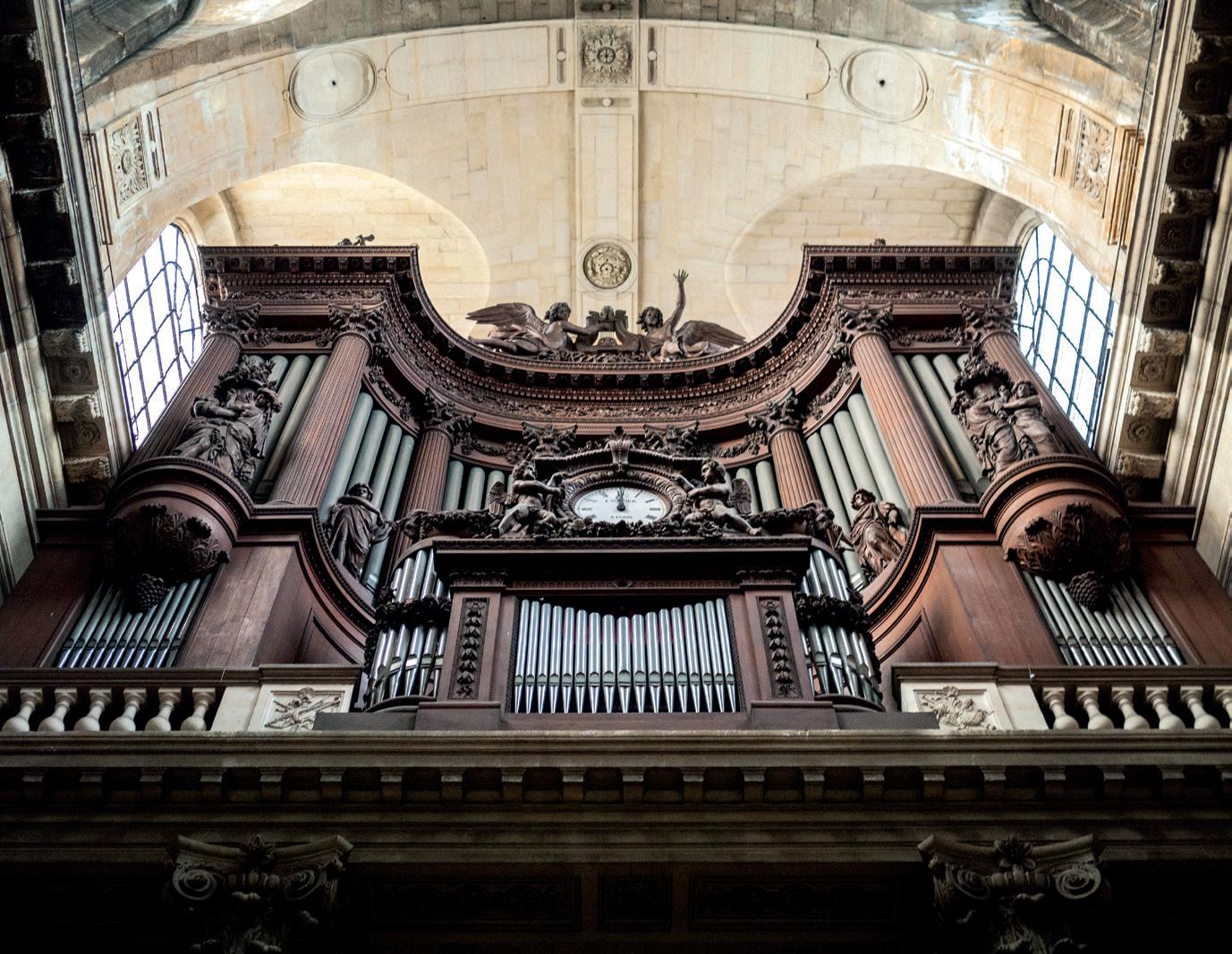
Langlais, blind from age three, won a scholarship to the NIBC aged 10. The curriculum remained as rigorous as when Vierne had attended the school, and Langlais thrived on the discipline. He soon learned braille, and began studying solfège and the piano. Like Vierne, he would also master the violin.
Langlais’s compositional output was diverse and prolific. For organ he wrote 90 odd works that comprise some 300 pieces, and he wrote orchestral music, chamber music, songs and secular choral music, masses, anthems, and cantatas. That he wrote quickly and disliked revising explains a certain unevenness, but at his best – in the Suite medievale or Trois paraphrases grégoriennes – Langlais is superb. Beside the plainchant and folksongs he loved, and his pride in his Breton heritage, he acknowledged the influence of Tournemire, Debussy and Fauré, and once or twice, ruefully,
his friend Messiaen. Finally, the St Clotilde organ was so important an influence that Langlais laughingly called it his mistress.

Messiaen grew up in Grenoble, in south-eastern France, an area he never ceased to love for its beauty in nature and its light and colour. There he would spend his summers and write some of his principal works. On his father’s appointment to a teaching post in Paris, Messiaen, now 11, entered the Conservatoire. He was to spend a decade there, studying harmony, counterpoint and fugue, piano and percussion; composition and orchestration with Dukas; and organ and improvisation with Dupré. Prize followed prize, and Messiaen was counted by many as the most brilliant student of his day. Only the Rome Prize eluded him, though he competed for it twice.
Another undeniable influence on Messiaen was the concept of time. Time as interval, time as duration, time as speed or dimension. It intrigued him in the sound of the organ, unvarying tone of which symbolised, as Widor and others had said before him, the infinite. Messiaen began to develop his own rhythmic vocabulary – irregular and ametrical ideas echoed the rhythms of nature itself. In La Banquet céleste of 1928, the symbolism is direct and simple: the 24 bars take over six minutes to play, the chords attaining near-stasis, emblematic of eternity.
Also central to his musical vocabulary are the ‘modes of limited transposition’ – an arbitrary ordering of the 12 semitones of the scale. Each mode has a fixed number of transpositions, which are further limited by what Messiaen considers to be their colours. Since in a given transposition one mode may be violet and yellow, another blue and orange, the modes are not interchangeable. Timbres are deemed colours too, and it is fitting that Messiaen was to become organist of a church with a colourful Cavaillé-Coll organ dating from the 1860s. The 45 stops of the instrument at La Trinité offered him timbres he found bewitching.
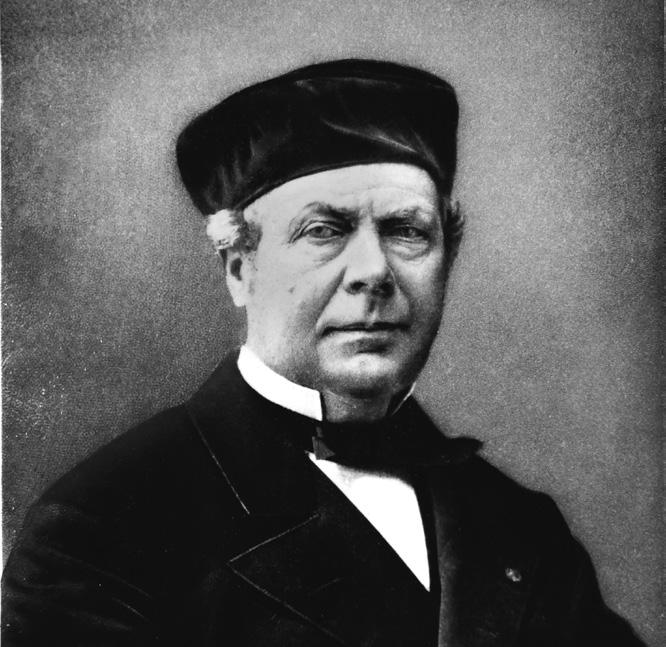

Messiaen’s early works for the organ, including Apparition de l’eglise eternelle (1932) and L’Ascension (1934), innovate less in timbre than in harmony or rhythm. It is with La Nativité du Seigneur (1935), that Messiaen enters on his maturity. With its astonishing unity and warmth, La Nativité remains the most popular of his organ works. He didn’t turn again to the organ until after the Second World War, when he wrote his Messe de la Pentecôte (1949-50), a work comprising five movements designed to accompany a spoken liturgy. The 1950s also saw him turn more resolutely to birdsong. Catalogues des oiseaux and Chronochromie were the product of hours of dedicated transcription, the latter remarkable in a passage for 18 solo strings that makes use of the songs of 18 different kinds of bird.
That Olivier Messiaen’s organ music is the product of a 100year evolution might not immediately occur to us. His mix of birdsong, colour-sound synaesthesia, and Eastern rhythm and mode seems light-years away from where we started. And yet, with Messiaen, as with other composers, timbre derives from the tone and mechanism perfected by Cavaillé-Coll; form expands on established models; and individualism, and a belief in the excellence of art, nature, and the supernatural resonate across our survey.

The last few years have seen rising interest from the mainstream media about our cathedrals and their choirs. The BBC documentary Angelic Voices showcased the girl and boy choristers of Salisbury in a way that was recognisable to those of us who know the importance of music in cathedral life, but also in an approachable and interesting way to those who had never come across it before. That Salisbury introduced girl choristers some years ago, as also at, for example, St Mary’s Edinburgh, Wells, Winchester is well known, but what of other places?
As part of my research into cathedral choral foundations in the post-World War II era, I explored and examined the archives of St Davids Cathedral in Pembrokeshire. St Davids is unique amongst cathedral choirs, as only girls form the ‘top line’ of the choir – the boys are a separate and distinct entity. The story of how a female top line – a quarter of a century prior to Salisbury – was formed from the populace of the village-city, repays greater attention.
The choral foundation at St Davids dates back to time immemorial. Bishop Adam de Houghton endowed the choir in the 14th century, making St Davids a beacon for worship and music in the far west of Wales. By the late 16th century the Tomkins family had settled at St Davids, which provided the early musical education of its most famous musical son, Thomas. Like so many other cathedrals, the Commonwealth and Restoration periods saw St Davids have to rebuild its choral foundation. By the 20th century, a stable choral foundation existed, formed from a village-sized population of around 1,200.
Peter Boorman arrived at St Davids in 1954, and, given the lack of population, inherited a reasonable-sized choir. However, by the early 1960s the number of choristers had dropped. It was becoming clear that the choir was in peril, with only seven choristers by 1964. Boorman began a frantic campaign, taking to his own printing press to produce eye-catching posters. Using his eldest son Adrian as the poster boy, it makes for rather a dramatic read:
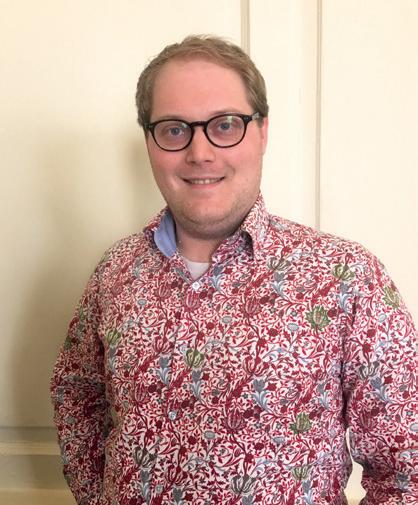
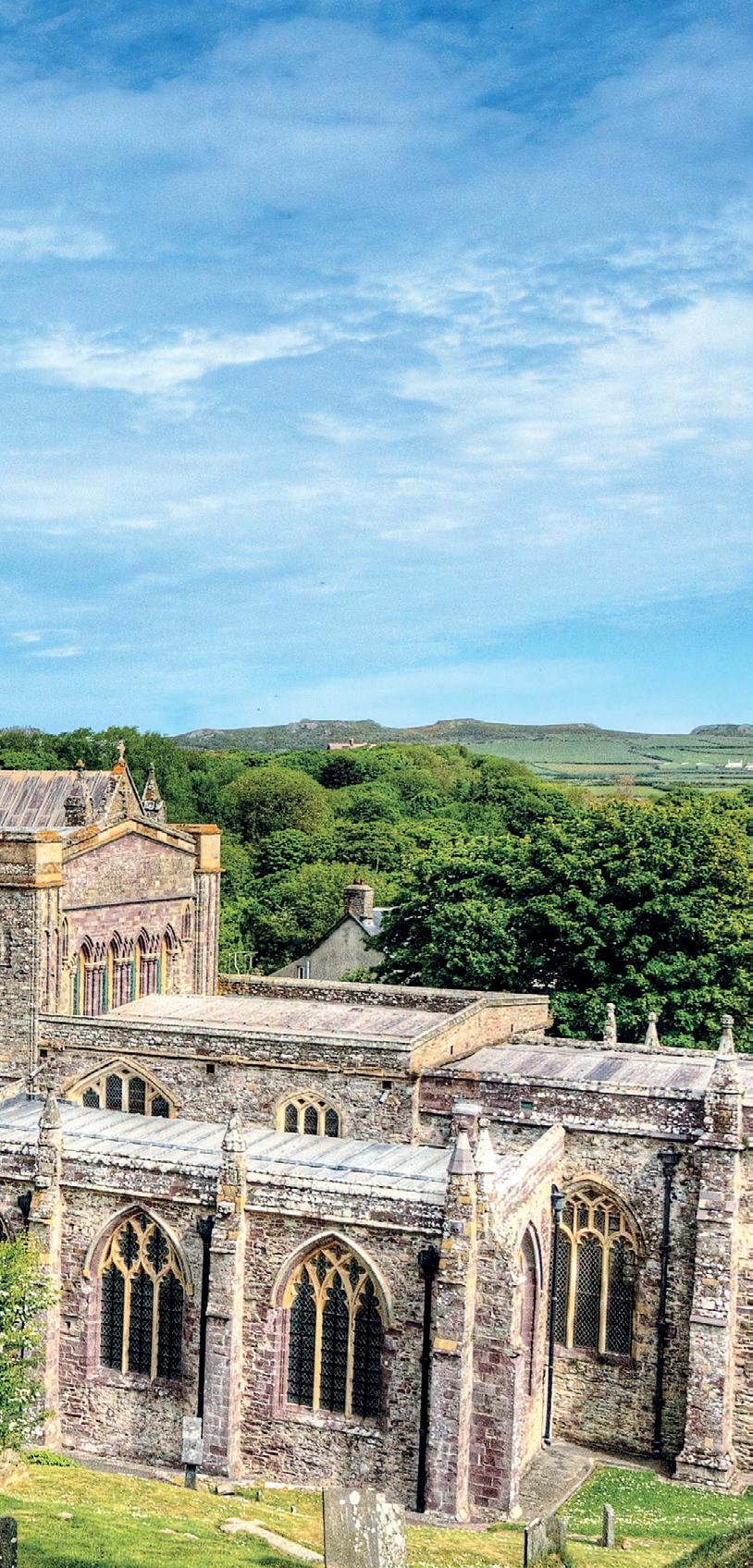
YOUR Cathedral Choir badly needs sharp-witted boys (8-11) who are ALIVE
to the opportunities, musical and otherwise, it offers; and whose parents are DESPERATE
to see their sons doing an important, historic and masculine job in providing the music of Wales’ National Cathedral.
REWARD is paid in cash quarterly. Opportunities of recording, broadcasting and T.V. work. Recitals at other churches.
Thorough musical training. Travelling expenses where necessary.1
The national press focused on St Davids and its choir, with Boorman openly stating that ‘we need a miracle to save us.’2
Benjamin Phillips tells the story of how local girls saved St Davids Cathedral from going silentBenjamin Phillips Photo: Rebecca Dodd
Worse was to befall Boorman’s choir. A number of high profile services were put in jeopardy due to the illness and lack of attendance by boys. Agriculture was still a huge part of Pembrokeshire’s economy, and a boy could earn more picking potatoes in an afternoon than he could in over a week singing services, which left Boorman in an ever more precarious situation as to what could be done to save his treble line. Suggestions regarding the establishment of a choir school came to nothing.
concert series. They had been called in to sing for a number of weddings at the cathedral when the boys were unavailable.
The catalyst came in April 1966, when Boorman was preparing to broadcast Choral Evensong live on BBC Radio:
Here I stood, in these stalls [the stalls in the quire] with the men, waiting to rehearse the music for an important broadcast of Choral Evensong, and treble trouble again cropped up. We hadn’t enough boys to hold the part down. I tore home, rang the headmaster of the grammar school, and said, “For mercy’s sake, lend me some of the girls from your choir”. He sent them down post haste; they sight-read the stuff before a million listeners with great effect, so much so that I had tons of letters saying, “Where did you get those excellent choirboys from?” On the strength of this providential rescue from disaster, the girls were appointed official choirboys to the cathedral.4
In a letter to The Times on 24 July 1993, Boorman recalls one of the letters he received post broadcast. ‘After the transmission a card arrived from Sir Percy Hull, Organist Emeritus of Hereford, praising the tone of our “boys”. He was old, experienced and distinguished, and I fell into none of these categories, so I did not enlighten him. There was no secret, merely the careful choice of high calibre, musical girls of early secondary school age.’5
The repertoire of that first broadcast could be described as simple –Tallis Ferial responses
Stanford Evening canticles in B flat
Bach Awake, thou wintry earth but, on Wednesday 20 April 1966, history was made in the tiny village-city of St Davids that would eventually lead to the introduction of girls into cathedral choirs throughout the United Kingdom.
Boorman reflects on the difficulties of the period in his 1971 BBC television documentary Organ, organ
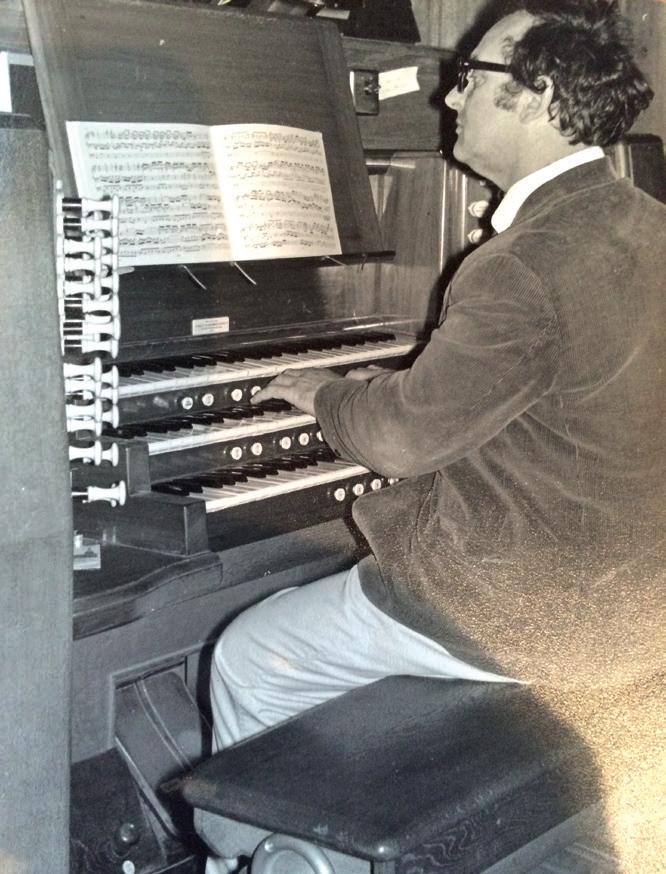
Even with a tiny population, like St Davids has, there must have been a time when the organist could pick and choose, and sort out these boys. Thomas Tomkins, the great British composer, was a boy here, and the accounts say that, during his time, two boys were appointed to do “God’s service”. I’ve had no chance of selecting boys on that basis – I’ve had to take them likely or unlikely to please the Almighty. But that was 400 years ago.
Four hundred years – that represents a great amount of anxiety to an organist, of grey hairs and ulcers, wondering whether the trebles would be there on Good Friday, or whether they would be on the beach for Evensong. But all the time, the solution – the marvellous solution was under our noses, and we didn’t cotton on to it until the mini-skirt ascended in Pembrokeshire.3
Boorman’s miracle – the ‘ascending mini-skirt’ – came in the form of the girls’ choir from Ysgol Dewi Sant, the village’s grammar school, and its music teacher, Miss Rosalind Charles. Miss Charles was an organ pupil of Boorman, and had brought her girls to sing at the cathedral during the annual summer
Boorman’s difficulties were over – the cathedral chapter noted, in the most matter of fact way, between internal arguments as to whether or not the organist should get a pay rise, an historic act within Anglican choral music: …approval to girls in choir – separate vestry – clothing left to dean. Approval to Miss Charles being appointed assistant organist and to receive honorarium – annual appointment.6
The girls were appointed not in addition or junior to, but into the cathedral choir as full choristers. Thirty years prior to the Spice Girls and ‘Girl Power’, the girls of St Davids Cathedral were trailblazers for Salisbury, York, Winchester and the many other cathedrals that followed. But however trailblazing those first girl choristers were, the fact remained that boys still could be a part of the treble line at St Davids at that stage. Boorman didn’t introduce girls for the sake of it – it wasn’t a public relations exercise, or promotion of the feminist agenda, it was for simple love of cathedral music. Was it better to scupper the choral foundation than take on girls who could relish the challenge of performing five centuries of great music?
For long periods between 1966 and 1991, the majority of choristers at St Davids were girls, and for a number of years, there were only girl choristers. However, by April 1990, the number of boys had risen sharply, leading to a crucial decision
to be made by the new organist, Kerry Beaumont. The chapter minutes state that Beaumont had ‘…worked hard in establishing two additional choirs. One is a chapel choir of adults, and the other is a boys’ choir of approximately twenty.’7 The cathedral choir would be formed of girl choristers and men. Through the 1990s, the number of boys continued to vary (for a time, there were only three boy choristers!) During the late 1990s, under the direction of Geraint Bowen, the cathedral choir made a number of successful broadcasts, tours and recordings, which have been continued by successive organists Timothy Noon, Alexander Mason, Daniel Cook and Oliver Waterer.
Peter Boorman’s vision saved the choral tradition at St Davids from perishing. Without making such an unprecedented, and for the time, courageous decision, the choir would most likely have folded, leaving the land of song’s national shrine without music. Boorman, when writing about the possibility of introducing girls, noted that he did not believe that St Davids was the first place to do so – indeed, I would be interested to learn whether or not this is the case.
It is clear that more work needs to be done on telling the whole story of the introduction of girl choristers. What is clear is that they are fast becoming an indelible part of our cathedral foundations. Whilst some may say it is ‘Girl Power’ or ‘equal opportunities’, we should remember those first girls at St Davids in 1966, who sang so that its cathedral would not go silent.
1. St Davids Cathedral Library/Peter Boorman Archive
2. Choir may disband after 500 years – ‘Desperate’ shortage at St Davids. Western Mail Reporter, 6 October 1964. The Western Mail, Cardiff. St Davids Cathedral Library/ Peter Boorman Archive

3. Organ, organ. BBC Wales Television. 1 March 1971. Television
4. Ibid.

5. The Times, 24 July 1993.
6. The National Library of Wales, SDCh/B54, 25 July 1966
7. St Davids Cathedral Chapter Acts, 1979-present
Founded in 994 by Lady Wulfruna and sharing its dean with St George’s Chapel, Windsor from 1480 to 1846, St Peter’s has a long history. The present cruciform sandstone church, with an imposing central tower, dates from around 1200, with a nave largely constructed around 1450 and a collegiate-style chancel (replacing one badly damaged in the Civil War) of 1867.
We do not have much information on musical activity at the church from the earliest days. By 1531, however, we know that the seven prebendaries installed in the church’s College of Priests were served by seven vicars choral who performed all their Sunday duties. These were possibly not ‘choral’, and by the end of the 17th century they had evolved into an establishment of three curates or readers, who presumably had some ministerial qualifications, three lay ‘singing men’, and an organist.
We know a little more of recent years. The 20-year-old A H Mann was organist here from 1870-71, prior to his marriage at a local church (cherchez la femme), and Sidney Campbell was in charge from 1943 to 1947. Campbell subsequently went to Ely Cathedral and, eventually and appropriately, St George’s Windsor. Timothy Storey, whose elegant prose and historical acuity graces these pages regularly, was at St Peter’s for nine years and Regent Records’ Gary Cole rescued the choir from a very low point in 1998.
We know that the choir has thrived for much of the 20th century. What is sobering now is to see old photographs of
choirs from the smaller churches in Wolverhampton, showing large numbers of robed men and boys and well-stocked libraries, as late as the 1960s. This was, I remember, replicated in so many churches across the country. Where has all this national outpouring of church music gone?
And how has St Peter’s survived when others have not? Wolverhampton is hardly a fashionable or wealthy place. We are, according to the Church Urban Fund, the 429th most deprived of the 12,606 parishes in England. But… we are a city centre church, there is a thriving church secondary school, there is a will to keep things going, there is much around here to interest and occupy choristers, there is a pragmatic approach to recruitment and retention, there are high musical standards and there are some committed adults, parents, music staff and children who take a pride in what’s happening, so our numbers have been hovering around the 100 mark. Last year there was a girls’ choir of 48, a boys’ choir of 24, 12 men with 12 male choral scholars and a voluntary choir.
One reason for the continued high level of professional singing here is that we make opportunities outside our choir stalls by networking. It’s not always easy, but among our links and their results are:
Royal School of Church Music: Using the ‘Voice for Life’ scheme gives children a training regime which can be adapted to suit both the demands of the church and also those of the individual chorister. RSCM Direct and diocesan events also have an impact.
Links with other churches: We have enjoyed links with choirs in Lichfield and Bradford Cathedrals, and in Croydon, Warwick and Grimsby – joint services are fun and particularly tend to validate in young choristers’ minds this very strange thing they get dressed up to do in public several times a week.
CSA: Outreach programmes, especially Sing Up! and its funded programme through the Choir Schools Association, took us out into the wider community of the city for regular concerts with primary schools and larger scale performances. Our local profile was enhanced considerably, and though we do not have the funds to keep the programme very active, it still resounds through other local work we get involved in. The CSA has also been a source of support and enthusiasm
– annual sports and singing days in the cathedrals of the northern division (and here in Wolverhampton) have again opened chorister eyes to what being a chorister can mean.
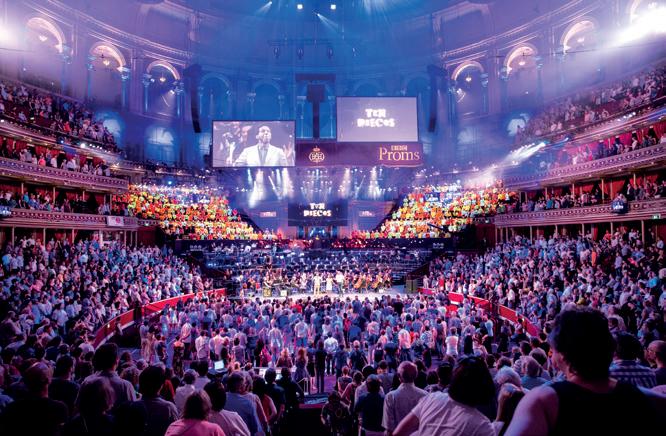
Cathedral visits: Each of our choirs has a summer singing holiday, based on a cathedral. In 2015 there was a week in Durham and a week in Canterbury; 2016 took both choirs to Edinburgh. These cathedral weeks are expensive – costs of accommodation, transport and food amount to around £16,000 each year and we have to raise money throughout the year to subsidise places for those families who would find the costs prohibitive. The Friends of St Peter’s Music organisation is invaluable in fundraising. Other, more local cathedral visits are also undertaken.

Adopt an orchestra: Singing with our own city orchestra and also the Birmingham Philharmonic Orchestra has provided some memorable experiences for choristers. We were invited to take part in The Snowman, Prokofiev’s Winter Daydreams, The Planets and Mahler’s 3rd and 8th symphonies, the latter in 2016 in the Symphony Hall in Birmingham. A third performance of The Planets, this time with Wolverhampton Symphony Orchestra, took place in March 2017.
In the community: The choir sings on the pitch at the final Wolverhampton Wanderers home match before Christmas, and also at regular memorial services for those supporters of the team who have died. Audiences of 20,000 aren’t common for us, so these occasions also bring the choir
Music Education Hub: The Government, via the Arts Council, provides money for the musical education which used to come via local education authorities. The lead partner in this is the former music service, which is responsible for instrumental and vocal tuition in schools and city-wide children’s ensembles. Being associated with The Hub has enabled us to take part in singing with other groups in the city – for example, at an outreach project by the Wolverhampton Chamber Choir singing Karl Jenkins’ Requiem, and at a large concert in the Civic Hall promoting the BBC ‘Ten Pieces’ for primary schools (this is an initiative for pupils aged between
7 and 14 which aims to open up the world of classical music to a new generation of children). A spin-off from this was an invitation to sing in the BBC ‘Ten Pieces in the Proms’ in July. As Chair of The Hub and a member of organisations such as Arts Connect, I keep in touch with the music-making activities of both young and old in Wolverhampton and make sure that the profile of the music at St Peter’s Church is raised accordingly.
Birmingham Conservatoire: The music department, led by Henry Fairs, recognises the mutual benefits of organist collaboration, and we are developing a very valuable connection with them. Our recent organ scholars and Assistant Director of Music are Conservatoire students. Additionally, the Co-op Funeralcare sponsors our organ scholarship.
Back home in St Peter’s Church, the choirs rehearse six times a week and sing twice on Sundays (boys and girls alternating between Eucharist and Evensong) and once on Wednesdays. This is not such a large commitment as most cathedrals offer, of course, but our standards are high and the repertoire is broad. Of particular value is a great group of 12 changed-voice choral scholars, whose training by Tony Pinel is funded by an FCM grant and the Friends of St Peter’s Music. Our music is unashamedly cathedral repertoire, which demonstrates a tremendous commitment to church music by past and present rectors and avoids the confusion and identity crisis that a variety of musical styles can engender.
The two major problems from my own perspective are the age of the Director of Music and the rescheduling of local boys’ football matches and team practices from Saturdays to Sundays. Many of our boys are as committed to their football teams as they are to the choir, and we have had to meet this dilemma pragmatically. It is no longer possible (or desirable)
to insist on 100% attendance on Sunday mornings, so we accommodate it, and sometimes this means we only have 12 boys singing. So – they have to sing better and we have to redouble our recruitment efforts in the city’s primary schools. As for the other problem – we have a short-term solution (no, not a visit to the vet) whereby former chorister Harry Castle has taken over to give me a year’s sabbatical. But we do need to ensure that in the long term we can afford to attract someone who has the skill and vision to build on what this 70-year-old has enjoyed so thoroughly.
Any ideas?
Peter Morris was born in Huddersfield and was a chorister at Chester and Manchester Cathedrals. He was Organ Scholar of St John’s College Durham (BA Music), took his MPhil at Keele and is an Honorary Fellow of Wolverhampton University. He is currently Director of Music at St Peter’s, Wolverhampton (since 2003), conductor of the Wolverhampton Symphony Orchestra, Borough Organist at Walsall Town Hall, Chair of Wolverhampton Music Education Hub and Chief Examiner for A-level General Studies.
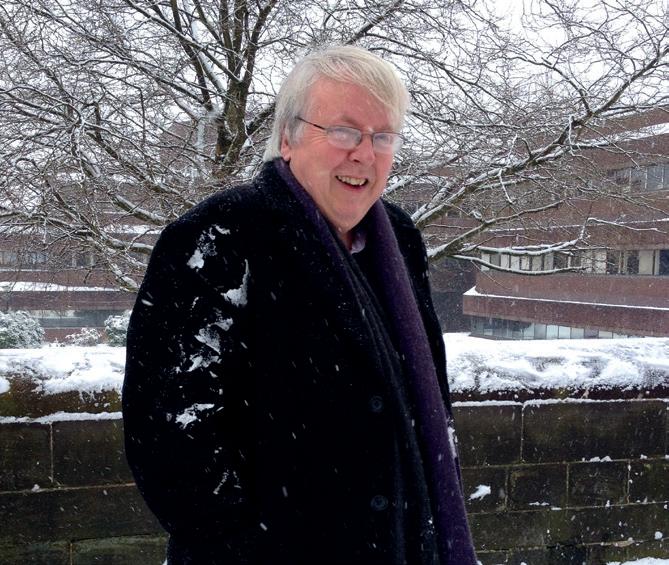

One reason for the continued high level of professional singing here is that we make opportunities outside our choir stalls by networking.
...transforming and inspiring worship

The Royal School of Church Music supports the work of cathedral musicians at every level under Director Andrew Reid and Head of Choral Studies Adrian Lucas.

In addition to a broad programme of parochial support, ministerial training and related publications, the RSCM is responding to cathedrals’ requests by training organ scholars-elect through the Survival Kit course (29–31 August 2017, venue tbc).
Ex-chorister boys and girls may audition for the Millennium Youth Choir which offers high-calibre and context-based learning to older teenagers and young adults. Find out more online at www.rscm.com/myc
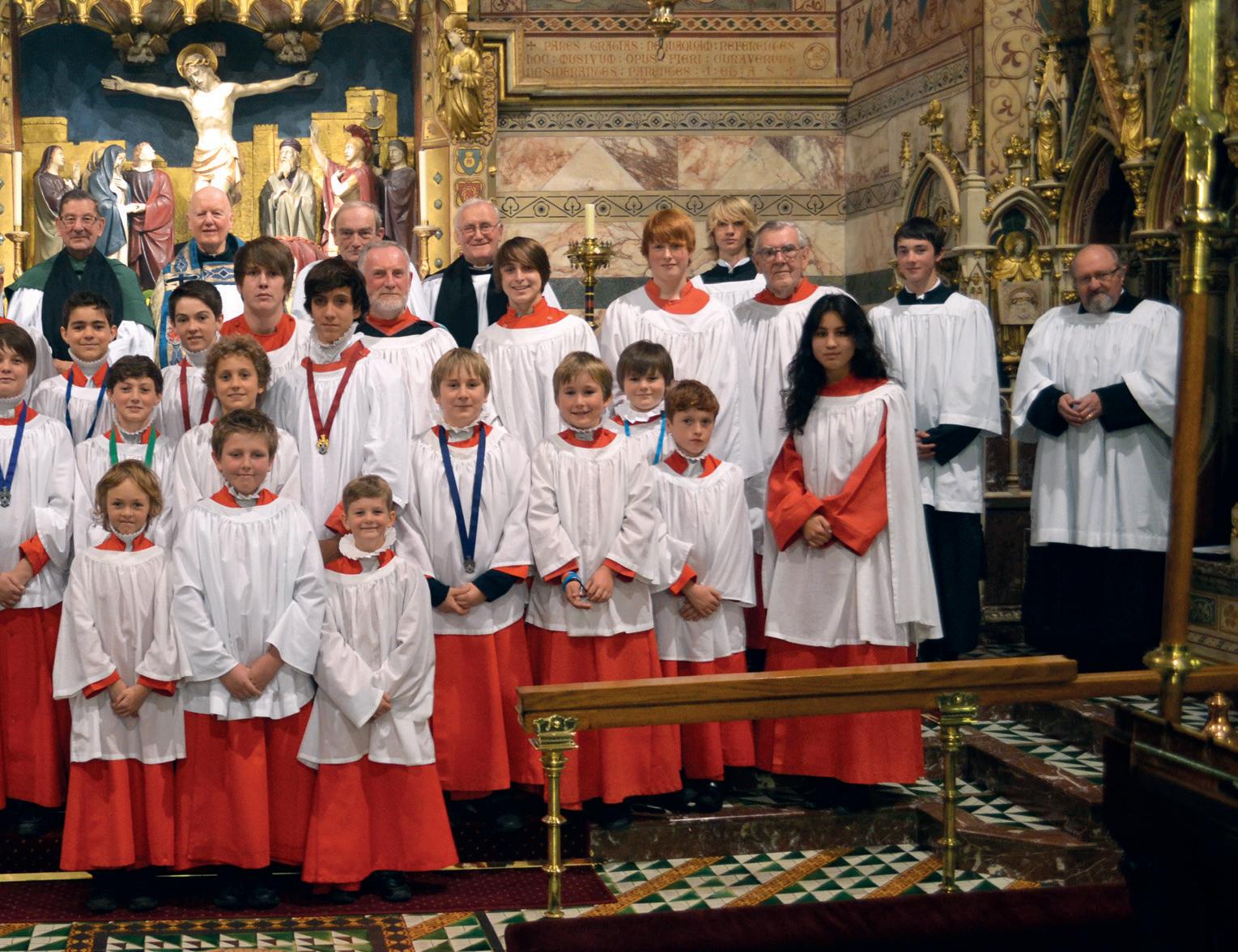
To find out more about suitable courses and opportunities, visit our website at www.rscm.com/learn-with-us
16 March – 25 November 2017
World renowned ensemble The Sixteen contrasts the choral music of the ‘Prince of polyphony’ Giovanni Pierluigi da Palestrina with the great 20th-century melodist Francis Poulenc.
For a full list of dates and locations visit www.thesixteen.com
It’s a common myth that only the rich and famous leave money to charity when they die. The reality is that without gifts left in wills by people ‘like you and me’, many of the charities we know and support today wouldn’t be able to exist. Thankfully, 74% of the UK population support charities, and a good number say they’d happily leave a gift in their will once family and friends have been provided for.
The problem is that ‘the way to hell is paved with good intentions’, and most people do not leave any money to charity in their wills. Are you one of these? And if so, did you know that a reduced rate of inheritance tax (IHT), 36% instead of 40%, is applied to estates leaving 10% or more of their total to charity? This means, in essence, that on an estate worth, for example, £500,000, instead of paying IHT of £70,000, the tax would be £56,700. 10% of the estate – once the nil band of tax is removed – would be £17,500, which you could leave to the charity or charities of your choice, and the reduction in funds payable to family and friends would be only £4200.
Without a charitable bequest
If you consider that most charities would not survive without legacies, that a reduced rate of IHT will apply to your estate if you give 10% of it to charity, and that you are ensuring the vital work of your chosen charity can continue, it makes very good sense to donate 10% to charity in your will. The icing on the cake is that the taxman gets a lot less of your hard-earned cash than would be the case if you were to leave a smaller percentage.
If you have already made a will, as many if not most of us have, it’s still quite easy to change or add to it by writing a codicil. Sometimes it’s simpler to make a new will, and you’d do well to speak to a solicitor, but the benefits to whatever charity you choose to support (which clearly we hope will be FCM) will be worth the extra effort this requires.
Example:
With a 10% charitable bequest
including nil rate band
receives £56,700 instead of £70,000, and beneficiaries receive only £4200 less
A Pecuniary Gift
I give the sum of £ _____________ (in figures and words) to the Friends of Cathedral Music (FCM) (registered charity No. 285121). I direct that the receipt of the Treasurer of FCM shall be a sufficient discharge to my executors.
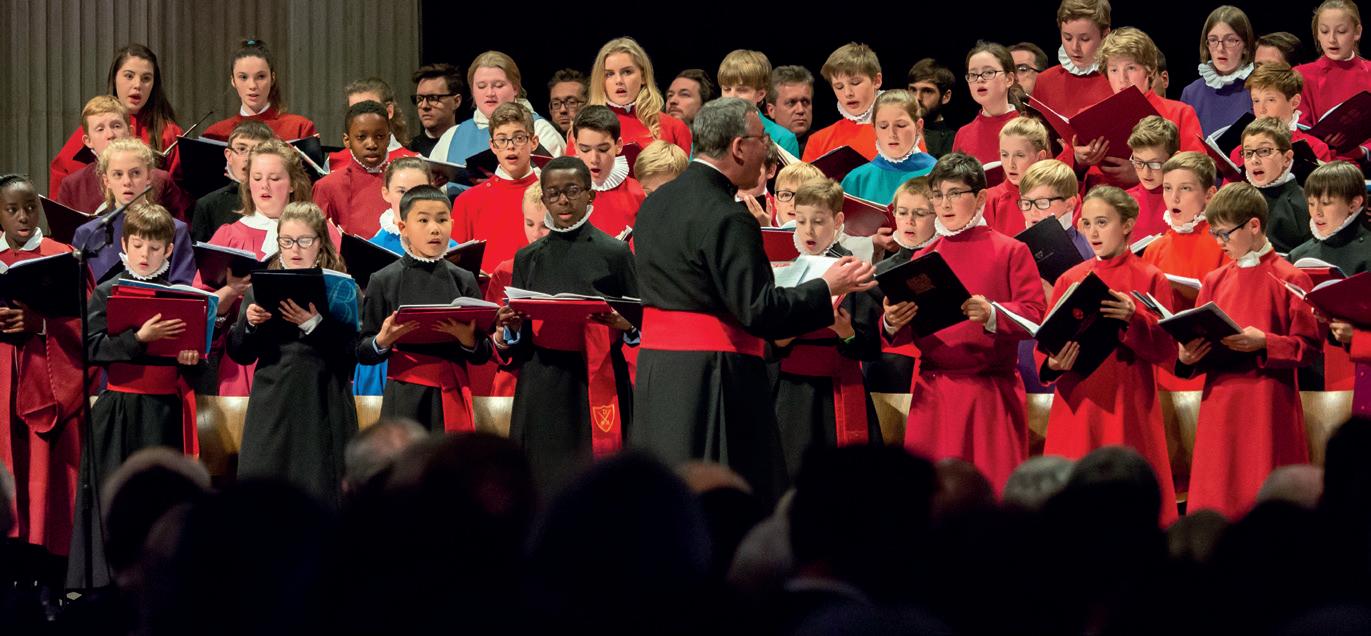
A Residuary Gift
I give the whole (or a _____% share) of the residue of my estate to the Friends of Cathedral Music (registered charity No. 285121). I direct that the receipt of the Treasurer of FCM shall be a sufficient discharge to my executors.
Please remember Friends of Cathedral Music in your will and help us to secure our priceless heritage for future generations
Postage and packing
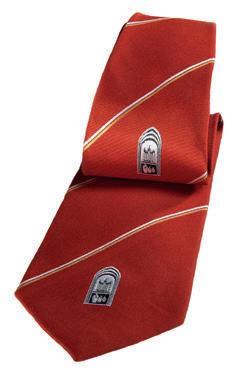
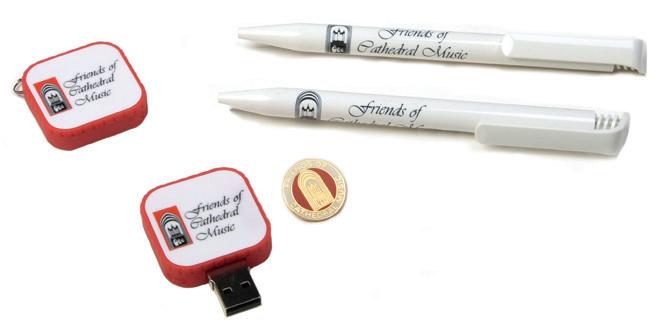
£1.75 for 1 item
£3.25 for 2 items
£4.50 for 3+ items
Please send orders and enquiries by email to judychisman@hotmail.com or by post to Judy Chisman, 29 Magdalen Street, Thetford, IP24 2BP Cheques should be made payable to Friends of Cathedral Music
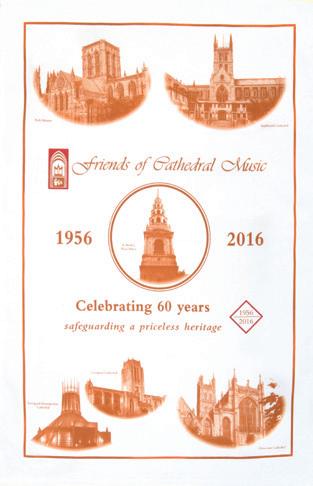
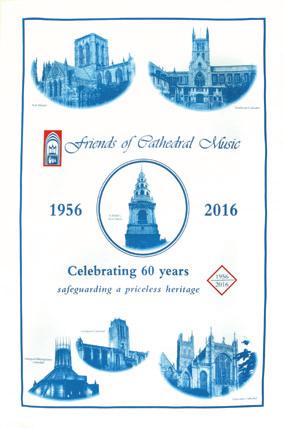
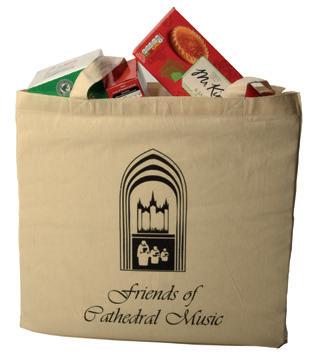
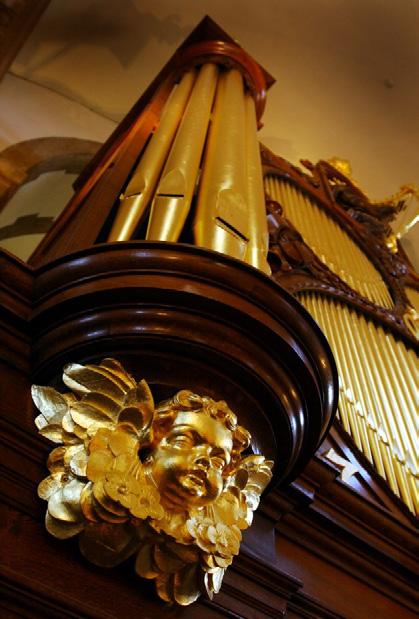
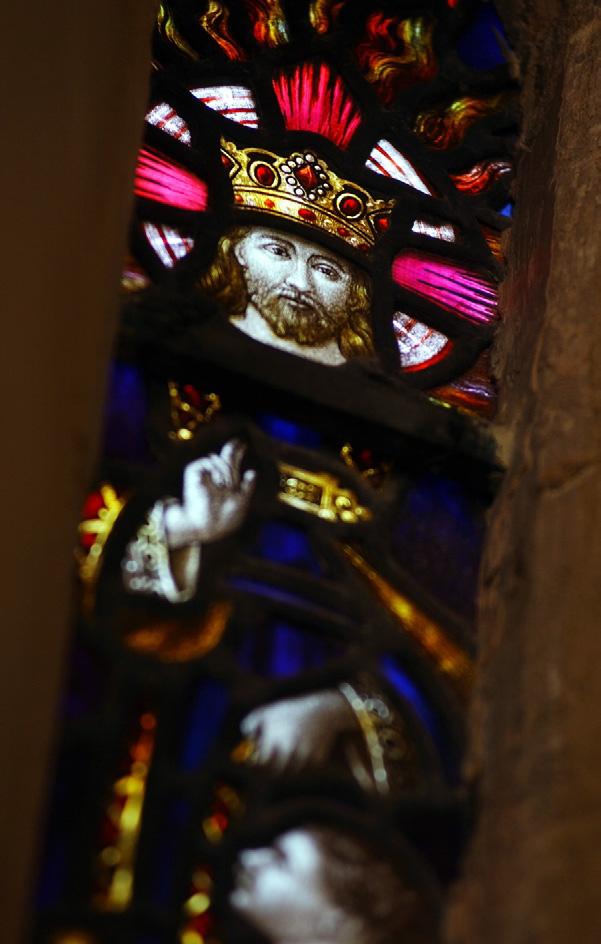
Portsmouth Cathedral Choir and The Portsmouth Grammar School offer unique opportunities for young counter-tenors, tenors, organ scholar for the academic year 18/19.



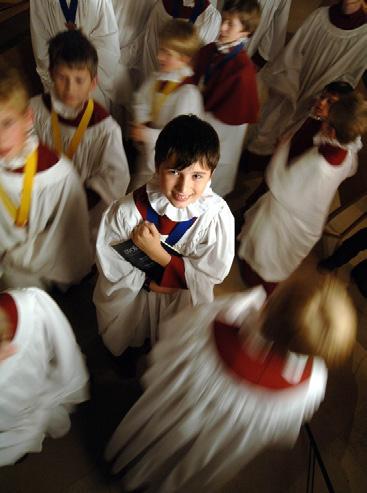
Opportunities exist for gap year students (pre or post University) to spend a year working with the Portsmouth Cathedral Choirs , whilst working as departmental assistants at one of the country’s leading co educational schools, The Portsmouth Grammar School. The year involves daily choral worship in the Cathedral, major concerts and BBC broadcasts, choir tours (Estonia, Belgium & Italy in 2014/15) and recordings. Recent Portsmouth scholars now sing in Christ Church Cathedral Oxford, St John’s College Cambridge, Winchester and Hereford Cathedral Choirs as well as with major UK groups such as the Monteverdi Choir.
Regular vocal/organ tuition provided. Accommodation available. Remuneration circa £8,500 per annum.
Further Details from
Dr David Price
music@portsmouthcathedral.org.uk
023 9282 3300
portsmouthcathedral.org.uk/music/ pgs.org.uk
John Henderson and Trevor Jarvis
ISBN 13 978-0-85402-25-2 (paperback)
978-085402-2519(hardback)
£25 and £45 respectively
available from www.RSCMshop.com
and in order’ towards a view that if something is worth doing it does not matter too much whether it is done well and whether excellence is a help or a hindrance. Shortages of manpower and money have not helped, but it does feel a bit like going back to a more leisured and comfortable age as one reads the pages of this most interesting book.
The interplay between the RSCM and the world of cathedral life is fascinating, and one realises how much the RSCM has helped in the training of singers and organists who have found their life’s work in our cathedrals (including those in the USA and the Commonwealth), and in placing cathedral standards on a pedestal from which some might sometimes prefer to descend.
The authors explain how musicians, administrators and staff went about their daily work and how this fed into the general ethos of the organisation in a way which makes us reflect on our own approach to ‘church work’. They are fairly open about the more difficult areas of an organisation’s life (the near fiasco of the American investment, for example) but a little coy about some tantalising titbits – I had not realised that Gerald Knight had been encouraged to retire early and wish (nosily) that we might have been told more. Other personnel issues are delicately glossed over, but it is clear that many of the RSCM’s staff were not in it for the money. The closure of the College of St Nicholas appears to have been urged upon Lionel Dakers by the RSCM Council when he came into office in 1973.

The role of amateur singers in church choirs owes much to the RSCM’s work in providing courses for singing in cathedrals dating from Lincoln under Allen Ferns in 1972 (and not, I think, since I was there, Salisbury in 1975). Such courses spun off a number of enthusiastic choirs which now book up sometimes 2 years ahead to get a slot in the summer holidays of their chosen cathedral, adding to the musical menu when tourists are often at their most numerous.
The authors of what are effectively narrative archives are respectively Hon. Librarian and Hon. Assistant Librarian of the RSCM and the book is dedicated to the thousands of RSCM affiliates, members and friends who will recognise many of the events and people in this book. I hope sufficient of them will feel able to stump up for a copy. They will not be disappointed. If you were involved with the RSCM in the 1950s–80s your memories will be jogged about whichever decade you think was the RSCM’s heyday. (You may of course think the same authors’ previous volume on the Chislehurst years covers that period.)
What the book does not do (and is quite clear about this) is attempt a review of what the RSCM has achieved in the field, and with its 90th anniversary next year it is time somebody did, given the massive changes in the Church in most of our lifetimes. The RSCM has unashamedly been about standards, while the Church in my view (though not Christianity) has increasingly been moving away from the precepts of ‘decently
Forgive me if I treat this book as a bit of a wallow, but it is like going back half a lifetime for me. The personal reminiscences of the later years by people like Harry Bramma are helpfully and sensitively included, and about a quarter of the book’s 430-odd pages consist of detailed appendices and an index.
I must not overlook the CD included. Spoken contributions by Sydney Nicholson and Gerald Knight (in his best BBC voice) precede a range of choral items, some sounding like 78s, but all exemplifying the RSCM’s standards of diction.
If you were there, I suspect you’ll share my wallow, heyday or not – and if not then, when? – but I am sufficiently a pessimist to feel fairly firmly that it’s almost certainly in the past, so that this is valuable social history as well as enthralling archive material.
Richard Osmond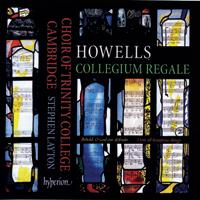
Choir of Trinity College, Cambridge
Dir: Stephen Layton
Organ: Owain Park/Eleanor Kornas
Jubilate; Magnificat & Nunc Dimittis; Psalm 122; I love all beauteous things; Kyrie; Credo; Sanctus; Benedictus; Agnus Dei; Gloria; Psalm 121; Behold, O God our defender; Rhapsody in D flat major; Te Deum.
HYPERION CDA 68195 TT 61:14
Extracts from this disc have received many airings over the past year and the recording was awarded ‘Editor’s Choice’ in Gramophone magazine of April 2016. The setting of the canticles Collegium Regale was written at the invitation of Eric Milner White, dean of King’s until 1941, and partly composed during Howells’ period as acting organist of St John’s whilst Robin Orr was on active wartime service.
It is questionable whether Howells would have expected the sound to be as full-blooded and vibrant as this, and there might be some who would prefer an interpretation rather more intimate. With Coventry Cathedral as the recording venue, the acoustic allows the choir to be more expansive than in interpretations by a collegiate or cathedral choir. Having Howells’ extended vocal lines sung by experienced sopranos enables the phrasing to be far more sustained and less apologetic. The settings of both the Kyrie and Benedictus in the Communion Service are very relaxed whilst the climactic moments in other movements are extremely exciting.
I especially welcomed the inclusion of the chants Howells composed as a student. They really are miniature gems and the inclusion of the anthems I love all beauteous things and Behold, O God our defender serve as an added bonus. The organ complements the choral writing superbly and especially effective is the weight of the pedal, notably in the Gloria of the evening canticles. The recording engineer, David Hinitt, should be congratulated on the way he captures the 32’ in the Magnificat. This is certainly a disc for the collection and reveals Howells’ writing in a new perspective.
David Thorne
David Lol Perry
Winchester College Quiristers
Puer natus est nobis; Nobilis humilis; O successores; Veni, creator spiritus. NEON TW1 from davidlolperry.com
This is a very curious affair. For one thing it is extremely short; and for another, the liner notes (if one may dignify with that description a single not-very-legible sheet of paper) tell us nothing useful. As ever, the internet comes to our rescue, though it shouldn’t have to. I quote: ‘David Lol Perry is a composer, producer and musician who
collaborates on unique works and is currently working on an album of traditional plainsong in contemporary settings.’ The album in question must be the one I am reviewing, so the website is out of date. Another site treats us to a lengthy biography of the composer and adds the rather more useful information that Three Wings is the outcome of a chance encounter with Malcolm Archer in the Wykeham Arms. These plainsong settings are beautiful in their way (it always pays to start with a good tune), but the overall effect is of the soundtrack to a film about the lost innocence of childhood or about a gloomy, probably Scandinavian, detective. The quiristers and a small group of instrumentalists perform this music as well as anyone could wish.
Timothy StoreyEvening Canticles for Upper Voices

Ely Cathedral Girls’ Choir
Dir: Sarah MacDonald
Organ: Alexander Berry
Archer: Berkshire service; Aston: Service in G; Briggs Jesus service; Harris Service in D; Howells Service in D (transposed to E flat); Lole St Davids service; MacDonald Service in A flat; Marshall Service in C; McDowall St Albans service; Moore Warwick service; Rose Service in E. REGENT REGCD 477 TT 79:39
The Ely Cathedral Girls’ Choir was founded ten years ago. The 18 girls attend King’s Ely and during term-time sing Evensong with the lay clerks on Mondays and on their own on Wednesdays, as well as singing occasionally at weekends and on holy days. They, and their director, Sarah MacDonald, are to be congratulated on the very high standard of singing on this CD.
I wondered whether 11 settings of the evening canticles might be a bit much to hear from beginning to end but, in fact, I enjoyed listening to the whole CD without interruption. All the settings have an immediate appeal, but each has a distinctive character. The unmistakeable style of Herbert Howells is very evident in his Service in D, which was composed during WWII for the men of Westminster Abbey during the temporary suspension of the boy choristers. It has been transposed up a minor ninth and works well for upper voices. Malcolm Archer’s setting is catchy and tuneful whereas Philip Moore’s Warwick Service is more reflective in character. The harmonies of the canticles by David Briggs have a distinctly Parisian feel in places whilst Wayne Marshall draws inspiration from Gershwin and Bernstein. Sarah MacDonald’s own contribution was commissioned as a diatonic sightreading exercise but it works surprisingly well, as does Cecilia McDowall’s service with its gentle but effective use of dissonance. It was good to hear the fine Service in D by William Harris, and Bernard Rose’s effective setting for the choristers of Magdalen College.
Alexander Berry accompanies the choir very sympathetically. Although he uses all the resources of the splendid Ely organ, the choir can always be heard clearly, and he is never out of step with the choir, whose diction and intonation are excellent.
Paul MorganCountertenor: Iestyn Davies
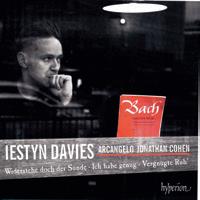
Dir: Jonathan Cohen
Vergnügte Ruh’, beliebte Seelenlust; Falsche Welt, dir trau ich nicht!; Widerstehe doch der Sünde; Ich liebe den Höchsten von ganzem Gemüte; Ich habe genug.
HYPERION CDA 68111 TT 64:52
This disc is the third in the series of Davies’s partnership with the singers and instrumentalists Arcangelo, and has received wide acclaim. The CD reveals him in fine form, embracing virtuosic technique and superb musicianship. The performances range from the melancholic to the highly dramatic, demonstrating a vocal compass covering over two octaves whilst never breaking into the tenor register.

The orchestral playing is first rate, and Cohen’s virtuosic organ-playing in the aria Mir ekelt mehr zu leben in the cantata Vergnügte Ruh’, beliebte Seelenlust is simply exhilarating, whilst Davies’s interpretation of Ich habe genug is overwhelming in its pathos. The rescoring of two movements from the Brandenburg Concertos placed between the cantatas is highly effective, with horns providing rhythmic impetus. The only concern is the vocal balance. The intricate orchestral writing plays a significant role throughout and whilst relatively prominent, the solo voice feels claustrophobic. Davies’s dynamic range is very wide, so perhaps I should have adjusted the volume control, although the orchestral finery would have been less effective. Nevertheless, this is an outstanding disc which simply oozes musicality.
David ThorneSymphony Anthems
Choir of New College, Oxford
St James’ Baroque
Dir: Robert Quinney
God spake sometime in visions; Hear my voice, O God; O sing unto the Lord; When the Son of Man; When Israel came out of Egypt; I was glad.
NOVUM NCR1389 TT 73:05
A lot of thought and research has gone into producing this CD of symphony anthems composed by John Blow. This becomes apparent when reading the excellent CD notes which give valuable information about the composer and the six anthems sung on the disc. The Choir of New College Oxford is directed by Robert Quinney, this being his first recording with the choir since his appointment as Organist in 2014. The accompaniment is provided by St James’ Baroque, a specialist period instrument ensemble.

The opening anthem, God spake sometime in visions, was one of three anthems Blow composed for the coronation of James II in 1685. An eight-part choir is employed in addition to various smaller vocal groupings, with instruments both accompanying and playing sections on their own. It is a delightful performance, full of grace and majesty. Hear my voice, O God is for ATB soloists with the chorus entering for the last section. The countertenor Alexander Chance sings
beautifully here, as elsewhere on this recording. O sing unto the Lord was composed for a charitable concert in 1701 and contains three virtuoso verse sections. There is a pleasing dance-like quality in the music reflecting the joy of the words. The choir blend particularly well together and sing expressively. The only criticism I have is that from time to time the instruments slightly dominate the verse sections.
This excellent disc concludes with a fine performance of an extensive setting of I was glad. Composed in 1697 for the opening of the chancel of Wren’s rebuilding of St Paul’s Cathedral, Blow’s addition of two trumpets to the accompaniment adds a magical festive touch. There’s so much to admire in this recording.
Paul MorganSacred Choral Music by Lennox and Michael Berkeley
The Marian Consort
Dir: David Wordsworth
Lennox Stabat mater; Mass for five voices; Judica me; Michael Touch light.
DELPHIAN DCD 34180 TT 60:59
This is the first commercial recording of the elder Berkeley’s Stabat mater, and together with his son’s brief and attractive offering it will surely be the chief selling point of this rather short programme. One would look elsewhere, perhaps to a cathedral choir, for better performances of the Mass for five voices and the motet Judica me; but the Stabat mater for instrumentalists and six solo voices is perfectly suited to the special talents of the Marian Consort, whose performance is searing, intensely moving and perfectly judged from the outset. Stabat mater alone is sufficient reason to buy this CD.
 Timothy Storey
Timothy Storey
Music from the Lost Palace of Westminster
Choir of Gonville & Caius, Cambridge
Dir: Geoffrey Webber
Organ: James Leitch & Magnus Williamson
Anon Processional: Sancte Dei pretiose; Offertory: Felix namque; Ludford Missa Lapidaverunt Stephanum (Gloria and Agnus Dei); Lady Mass Cycle (Kyrie, Gloria, Alleluia, Salve Virgo, Laetabundus, Agnus Dei); Cornysh Magnificat; Sheppard Hymn: Sancte Dei pretiose.
DELPHIAN DCD 34158 TT 66:56
Once again, Geoffrey Webber and his colleagues in the choir of Gonville & Caius in Cambridge have come up with a recording that is both special and illuminating. The programme centres round the collegiate chapel of St Stephen founded by King Edward I in Westminster, and the college created by Edward III in 1348 (coincidentally the year the Order of the Garter was created in the College of St George at Windsor). At Westminster there was a fine musical tradition that lasted for 200 years until the dissolution in 1548. This recording reflects the musical life of the college in the last years under Henry VIII.
The CD principally features the music of Nicholas Ludford, together with a hymn by John Sheppard and a Magnificat by William Cornysh. For me the latter is the highlight of the disc – it is a large-scale work, lasting some 12 minutes, and it is
glorious. It also calls for some pretty virtuoso singing from the choir, a challenge they meet splendidly.
An added bonus is the use of an organ built by Goetze & Gwynn in the style of a 16th-century instrument. The musicologist Magnus Williamson was involved in the planning and making of this CD, and he plays the organ on some tracks. The recording was made in the fine church of St Laurence in Ludlow, where the organ was on loan for a year. Delphian have done an excellent job in recording the musicians in that quite dry acoustic, and I, for one, am delighted to have heard this CD – it is a fascinating insight into a largely unknown (at least to me) part of our musical heritage, and it will repay exploration.
Roger JuddWestminster Cathedral Choir
Dir: Martin Baker
Guerrero Maria Magdalene et altera Maria; Lobo Missa Maria Magdalene; Lamentations; Regina Caeli;
O quam suavis est, Domine.
HYPERION CDA 68196 TT 68:37
It is all too easy to dismiss Lobo as a ‘one-work composer’ because of the great popularity of his motet Versa est in luctum, which has even found a place amid dear old Classic FM’s Smooth Classics. There is much more to Lobo than this. He was born in 1555 and died in 1617; he was a chorister at Seville Cathedral under Guerrero, whose pupil and assistant he became and whom he eventually succeeded in 1604 after a decade as Maestro de Capilla at Toledo Cathedral. His music is described as combining the smooth technique of Palestrina with the sombre intensity of Victoria, and lovers of these two composers’ music will be very much at home with the works recorded here. The CD’s cover writes the Lamentations very large, hides the composer and performers in odd corners and makes no mention of the Mass which makes up most of the programme! The Lamentations, the only survivor of the two sets which he composed, were in regular use for nearly two centuries after his death and are a work of great power, beauty and emotion; the Mass may be found more immediately appealing. It is founded on Guerrero’s Easter motet which precedes it on this disc; it was a recognised and frequent compliment and act of homage for a pupil to make such use of his master’s works. And what of the performances recorded here? We should rejoice greatly at hearing this music sung in a manner which must surely come as near as possible to the sound of the original performances, with the Westminster boys’ bright, forthright and intense tone well matched by the men’s robust and expressive support. It is high time this music were rescued from the sometimes over-refined domain of the mixed-voice consort. Any true Friend of Cathedral Music should welcome this excellent CD with enthusiasm; I have no hesitation in recommending it without reservation.
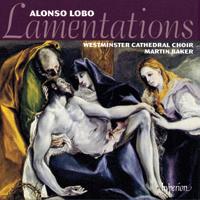 Timothy Storey
Timothy Storey
Choirs of St Albans Cathedral
Royal Philharmonic Orchestra
Dir: Andrew Lucas
Organ: Tom Winpenny
Psalmfest; This is the day; Lord, Thou hast been our refuge; Psalm 150
NAXOS 8.573394 TT 71:43
The many admirers of the music of John Rutter will be delighted by this world première recording of his Psalmfest, a collection of nine psalm settings composed over a period of 20 years. Seven of them had already been published as anthems, but Rutter has orchestrated them and adapted three to incorporate soprano and baritone soloists. The disc also contains three other psalm settings: one composed for Prince William’s wedding, another for a Guilds service held in St Paul’s, and the third for the Queen’s Golden Jubilee.
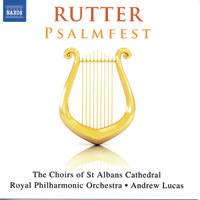
All the settings are immediately appealing and tuneful. Some are catchy with syncopated rhythms, others more restful and lyrical. All the orchestrations work very well and are splendidly performed by the Royal Philharmonic Orchestra. The cathedral choir of St Albans (boy choristers and lay clerks) are joined by the St Albans Abbey girls’ choir to form an excellent chorus. The conductor Andrew Lucas, Master of Music at St Albans, is to be congratulated on producing such a very high standard. Mention also needs to be made of the first-class soloists Elizabeth Cragg (soprano) and Pascal Charbonneau (tenor), as well as Mike Allen (trumpet) and Tom Winpenny (organist). The quality of the recording is particularly fine thanks to the skill of the production team.
A bequest to St Albans Cathedral by the late Dr John Birch has helped to finance this recording. In addition to being Organist of Chichester Cathedral (and later at the Temple Church) he was Organist of the RPO and organ teacher of Andrew Lucas. It is therefore fitting that the recording is dedicated to his memory.
Paul Morgan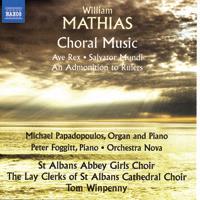
St Albans Abbey Girls’ Choir
Dir: Tom Winpenny
Organ: Tom Winpenny & Michael Papadopoulos
Lift up your heads; Ave Rex; Wassail Carol; As truly as God is our father; Magnificat & Nunc Dimittis; Toccata Giocosa; All thy works shall praise thee; The Lord’s Prayer; An admonition to rulers; Salvator mundi. NAXOS 8.573523 TT 71:44
It is surely a cause for great gratitude and rejoicing that the composer of three symphonies, eight concertos, several choral cantatas and a full-length opera should have been both willing and able to devote considerable energy and attention to the composition of church music, in the last 30 years of a life so sadly cut short by his death in 1992 at the age of only 58. This admirable CD offers as good a selection of his sacred music as anyone could hope to devise. Most of us will have heard Sir Christèmas rather frequently, but it is good to be offered here the whole of Ave Rex, from which it was lifted by the editors of Carols for Choirs 2. This and most of the works herein recorded present the distinctively ebullient and approachable style which he employed so frequently and to such good effect; but An admonition to rulers is sterner stuff altogether, lengthy and wonderful passages from the Book of Wisdom set a kind of extended choral recitative punctuated by an organ fanfare derived from the first four notes of a whole-tone scale. Jollity is restored by Salvator mundi, whose title would suggest a work for Passiontide but which is a celebration of the more cheerful aspects of Christmas. Scored for upper voices, piano duet and instrumentalists, it is concluded by a riotous setting of Welcome, Yule. Only a composer so skilled, confident and unpretentious would have dared to combine an oom-pah bass with a tune reminiscent of ‘Over the hills and far away’! So ends an anthology admirably sung and played, which
communicates the performers’ enjoyment and energy from the very first chord. I have no hesitation in recommending it in the warmest possible terms.
Timothy StoreyAcademia Musica Choir
Dir: Aryan Arji
The man is blest; The Second Service; Evening Service for Trebles; Submit yourselves one to another; I give you a new commandment; Rejoice in the Lord always; O sing unto the Lord; Of all strange news; Steven Verses; A virgin and mother.
PRIORY PRCD1108
John Sheppard (1515-1558) was roughly contemporary with Tallis and Tye, and is chiefly remembered for his Latin church music. This recording is the second of two CDs of Sheppard’s English church music sung by the Academia Musica Choir under their director, Aryan Arji. The choir comprises professional musicians in residence and choral scholars in training who study advanced choral techniques at Hereford Sixth Form College; a very worthwhile and, so far as I am aware, unique project.

An excellent account of the music is given in the accompanying booklet, but unfortunately the author is not named – although I have read elsewhere that it is Stefan Scot, who has also edited all of Sheppard’s Anglican music for a forthcoming volume in the series Early English Church Music. It is also a pity that none of the singers are named, especially the soloists.
There is much to admire on this disc, but I found some of the items from Sheppard’s Second Service slightly dull. It was partly that the music hovers round the main key for much of the time, and partly that the fairly large choir wasn’t really able to draw out the subtleties of this music – which is said to have inspired Byrd when composing his Great Service
The evening canticles of Sheppard’s First Service came across much more convincingly, with some fine verse singing. I also enjoyed the performances of the splendid full anthem O sing unto the Lord, and the exquisite three Steven Verses for solo trios. Aryan Arji has done an excellent job in bringing the ‘choral scholars in training’ to such a high standard.
Paul MorganChoir of Westminster Abbey
Dir: James O’Donnell
Mater Christi sanctissima; Missa Mater
Christi sanctissima; Western Wynde Mass HYPERION CDA 68147 TT 58:36
Nothing is known of Taverner except documentation which reveals that in 1524 he was a guest singer at the Church of St Botolph in Boston and two years later was appointed by Cardinal Wolsey as first organist of Cardinal College, today known as Christ Church Oxford. His surviving compositions include eight Masses, the most renowned being the Western Wynde, based on a secular song of the same name. I admire the breadth of recorded repertoire by the Abbey choir under James O’Donnell, and this is another example of yet more quality singing. The wide vocal tessitura in all parts is captured well. Recorded balance is so subjective, but much of

the time I do find the sound of the tenors and basses rather too full blown, not always matching the very much lighter treble timbre. I question whether St Alban’s in Holborn was the best recording venue: the resonance seems overwhelming. Both the contrapuntal and homophonic writing feel somewhat artificial, but the performances are full of incredible vitality, especially in the Western Wynde Mass. Jeremy Summerly’s liner notes provide fascinating reading.
David Thorne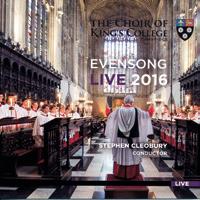
Choir of King’s College, Cambridge
Dir: Stephen Cleobury
Organ: Douglas Tang & Tom Etheridge
Parry At the round earth’s imagined corners; Stanford Magnificat in G; Vaughan Williams Valiant for truth; Walton Jubilate Deo; Purcell Jehova, quam multi sunt; Gibbons This is the record of John; Tye Laudate nomen domini; Leighton Drop, drop, slow tears; Tippett Magnificat; Messiaen O sacrum convivium; Howells Magnificat (Gloucester Service); Te Deum (Coll Reg); George Benjamin ’Twas in the year that King Uzziah died; Grier Magnificamus; Weir Vertue.
HYPERION KGS0015
This CD is not quite what its title suggests. It is drawn from live performances during 2014 and 2015, not 2016, and the Howells Te Deum and Walton Jubilate belong to Mattins. That apart, one can only salute this compilation as a remarkable testament to a remarkable tradition of daily excellence; even the congregation behaves itself and refrains from coughing and shuffling. Such a selection will perforce contain a number of old friends; and Valiant for truth was welcome, a fine piece too seldom performed. It was good to discover the excellent new works by George Benjamin, Francis Grier and Judith Weir, which seemed to inspire the singers to an even higher pitch of excellence. It was a masterstroke to include three very different settings of Magnificat, each attempting to portray Our Blessed Lady’s somewhat contradictory emotions: awe and unease (Howells), delight and serenity (Stanford’s delectable picture of the young girl at her spinning wheel) and unbridled rejoicing (Tippett). The setting which Tippett composed for St John’s College is surely more dependent on the precise circumstances of its dedicatees than anything Howells ever wrote. I was eager to discover how successfully the repeated fanfares on the startling, bright and extremely loud Trompeta Real of the St John’s instrument could be imitated at King’s; a bright little trumpet stop was employed to fair effect, but it was simply too quiet. When the large, smooth Tuba was used to provide more power at the end of the Gloria it was as though Nellie the Elephant had joined in! Such frivolity apart, I can only salute a most enjoyable programme, admirably sung and accompanied.
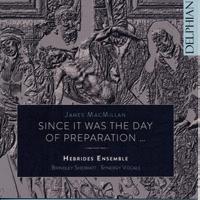 Timothy Storey
Timothy Storey
James MacMillan
Hebrides Ensemble
Introduction; The Pierced Christ; The Burial; The Empty Tomb; The Appearance to Mary of Madgala; The Appearances to the Disciples; The Appearance on the Shore of Tiberias; Conclusion and Postlude (with 6 Interludes interspersed).
DELPHIAN DCD 34168 TT 72:16
Sir James MacMillan composed Since it was the day of Preparation for the 2012 Edinburgh International Festival. It tells the story of the resurrection of Christ, starting where most Passion settings end, when the body of Christ is taken away from the scene of the crucifixion. The words use John 19 v 31 to the end of the Gospel, as well as extracts from various Latin hymns.
Brindley Sherratt, with his deep and resonant bass voice, sings the part of Christ exquisitely on this première recording. Synergy Vocals provide the SATB quartet, and Hebrides Ensemble form the unusual orchestra of cello, clarinet, horn, harp and theorbo. As well as accompanying the singers, the orchestra provides an introduction, 6 interludes and a postlude, each instrument presenting a solo interlude at some point. Both singers and instrumentalists are outstanding.
You will see that this is a highly original composition, but it draws inspiration from music of the past, such as medieval plainsong and renaissance polyphony. The performances are beautiful throughout and there are many magical moments. The Introduction, a theorbo solo, reveals a variety of emotions and sounds: sadness, bell-tolls, desolation, fierce anger, and beauty. The magnificently sung tenor solo which follows is influenced by both plainsong and Orthodox chant. Mary Magdalene’s arrival at the empty tomb is set dramatically by agitated choral writing which changes to radiant polyphony when representing the angels.
I can thoroughly recommend this CD, and have no doubt it will remain the definitive recording of this very special work.
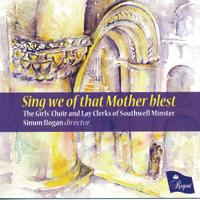 Paul Morgan
Paul Morgan
Southwell Minster Girls’ Choir
Dir: Simon Hogan
Organ: Edward Turner
Hakim Danse, Hymne, Pastorale, Antienne, Incantation (from Mariales); Bertram Luard-Selby O glorious maid; Grieg Ave maris stella; MacMillan Tota pulchra es; Trad Gabriel’s Message; Paul Drayton Ecce ancilla Domini; Simon Johnson Magnificat on plainsong tones; Haydn Benedictus from Missa Sancti Joannis de Deo); Plainsong Now in holy celebration; Dyson Magnificat in D; Langlais La Nativité; Vann Virgin-born, we bow before thee; Anon There is no rose; Hail to the Lord; Hadley I sing of a maiden; Matthew Larkin Adam lay ybounden; Wood arr Oxley Mater ora filium; Henry Lawes Her virgin eyes; Howells Salve Regina.
REGENT REGCD487 TT 71:02
Southwell Minster was founded as a collegiate church in the tenth century and became a cathedral with the creation of the diocese of Southwell in 1884. The minster is dedicated to the Virgin Mary, a most appropriate reason for the choice of the girls’ choir and title of the disc. The content allows an opportunity to highlight the excellent singing of the choir, formed in 2005 with girls drawn exclusively from The Minster School and ranging in age from 11 to 18.
Some of the music is well known. The singing is carefully controlled, notably in the Benedictus from the Haydn Mass (unusually sung by the whole ensemble). The girls are often heard in a solo capacity and most of the performances reveal assured technique and musicality. I especially enjoyed some of the less well-known pieces, for instance, Simon Johnson’s Magnificat on plainsong tones where the singing is well blended. James MacMillan’s Tota pulchra es is performed with vigour and is complemented by some very exciting and accomplished organ playing. Of the familiar pieces, Hadley’s I sing of a maiden is subtle and assured.
I also appreciated the inclusion of the Marian hymns and it was good to hear the fine Luard-Selby tune to O glorious maid. But although I fully understand the concept of inserting four superbly played organ pieces, on a second hearing I did feel they were a touch intrusive, and they rather detracted from what is essentially a disc of choral music. Purchase it and decide for yourself!
David Thorne
Choir of St Mary’s, Edinburgh
Dir: Duncan Ferguson
Mass; Ave Maria; Pater noster; Credo; Cantata; Tres Sacrae Cantiones
DELPHIAN CDC 34164 TT 59:54
Congratulations are in order here. Both to the choir of St Mary’s Cathedral Edinburgh for delivering this fairly uncompromising programme with such evident commitment, and to their director, Duncan Ferguson, for his skill in securing that commitment. It is very good to have such a vibrant performance of the Mass, with the wind and brass players of the excellent Scottish Chamber Orchestra. The instrumental writing lends so much to the extraordinarily sparse choral writing. The Mass was written between 1944 and 1947 – earlier still were a stand-alone Credo, a Pater noster and an Ave Maria that pre-date the minimalist approach of the Mass
The Cantata dates from the early 1950s, and is a fascinating composition. W H Auden gave Stravinsky an anthology of 14th, 15th, and 16th-century poems. The result was a seven-movement work for soprano and tenor soloists, choir and small instrumental ensemble. Some of the texts will be familiar, including Tomorrow shall be my dancing day (the full text), and This ae nighte (Britten Serenade). The excellent soloists are Ruby Hughes and Nicholas Mulroy.
The CD closes with Stravinsky’s reworking of three motets by Gesualdo – a remarkable homage to an earlier genius. Delphian have produced a recording that fully lives up to the musical excellence of this project. Bravos all round!
Cathedra (Washington National Cathedral)
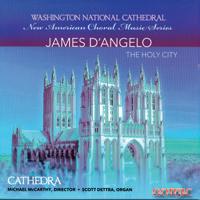
Dir: Michael McCarthy
Organ: Scott Dettra
Missa Brevis; Evensong sequence (Preces & Responses; Psalm 31; Canticles; Organ Interludes).
GOTHIC RECORDS G-49288 TT 78:30
James D’Angelo has worked in America and the United Kingdom; he has composed a number of works for Gloucester Cathedral choir, including the Missa Brevis with which this programme opens and the Holy Week motet Tenebrae factae sunt which follows it. The remainder of the programme of his complete sacred music consists of the Anglican Office of Evening Prayer in its entirety, including a through-composed setting of verses from Psalm 31. It is concluded with two anthems and a substantial organ voluntary, Fantasia on a theme of Hindemith. Mr D’Angelo lays claim to an impressive list of compositional influences from Gesualdo to Holst and Jean Catoire, a somewhat obscure Parisian. ‘The result is an unique fusion that has become D’Angelo’s musical language. The
music has a refreshing technical rigor (sic) beyond the simple atmospheric contemplation so common among composers of sacred music today’. This is all very interesting, but sadly the music falls short of these claims. The texts are set in a shortwinded, slow-paced and monochrome style that makes a long movement such as the Magnificat or the Gloria of the Mass seem endless; by way of a rather strange contrast the Fantasia on a theme of Hindemith is a fine work somewhat reminiscent of Marcel Dupré in its pace and vigour. It is very well played by Scott Dettra, and indeed the saving grace of this CD is the excellence of all the performances.
Timothy Storey
The Cardinall’s Musick
Dir: Andrew Carwood
In ieiunio et fletu; Blessed are those that be undefiled; Purge me, O Lord; Spem in alium; God grant with grace; Preces & Responses II; Wherewithal shall a young man; O do well unto thy servant; My soul cleaveth to the dust; M & N from Short Service ‘Dorian’; O sacrum convivium; Remember not, O Lord God; Hear the voice and prayer; Verily, verily I say unto you; O Lord, in thee is all my trust; Hodie nobis caelorum rex; Sing and glorify.
HYPERION CDA 68156 TT 76:59
Andrew Carwood and The Cardinall’s Musick know how to sing this music – it sounds as if it is in their blood. Of course the draw of this CD is the great 40-part motet, Spem in alium There is much more to this disc, however: the repertoire presented gives the listener a good overview of the music Tallis wrote for the ‘new’ English liturgy and the 1549 Prayer Book. Included are settings of sections of Psalm 119 given in the now fashionable way of one note, one syllable; the music is simple, restrained, and the recitations are beautifully done. The evening canticles of the ‘Dorian’ service and a set of the Preces and Responses are also recorded, the whole sequence making up a 16th-century Evensong.
The 40-part motet is in fact sung twice, The Cardinall’s Musick having been suitably expanded – there are forty participants, making a very distinguished list of singers. The first time using the Latin text is the most familiar; the second time the 1610 English text is sung. Carwood, in the CD booklet, has some fascinating thoughts on the motet and the significance of the number 40. Three Latin text motets complete the CD, O sacrum convivium, Hodie nobis caelorum rex, and a glorious performance of the Lenten motet In ieiunio et fletu, which sets the tone right at the beginning of the disc.
A quality recording as you’d expect from Hyperion matches the uniformly excellent singing and direction – most warmly recommended.
Roger JuddMusic by Gabriel Jackson
Truro Cathedral Choir
Dir: Christopher Gray
Organ: Luke Bond
Vox clara ecce intonat; Seven Advent antiphons; Herzliebster Jesu, was hast du verbrochen; That wind blowing and that tide; Magnificat & Nunc dimittis (Truro service); Holy is the true light; Aria for Joel and Vicki; Cantate Domino; Confirma hoc Deus; Factus est repente; Missa Triueriensis.
REGENT REGCD 479 TT 75:16
Gabriel Jackson is one of the most prominent and imaginative contemporary choral composers reflected in this exciting disc from the choir of Truro Cathedral for whom he has already written seven works. Jackson’s style generally blends Orthodox writing within an approachable harmonic language akin to late Stravinsky.
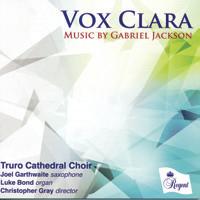
The arresting clarion call at the beginning of Vox Clara ecce intonat is a thrilling setting of the text, commissioned by Andrew Nethsingha and the choir of St John’s Cambridge for their Advent carol service in 2013. The inclusion of the raucous saxophone as an obbligato instrument against rhythmic chordal choral writing contrasts with more reflective moments which becomes a thread permeating much of the music on this disc.
Truro’s performances are highly accomplished. The diversity of writing in the Seven Advent Antiphons ranges from the strident and robust and from high chordal effects to a more straightforward decorated monody. The contrasts are most effectively achieved and special mention should be made of Harry Flint’s rich tone in O Rex Gentium
An exception in much of the music on this disc is Jackson’s setting of the Magnificat and Nunc Dimittis composed in 2001. The request was more for a fauxbourdon style setting, but nevertheless the decorated monody juxtaposed against more tonal and homophonic writing is especially engaging.
Setting part of Kipling’s poem, My Boy Jack (That wind blowing and that tide) is an inspiration. Scored for trebles, saxophone and organ, its success surely lies in the involvement of the boys in its pre-composition. The treble blend here is superb, the tone intense and gripping. One group of choristers sings a cappella, whilst the other is accompanied discreetly by quiet organ chords though with occasional outbursts on the upper work of the Truro instrument. The improvisatory saxophone writing simply drifts in and out throughout.
Amongst other tracks is a most enchanting and rhapsodic piece for organ and saxophone composed for the marriage of the saxophonist, Joel Garthwaite, and also two unaccompanied pieces with Westminster connections. One of the more significant works is his Missa Triueriensis, a concise setting of the mass dedicated to the composer’s father for his 75th birthday. Whilst the writing is of slightly more modest proportions, there are several references to the multitude of techniques found in Renaissance choral writing.
The disc is full of imaginatively crafted music. Yes, challenging for both choir and listener, but it more than reflects Jackson’s unique musical voice and a choir consistently on top form.
David ThorneAKSEL!
Treble: Aksel Rykkvin
Orchestra of the Age of
Enlightenment
Dir: Nigel Short
Bach Jauchzet Gott in allen Landen; Mein gläubiges Herze; Ich folge dir gleichfalls; Bist du bei mir; Quia respexit; Angenehmer Zephyrus; Handel Happy, oh thrice happy we; chi m’insegna il caro padre?; Barbara! Io ben lo so; Lascia ch’io pianga; Eternal source of light divine; How beautiful are the feet; Thou art gone up on high; Let the bright seraphim; Oh! had I Jubal’s lyre; Mozart Voi, che sapete che cosa e amor; Non so più cosa son, casa faccio; Alleluia.
SIGNUM SIGCD435 TT 58:19
This is totally extraordinary. For the sheer joy in performing, this CD would be hard to beat. Aksel Rykkvin is a treble in a million, and there are numerous recordings on YouTube
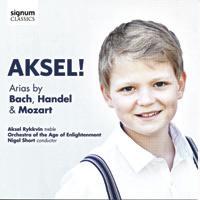
to prove it. Now, however, we have a ‘proper’ recording to immortalise his voice before the inevitable break which, I guess, has by now occurred.
I know not whose genius idea it was to team up with the OAE, or even better to work with Nigel Short – someone who instinctively knows how to accompany the voice – but the upshot is a CD of rare delight. If you don’t listen with a smile on your face, well …!
There are performances that show that Aksel is more than just a voice. He very clearly has a musical brain too –everywhere there is a beauty of phrase and line. He has obviously had the benefit of some excellent vocal coaching, but there is more to him than that.
I think by now you’ll have got the message!
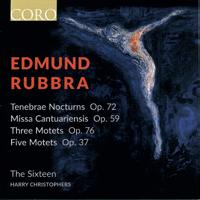
The Sixteen
Dir: Harry Christophers
Tenebrae Nocturns Op. 72; Three Motets Op. 76; Five Motets Op. 37; Missa Cantuariensis CORO COR 16144 TT 73:11
Roger Juddcomposer accompany. The venture is a triumph all round. David Bednall has written a piece of great beauty that is both rooted in tonality, but also not without its harmonically more astringent moments. I would very much hope that this piece will be seized on by all directors of women’s and girls’ choral ensembles.
The girls of Benenden School sing with great sensitivity; their sense of pitch is unwavering, and there is some fine solo singing. It was something of a coup to have Jennifer Pike play the demanding violin part, which she does with the musicianship she is renowned for. Bednall also wrote the threemovement Marian Suite for her, with its Gregorian overtones. Like the Suite, the final Ave Maria was written expressly for this recording, and has long-breathed phrases for both the girls and the violin.
The recording was made in Tonbridge School chapel, and Bednall is able to exploit all the dynamic possibilities allowed him by the Marcussen organ there. The recording by Gary Cole is first class, as we’ve come to expect from him.
Warmly recommended.
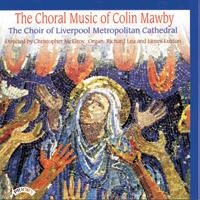 Roger Judd
Roger Judd
A pupil of Cyril Scott and Gustav Holst, Rubbra composed no fewer than 11 symphonies, some other instrumental music and numerous solo songs; but his sacred works are of no less importance, especially those composed after his reception into the Roman Catholic church in 1947. He has suffered a quite unmerited neglect of late, and it is tremendously encouraging that such a celebrated choir as The Sixteen has placed its special qualities and abilities at the service of this very fine music. It may seem strange for the three Tenebrae Nocturns to be separated by the Op. 37 motets, settings of vernacular texts, but this serves to underline the fact that the three Nocturns were composed separately and over a number of years. Rather infuriatingly, the words of Op. 37 are incomplete in the liner notes, as pages 22-24 are missing. Missa Cantuariensis, a 1944 setting of the Communion Service in the Book of Common Prayer, may seem to sit rather oddly alongside the rest of this programme, but its inclusion is an act of homage by Harry Christophers to his days as a chorister at Canterbury Cathedral, when it was regularly sung. Do they still sing it there, or indeed anywhere else? You will have gathered that I am very enthusiastic about this music and its presentation on this CD. A possible rival is the excellent recording by the choir of St John’s College and Christopher Robinson (Naxos 8.555255), but it contains the Evening Service in A flat and the Missa in honorem Sancti Dominici rather than the Op. 37 motets. The choice is yours: mixed consort or all-male collegiate choir? Both are excellent, and both should win converts to this very fine composer and his challenging and distinctive music.
Timothy Storey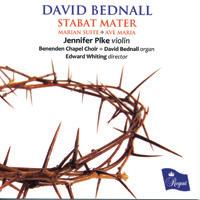
Benenden Chapel Choir
Violin: Jennifer Pike
Dir: Edward Whiting
Organ: David Bednall
Stabat mater (11 movements); Marian Suite for violin & organ; Ave Maria.
REGENT REGCD481 TT 74:07
How marvellous that a school should commission a work such as the Stabat Mater, and then have their choir record it and the
Choir of Liverpool
Metropolitan Cathedral
Dir: Christopher McElroy
Organ: Richard Lea & James Luxton
Gloria (Liverpool Mass); Ave verum corpus; Magnificat primi toni; Alma redemptoris mater; Ave regina caelorum; Regina caeli; Salve regina; The Reproaches; O sacrum convivium; Celtic Blessing; Cantate; Salve regina à 8; Crux fidelis; Caro mea; Ave Maria; Regina caeli à 4; Pater noster; Magnificat octavi toni; Placare Christe servulis; Psalm 150.
PRIORY
Colin Mawby’s prolific contribution to the Catholic choral tradition has been outstanding, and it seems only fitting that Priory have issued a tribute disc to celebrate his 80th birthday. Whilst only a small number of composers were writing for the Catholic Church after Vatican II, Mawby continued composing using Latin texts, some of which were for use at Westminster Cathedral where he began his career as Assistant Director of Music, becoming Director in 1961. His connection with Liverpool Metropolitan Cathedral was sealed in 1967 when he was commissioned to compose a mass setting in English, and it seems appropriate that this disc begins with a setting of the Gloria from this work, although slightly adapted using the somewhat ugly revised Catholic text of 2012. The writing is quite stunning, embracing parts for cantor, choir and instruments, and embodying the Vatican II ethos of congregational participation. An accessible refrain permeates the movement.
A number of very attractive pieces are included on the disc, amongst many, Alma redemptoris mater and Cantate. The beautiful Ave verum corpus is sung with sensitivity even if the climax seems a little brash. Those who know the Metropolitan Cathedral will be aware of its swimming acoustics and, for my ears, there are times when the choir seems rather remote and the organ exceedingly forthright, especially marked in the use of the trumpet stop in Cantate. However, this is more than compensated for by the performance of the setting of Psalm 150 with its memorable refrain and written in the composer’s characteristically accessible style.
David ThorneStefan Engels
Organ of Michaeliskirche, Hamburg
Three Pastels Op. 92; Music for Organ
Op. 145 (Preambulo; Canzona; Solfeggio e Ricercare); Passacaglia & Fugue on BACH
Op. 150
PRIORY PRCD 1134 TT 71:18
Between the two World Wars Karg-Elert’s organ works were much in vogue with British organists. His impressionistic style and highly coloured harmonic language were well suited to an era in which organ-builders, most notably Henry Willis III, seemed preoccupied with inventing new and delectable tonecolours, for which Karg-Elert’s later works seemed to present a ready vehicle. Such delicacies make up a great part of this CD, the 13th and last in Priory’s monumental project to record his complete works for organ, but the Passacaglia & Fugue on BACH serves to redress the balance and remind us of the composer’s real stature. The music is admirably served by both instrument and organist; even if the Michaeliskirche organ is devoid of Willis’s strange inventions, it makes a supremely beautiful sound and is rich in sonorities which are deployed with great imagination by a player who is fully equal to this music’s technical and interpretative demands. Organists and lovers of the instrument will find much to enjoy here.
Timothy Storey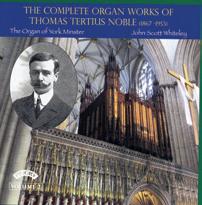

By the sea shore from Three Idylls; Chorale prelude; Prelude & Fugue in E min; Sonata No. 5 in A Op. 159; Four Intermezzi Op. 189; Installation March Op. 108.
PRIORY PRCD 1161 TT 74:07
Daniel Cook has undertaken an important task in recording all the organ works of Stanford. This, the fourth volume of the series, is recorded in Westminster Abbey, where Daniel Cook is Sub Organist, though he is to take over as Master of the Choristers at Durham Cathedral in the autumn. A fifth volume will complete the series. Stanford’s settings of the evening canticles are sung in every cathedral and sizeable church of the land. However, little of his organ music is ever played, apart from his two sets of Six Short Preludes and Postludes
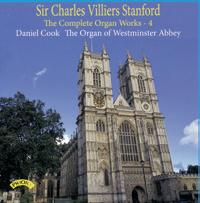
The major work in this volume is Stanford’s Fifth Organ Sonata. Unlike his previous sonatas, this final one has no break, though there are three distinct movements. The whole sonata is based on Stanford’s own tune ‘Engelberg’, written for the hymn ‘For all the saints’. The theme is subject to splendid development and colourful variation. Unusually the middle movement is a scherzo, rather than a slow movement, and the sonata ends with a glorious statement of the tune on full organ.
Another impressive work on this CD is Stanford’s first published organ piece, his Prelude and Fugue in E minor composed in 1874 when Stanford was 22, which reveals his considerable skill at contrapuntal writing. The Four Intermezzi Op. 189 were composed nearly 50 years later when, surprisingly,
he was short of money. The last Intermezzo is a charming piece based on the Londonderry Air. The final piece on the disc is an arrangement made by Stanford of his triumphant Installation March of 1908 (originally for military band), composed for the installation of John Strutt as Chancellor of Cambridge University.
Daniel Cook’s playing is excellent throughout, with the music sounding particularly fine on the Westminster Abbey organ, which he obviously knows so well.
Paul MorganJohn Scott Whiteley
The Organ of York Minster
Toccata & Fugue in F min; Autumn, 1932; Air & Variations in A flat, Introduction & Fugue in G min; Legend; Prelude on ‘Melcombe’; Prelude on ‘Dominus regit me’; Triumphal March; Prelude on ‘Stracathro’; Sunshine Scherzo; Prelude on ‘Walsall’; Prelude on ‘Picardy’; Prelude on ‘Charity’; Sonata in A. PRIORY PRCD1129
T Tertius Noble couldn’t have a more persuasive advocate than John Scott Whiteley, but I have to confess to being less than 100% engaged with much of the repertoire on this CD. The hymn preludes would probably/possibly pass muster as voluntaries before or after a service, but frankly they don’t on a CD – in my opinion, of course. The larger-scale pieces are more interesting, especially the Air and Variations in A flat, written for and rejected by W T Best. The three-movement Sonata has some good things to say; the first movement has plenty of vigour, even swagger. The Sunshine Scherzo is an amusing petit morceau – Hollins would have been pleased to write this!
Neil Collier has, as usual, done an excellent job putting the sound and acoustic of York Minster on disc. If you are a collector of The Complete Works of … then you’ll want to buy this CD; if not, the relatively few substantial pieces may put you off. I’m sorry not to sound more enthusiastic.
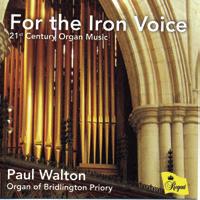 Roger Judd
Roger Judd
Paul Walton plays the organ of Bridlington Priory John Pickard Tesserae; Alan Gibbs Pastorale; Elizabeth Winters Evening Voluntary; Nicolas Kingman Three Pieces – Hommage à Jehan Alain; Paul Fisher Scherzo; Philip Wilby For the Iron Voice; David Briggs Song without words; The Legend of St Nicholas. REGENT REGCD 483 TT 77:37
Being an album of 21st-century organ music, few will know many of these pieces, so this CD has its challenges. John Pickard describes his Tesserae as a ‘mosaic from several strongly differentiated fragments, which are repeated and juxtaposed’. Unfortunately, I found my attention wandering from the music at times, but noticed the style of Messiaen having an increasing influence.
The Pastorale by Alan Gibbs takes the form of a peaceful meditation, whilst Evening Voluntary by Elizabeth Winters is constructed around a passacaglia, with ideas symbolising mist, cloud and confusion. Not, therefore, exactly a typical evening
voluntary, despite its tranquil ending.
Nicolas Kingman’s Hommage à Jehan Alain was written for Paul Walton, who gave its first performance in 2009 at Bristol Cathedral, where Paul is Assistant Organist. The second movement quotes the melody of Alain’s Litanies, with the last movement being a vigorous toccata.
Welcome light relief is found in Paul Fisher’s Scherzo, which is modelled on Duruflé’s splendid Scherzo Op. 2. He teases us by unexpectedly squeezing in ‘Daisy, Daisy, give me your answer, do’! Such humour is indeed rare in organ music.
Philip Wilby’s For the Iron Voice (and the title of this CD) takes its inspiration from a description of the huge organ of Winchester Cathedral by the 10th-century monk Wulstan: ‘Like thunder a voice of iron assails our ears, driving out every other sound’. The three movements exploit the colours of the modern organ.
The disc concludes with two pieces by David Briggs, a serene Song without Words and The Legend of St Nicholas which is in four movements, each depicting a legend about the saint.
Paul Walton’s virtuosity as an organist is apparent throughout and he displays the huge organ of Bridlington Priory to excellent effect. The question, however, is: are you up to the challenge?!
Paul MorganAndrew Arthur
The Neumeister Chorales; Toccata & Fugue in D min; Prelude & Fugue in A; Prelude & Fugue in C; Allabreve; Canzona; Fantasia in C; O Gott, du frommer Gott.
PRIORY PRCD 1176 TT 155:31
This recording celebrates the tenth anniversary of the inauguration of Carsten Lund’s organ in the chapel of Trinity Hall Cambridge. The instrument compares in size to the 2-manual 1703 Wender organ of the Neue Kirche in Armstadt where the teenage Bach was appointed to his first post. The two-disc set covers a comprehensive range of chorale settings, many of which were only discovered as recently as 1984. The chorales are based on themes linked to the main seasons of the church’s year although some would be more familiar within the liturgy of the Lutheran church. The Prelude and Fugue in A, Allabreve in D and the infamous Toccata and Fugue in D minor are also included as examples of his early compositional style. The alacrity of the playing is not only impressive and highly stylistic, but Arthur’s choice of registration is most appealing and reflects the versatility of the instrument. The pieces clearly reveal the composers who greatly influenced Bach, including Buxtehude and Pachelbel. These discs are a welcome addition for the connoisseur whilst serving as a didactic compilation for the scholar. The liner notes, also written by Andrew Arthur, are most fascinating.
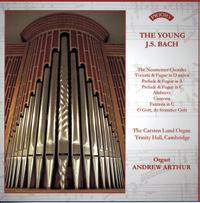 David Thorne
David Thorne
Tom Winpenny
St Giles’ Cathedral, Edinburgh
L’Ascension (Majesté du Christ; Alléluias sereins; Transports de joie; Prière du Christ); Diptyque; Offrande au Saint-Sacrement; Prélude; Le banquet céleste; Apparition de l’Église.
NAXOS 8.573471 TT 66:33
I had the pleasure of reviewing Tom Winpenny’s recording of Messiaen’s La Nativité a while ago, and now I’ve had the additional pleasure of listening to a second volume of Messiaen’s music. For La Nativité Winpenny recorded on his ‘home’ organ in St Albans Cathedral but the latest recording takes us north to Edinburgh and the splendid Rieger organ in St Giles’ Cathedral. Like the Harrison & Harrison organ at St Albans, the Rieger, too, sounds terrific in this repertoire. The music here is amongst the earliest Messiaen wrote for his instrument, starting with the 1928 Le Banquet celeste, followed by the Diptyque, each of which displays the composer’s skill in spinning extremely slow music in a way that makes time seem to stand still. Winpenny’s performance of Apparition de l’Église éternelle is suitably apocalyptic. He also programmes the two pieces that were discovered posthumously, Offrande au SaintSacrement and Prélude
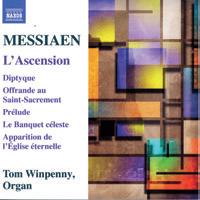
L’Ascension completes the repertoire on this CD, and the four movements receive excellent performances, the third, Transports de joie, sounding especially glorious on the St Giles Rieger.
At the budget price of Naxos CDs, this is a recording not to be missed – excellent recording (Adrian Lucas – Acclaim Productions), wonderful sounding organ, and a player totally on top of the task, musically and technically. What’s not to like?
Roger JuddThe Cavaillé-Coll organ of Parr Hall, Warrington
Guilmant Grand Choeur in D; March on a Theme of Handel; Saint-Saëns Fantaisie in E flat; Widor Andante cantabile from Symphony No. 4; Franck Fantaisie in A; Pastorale; Choral No. 3 in A min; Vierne Naïades; Duruflé Prelude & Fugue on the name ‘Alain’. PHW CD1 TT 81:26 available from www.rfisher.me/
Parr Hall, Warrington, houses the largest organ built in this country by France’s most famous organ-builder, Aristide Cavaillé-Coll. Built in 1871 for Bracewell Hall, the organ was bought in 1926 by Warrington Corporation and installed in Parr Hall by Henry Willis. Tonally, it remains very much in its original condition, but sadly it is rarely played and its condition is deteriorating. So it is good news that we can hear this historic organ on a CD played by Roger Fisher, Organist Emeritus of Chester Cathedral.
The disc combines recordings made in 1984 by Wealden Studios, and a private recording of a public recital in 2011. Although the recording quality of the latter is better, the condition of the organ and the overall quality of the playing is preferable on the 1984 recording.

The entire repertoire played on this CD was composed with a Cavaillé-Coll organ in mind, so we are able to hear the fierce reeds and distinctive string tones as intended by the composers. Guilmant’s Grand Choeur in D provides an excellent start. The pieces by Franck come across well, but it’s a pity that the distinctive Voix Humaine stop is missing in the Fantaisie in A; maybe there were technical reasons for this. The Saint-Saëns Fantaisie in E flat begins well, although extra fire would have livened up the second half. I particularly enjoyed the impressive agility heard in Vierne’s Naïades, and also in Duruflé’s Prelude & Fugue on the name Alain, which brings the disc to a conclusion. Let us keep our fingers crossed that this precious instrument can be preserved for future generations.
Paul Morgan
Bach Sinfonia from Cantata 29; Fugue à la Gigue; Chorale Prelude ‘O Mensch bewein, deine Sünde groß’; Dupré Prelude & Fugue in F min; Cochereau Cantem toto la Gloria; Reger Chorale Fantasia ‘Straf’ mich nicht in deinem Zorn’; Mahler trans Briggs Adagietto from Symphony No. 5; Briggs Disneyrama; Alain Litanies; Ravel arr Seutin Pavane pour une enfante défunte; Widor Allegro from Symphony No. 6; Improvisations on ‘Darwell’s 148’, ‘BACH’ and ‘Hereford’.
CHESTNUT MUSIC CD 011 (2CDs) TT 111:05
David Briggs and Gloucester are still synonymous some years after his departure, and the organ bears to this day the imprint of the tonal alterations which he supervised in 1999. After the rebuild by Hill, Norman & Beard in 1971 it had spoken with a distinctly French accent, and the 1999 work by Nicholsons added pedal stops of a distinctly French character, making the organ especially suitable for the Continental repertoire and French-style improvisation of which Mr Briggs is such a renowned exponent. These two CDs were recorded in April 2016 at a public concert and at a private recital for the local organists’ association, so there is a certain amount of rather desultory applause. The recorded sound is somewhat distant and over-reverberant, but it certainly conveys the special atmosphere of this magnificent cathedral. Perhaps the work of greatest interest to collectors will be Reger’s mighty set of variations on the tune known to us as Wurttemberg, commonly sung to ‘Christ the Lord is risen again’. Player and organ do not seem quite comfortable with this music, and at times the chorale melody disappears without trace. Otherwise one might observe that Mr Briggs likes his music fast, furious and noisy; in music of a more reflective nature he does not always succeed in imparting a sense of forward movement to a slowpaced melody. One should not be over-critical, for he is a very fine player, and there is much to enjoy here.
Timothy StoreySebastian Thomson plays the organ of Keble College, Oxford Hewitt Jones Angels of Creation; Briggs Berceuse; Toccata for St Matthew’s Day; Simon Whalley Festal Paean; Bednall Rhapsody; Moore Variations: Noël Nouvelet; Neil Cox Laudate; John Hosking The Fourteen Stations of the Cross.

CONVIVIUM RECORDS LC 30867 TT 76:00
Promoting contemporary organ music both ‘live’ and on disc is far from easy. Sebastian Thomson is to be congratulated in commissioning works for this CD, a collection of new works for organ. The first is David Bednall’s Rhapsody, premiered at St Paul’s Cathedral in 2010. The subsequent commissions were premiered on the organ at Keble College, also the venue of this recording. The additional works by David Briggs and Philip Moore effectively complement the commissioned compositions. I enjoyed many of the pieces, especially Thomas Hewitt Jones’s jubilant and exciting writing conceived both harmonically and melodically in a style reflecting neo-English roots. Simon Whalley’s Festal Paean and Neil Cox’s Laudate are full of character and do not make particularly taxing listening or likewise, the pieces by Philip Moore and David Briggs. David Bednall’s output is usually most accessible, but the Rhapsody is deliberately uncompromising especially in
its use of the tritone when combined with dense harmonic writing. Bearing in mind the size of St Paul’s, the inaugural performance might well have created a different impression. The improvisatory quality in John Hosking’s Fourteen Stations of the Cross effectively explores the conflicting moods and emotions within the Stations and demonstrates the superb wealth of colours on the Tickell instrument in Keble. Thomson’s performances are exemplary, and the recording balance captures the space of the chapel admirably.
David Thorne
John Kitchen plays the organ of the McEwan Hall, University of Edinburgh
Anon Gaudeamus igitur; Cecilia McDowall Celebration; Johan Helmich Roman Sinfonia di chiesa; Purcell 3 Trumpet Tunes; André Campra Rigaudon; Leighton Et resurrexit; Hollins Concert Overture in C; Widor Marcia from Symphony No. 3; Salomé Grand Choeur in G; Guilmant Marche religieuse; Handel Overture & March.
DELPHIAN DCD 34163 TT 72:00
John Kitchen is Organist to the University of Edinburgh, and this recording is the first to be made on the restored organ in the McEwan Hall, and very fine it sounds. The title of the CD reflects the ceremonial rôle that Kitchen and the organ play in the life of the university. His programme further stresses the link with pieces that would feature at graduation ceremonies covering processions of the academic body into and out of the hall. Three composers are featured who have especial significance, being closely connected to music life in Edinburgh.
Alfred Hollins’s Concert Overture in C major is a classic of the genre, guaranteed to get the toes tapping. Kenneth Leighton was for many years the Professor of Music at the university, and it is really good to have this excellent performance of Et resurrexit. This is a major contribution to the corpus of organ music written in these isles during the 20th century. One of Leighton’s students was Cecilia McDowall, and Celebration was written for a graduation ceremony at the University of Portsmouth in 2014, thus neatly tying together the main strands of this recital.
John Kitchen delivers all with his usual brand of panache and sensitivity, and the organ’s voice is splendidly captured in this vivid recording.
Roger JuddBrian Mills is studying the work involved in bringing Bernstein’s Chichester Psalms to Chichester Cathedral (2018 is Bernstein’s centennial). If any reader has recollections of this event in 1960, please do be in touch with him – chi.psalms.65@gmail.com or 01243 513503.

Boëly Fantaisie et Fugue in B flat; Saint-Saëns Fantaisie i in E flat; Eben Moto Ostinato; Mendelssohn Prelude & Fugue in E min; Bach 7 Chorale Preludes from Orgelbüchlein; Messiaen Les Anges; Vierne Naïades; Reubke Sonata on the 94th Psalm.
REGENT REGCVD 003 TT 69:37
The audio-visual DVD has all the hallmarks of being edited by a musician (less frequent than one imagines). The cutaway shots return when there are moments of virtuosic interest, with judicious focus on the feet and pedalling. The falling ladder sequence in Les Anges and the babbling springs in Naïades are not throwaway shots, but encourage a deeper appreciation of the music. The lighting is more than adequate for all the console shots, something often overlooked.
There are long, panning views of the city of Bath, showing all its hustle and bustle and the immaculate, world-renowned architecture. The shots inside the Abbey give a tremendous sense of its size and space with some intriguing focus on details that may otherwise have been overlooked.
We have come to expect brilliant sound quality from Regent, and this disc does not disappoint. The recording is almost close enough to hear manual ‘percussion’, but distant enough to endow the recording with a warm halo of the Bath Abbey acoustic (which I am reasonably convinced is the natural Abbey acoustic, not a digital rendering of St Ouen, or the like!).
The DVD extras are very well pitched towards an audience who may be ‘conversant’ rather than ‘fluent’ in organ-speak. King talks authoritatively to the camera, offering useful and interesting information on both organ and repertoire. He speaks engagingly and with good humour about the context of the music on the programme. There is an excellent tour of the organ and a demonstration of the many different tonal colours available to the player that is really successful. King also offers a short and illuminating history to Bath Abbey.
What a fitting valediction this is for Peter King, who leaves behind a legacy of excellence at Bath Abbey. Quite apart from the masterfully assured playing, this new release from Regent conveys something of a warm and affable portrait of a man completely at one with the monumental Klais of the Abbey.
The presentation of the disc is sharp. The inclusion of the audio CD represents great value but also spans two audiences: the audio connoisseur and those curious about the behindthe-scenes work at the console. There are revealing insights into King’s playing; the registration and stop management in Reubke’s 94th Psalm, the calm and steady movement of the hands in fast passages, the use of the Stepper, and even the A3 pad with reductions of the score to help with pagination! These are interesting and useful to aspiring young organists.
One often expects a variety of voices on DVD extras – clergy, historians etc – but in this case the whole product feels like a personal portrait and celebration of Peter King’s time at Bath. It seems appropriate, therefore, that we are given an insight into King’s valuable and comprehensive knowledge of the music, the instrument and the building. My only slight criticism is that in the editing process Peter King (in the absence of an expensive autocue) can be seen reading from a script. With such a wealth of descriptive cut-away shots, it seems curious that these might make the final edit. But this is a very minor point.
The navigation to and from the home screen to the DVD extras is straightforward, professional-looking and intuitive. The presentation of the DVD artwork is of a very high quality and the sleeve notes go into even more detail than the spoken introductions on the DVD extras. The programme of music presented here is a good mixture of the familiar with the less well known – both of which work, seemingly without compromise, on the Klais.
Particularly worthy of note is the formidable Moto Ostinato from Sunday Music by Petr Eben. I often think of this piece as, perhaps, an organ equivalent of the first movement
of Shostakovich’s 7th Symphony (the ‘Leningrad’), with its relentless, marching rhythmicity. The music builds with arresting forward propulsion without respite and ends with Eben’s characteristic ‘cat-clawing’ across three manuals. King manages this foreboding ostinato with imaginative colour and impeccable articulation. It is one of the more esoteric works on this disc and is worth every second of investment for those coming new to this kind of music.
In essence, this release is a triumph for Regent Records, for Klais, for Bath Abbey but most of all for Peter King. It is a disc I will treasure.
George RichfordJonathan Hope
Purcell arr Hope Two Trumpet Tunes and Air; Bach Toccata and Fugue in D minor; Vaughan Williams Rhosymedre; Dukas arr Hope The Sorcerer’s Apprentice; Handel Organ Concerto No. 13 in F (mvts 1 & 2); Cochereau trans. Filsell Final (from Symphonie de Boston); Liszt arr Rogg St Francis of Paola walking on the waves; Howells Psalm Prelude Set 2 No. 1; Elgar arr Lemare
Pomp and Circumstance March No. 1 in D. (Bonus feature)
Sowerby Pageant
PRIORY PRDVD 14 – DVD, Blu-ray & CD
only rival of which must be John Loosemore’s case at Exeter, of similar date. In both buildings successive generations of organ-builders have shown considerable ingenuity in cramming large modern instruments into old cases, and at Gloucester the reconstruction supervised by Ralph Downes in 1971 was drastic, even revolutionary.
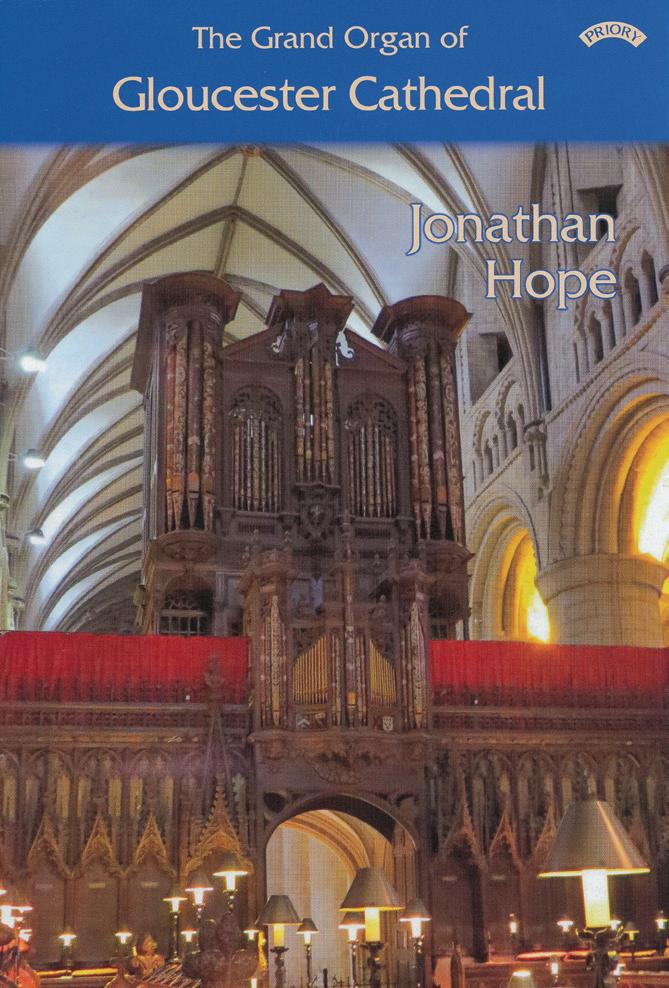
At its heart was a thorough restoration of the casework and the historic pipework which it contains, and the result is stunning, a delight to the eye; we begin with close-ups of delicatelycarved woodwork and the decorated pipes which adorn the sides and front of the case and which were so painstakingly conserved. Unfortunately, a similar sensitivity did not extend to the design of the console; our gaze is sadly drawn from the richness of dark historic woodwork to a standard Hill, Norman & Beard product with ugly sans serif lettering and square pistons, and an incongruous light oak finish. The ultimate indignity is that it was designed for a 61-note compass even though Gloucester’s is only 58 notes; rather ill-fitting wooden blocks have been inserted to fill the gap at the top of the manual keyboards.
It is, though, great fun to watch the player, even though Mrs Storey wonders whether he should have worn a jacket, and I wish that he had got out the boot polish and worked up a shine on the sides of his organ shoes. What is impressive to behold is Mr Hope’s skilful and imaginative switching from one manual to another in the Bach Fugue; this might be a means of showing the uninitiated why organs have several keyboards. The Sorcerer’s Apprentice might well perform a similar function, as it is fun to watch as well as entertaining to hear.
During a lovely [sic] performance of Vaughan Williams’s prelude on the Welsh tune Rhosymedre (or ‘Lovely’), we embark on the first of several tours of the cathedral. Due respect is paid to the famous fan-vaulting in the cloisters, to the majestic Romanesque nave, and to the glass, not least the memorial windows to musicians including Howells, whose Psalm Prelude sadly confirms the Gloucester organ’s unsuitability for this sort of music. We wander round the outside of the cathedral, paying a visit to Beatrix Potter’s house, and linger outside several public houses including the Dick Whittington, whose cat duly appears on a cushion inside the cathedral. By the end of the music we are gazing on a (very fine) war memorial to the accompaniment of Pomp and Circumstance, which sadly suits the organ no better than Howells.
Anyone buying this will surely do so in order to watch the pictures, so let’s start there. Gloucester’s organ is housed in an exceptionally beautiful pair of 17th-century cases, the
Gloucester’s Assistant Director of Music shows himself a firstrate player; he and the instrument are very much at one in Cochereau and Liszt, the highlights of a DVD which fully succeeds in its task of showing off this somewhat untypical cathedral organ. As a kind of coda to the main programme Mr Hope talks about the organ’s character and history, with a demonstration of several of the registrations he has employed. Especially fascinating is his description of the recent attempts to render the organ more colourful and versatile; Ralph Downes left the cathedral a very austere instrument in 1971. So illuminating and interesting is Mr Hope that it might be good to play his little talk before venturing upon the programme itself; nor should one overlook his ‘bonus track’, a scintillating performance of Leo Sowerby’s fearsome Pageant, a work only to be tackled by those with an advanced and foolproof pedal technique. In all, this DVD is a great success, with stunning visuals and sound, a skilfully chosen programme and excellent performances.
Timothy StoreyCampaign for the Traditional Cathedral Choir is delighted to announce that in 2017 it is in a position to offer funding to traditional all-male-voice cathedral, church and school choirs and lay-clerks.
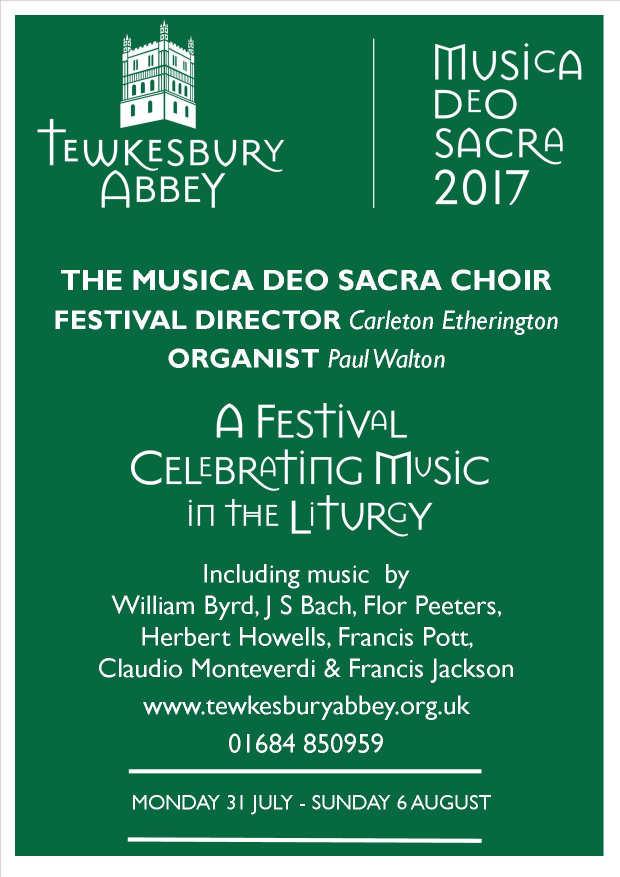
Consideration will be given to applications that require help to fund the support of the vocal development of boy choristers in churches and schools whose services are open to the public. Also to help support a young lay-clerk.
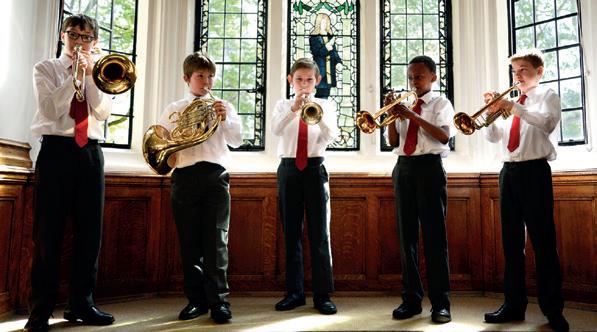
Applications with details of a proposal to show how funding would be used should be sent by email to: The CTCC Secretary at info@ctcc.org.uk
Campaign for the Traditional Cathedral Choir
www.ctcc.org.uk
enquiries@howellstrust.org.uk

‘...the most superb recordings of choral and organ music from some of the world’s finest musical institutions... ’ Sydney Organ Journal
VOX CLARA:

Music by Gabriel Jackson
The Choir of Truro Cathedral directed by Christopher Gray, Luke Bond (organ), Joel Garthwaite (saxophone)
'Joel Gar thwaite (saxophone) and Luke Bond (organ) sprinkle stardust over ever ything they play ’ Obser ver
‘ irresistible allure ’ Sunday Times
‘ a distinct collection most of it written for the finely trained Truro Cathedral Choir who accomplish ever ything asked of them with consummate ease ’ ***** Choir & Organ
TO BE A LIGHT: Evening Canticles for Upper Voices

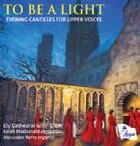

Ely Cathedral Girls’ Choir directed by Sarah MacDonald
REGCD477

Music by Archer, Aston, Briggs, Harris, Howells, Lole, MacDonald, Marshall, McDowall, Moore, and Rose
DAVID BEDNALL:
Stabat Mater, Marian Suite, Ave Maria
Jennifer Pike (violin), David Bednall (organ), Benenden Chapel Choir directed by Edward Whiting
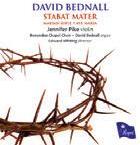
'His Stabat Mater is an engrossing and substantial composition from which Bednall extracts maximum emotional and dramatic effect’ **** Choir & Organ
‘ profound enough to leave scars and haunt your soul ’ Classical Music Sentinel
August 20th - 27th 2017 The Priory Church
Edington, Wilts BA13 4QN
“The Beatitudes” Beatitudes”
Director: Richard Pinel
Commissions from Robert Walker and Piers Kennedy
Friday Requiem Mass: Gabriel Fauré
Information from 01380 830512 www.edingtonfestival.org
CHRISTMAS FROM WORCESTER:
A tribute to Sir David Willcocks
Worcester Cathedral Choir, Worcester Festival Choral Society, Sennet Brass, Christopher Allsop (organ), directed by Peter Nardone
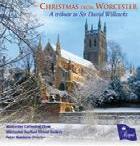
23 of Sir David Willcocks’s best-known Christmas arrangements, ranging from exquisite gems of quiet stillness to rousing shouts of majestic praise
PETER KING plays the Klais organ of Bath Abbey
REGDVD003 - DVD/CD set
Peter King, Organist Emeritus of Bath Abbey, performs a wide-ranging concert demonstrating the virtuosity and versatility of both player and instrument
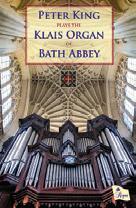
Available from all good CD retailers and from Regent direct REGENT RECORDS, PO Box 528, Wolverhampton, WV3 9YW Tel: 01902 424377, www regentrecords com (with secure online ordering)
Retail distribution by RSK Entertainment Ltd www rskentertainment co uk




Available in the USA from the Organ Historical Society www ohscatalog org International distribution by Launch Music International Ltd philip@launchmusicinternational co uk

